Medical devices and delivery systems for delivering medical devices
Paul , et al. December 31, 2
U.S. patent number 8,617,236 [Application Number 13/287,420] was granted by the patent office on 2013-12-31 for medical devices and delivery systems for delivering medical devices. This patent grant is currently assigned to Sadra Medical, Inc.. The grantee listed for this patent is Brian D. Brandt, Daniel Hildebrand, Emma Leung, Kenneth M. Martin, Brian McCollum, David Paul, Amr Salahieh, Benjamin Sutton. Invention is credited to Brian D. Brandt, Daniel Hildebrand, Emma Leung, Kenneth M. Martin, Brian McCollum, David Paul, Amr Salahieh, Benjamin Sutton.


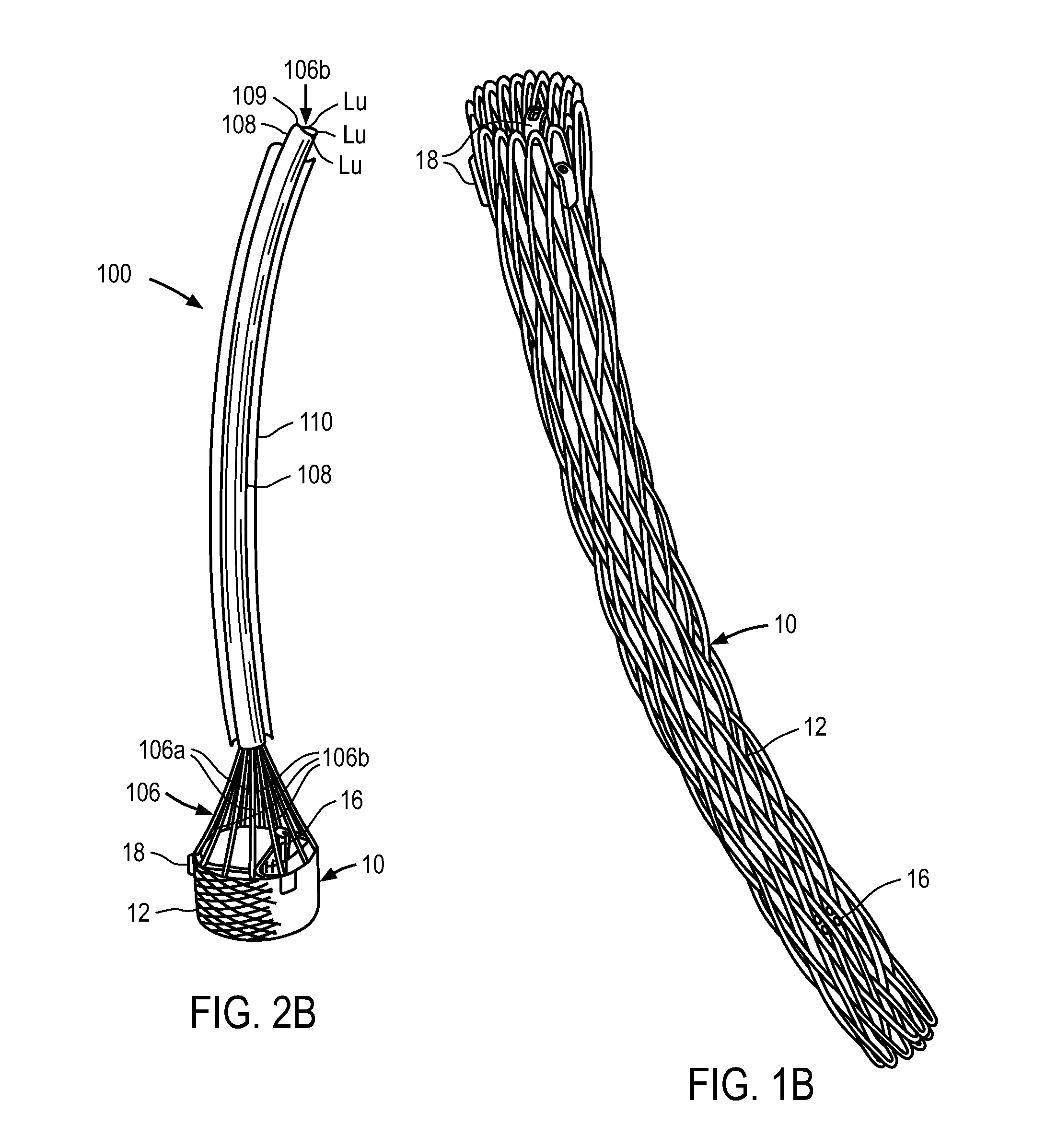

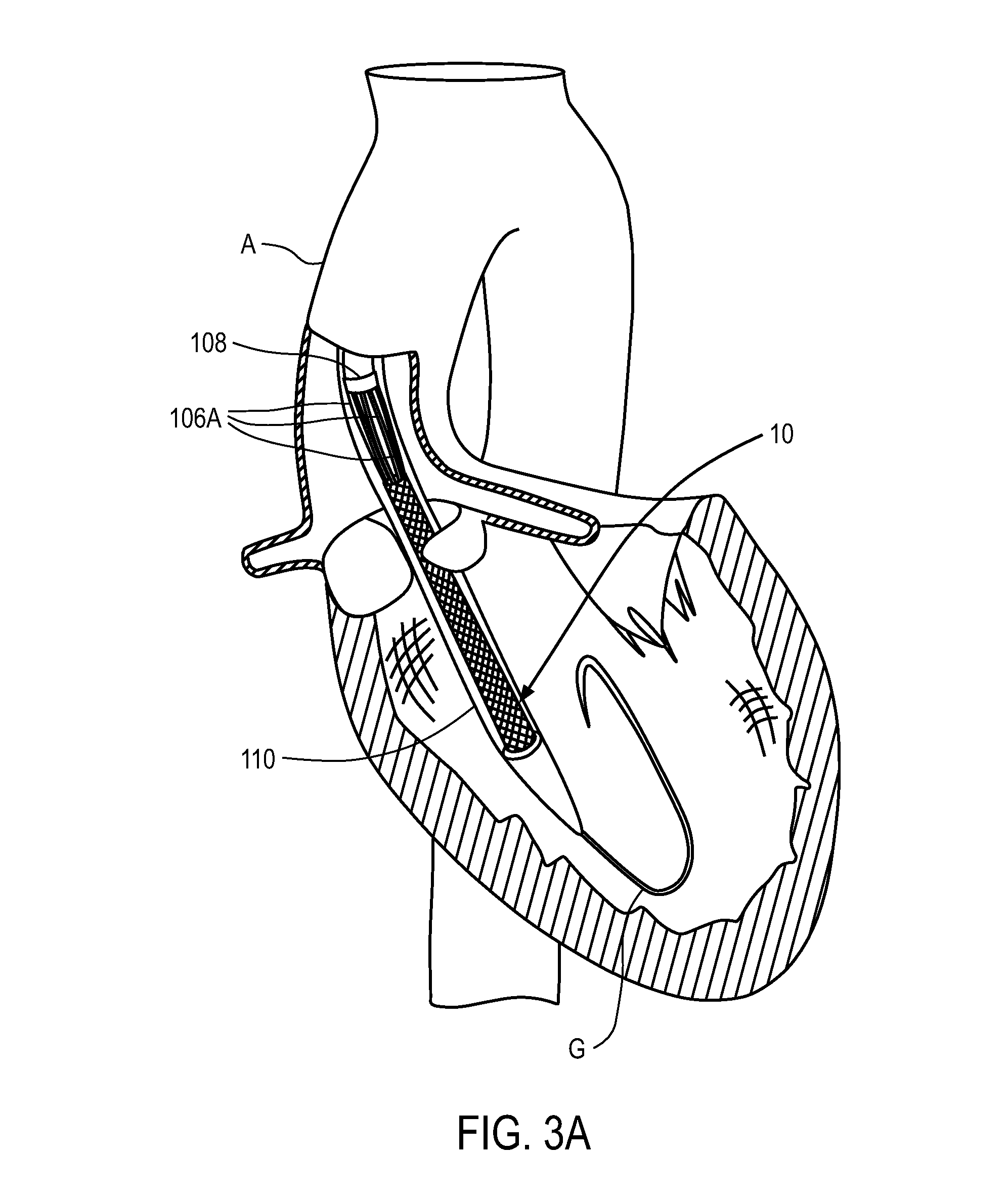

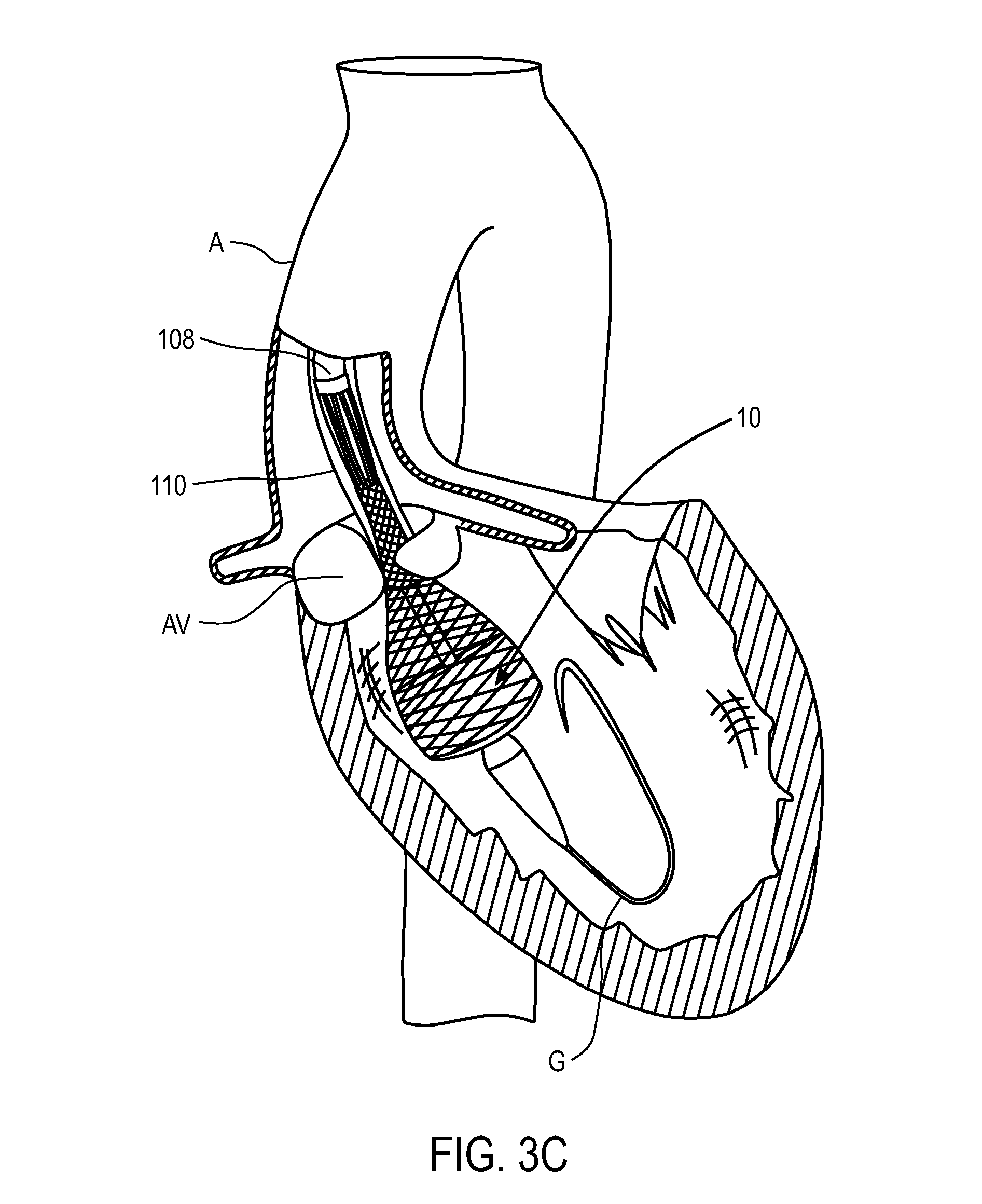

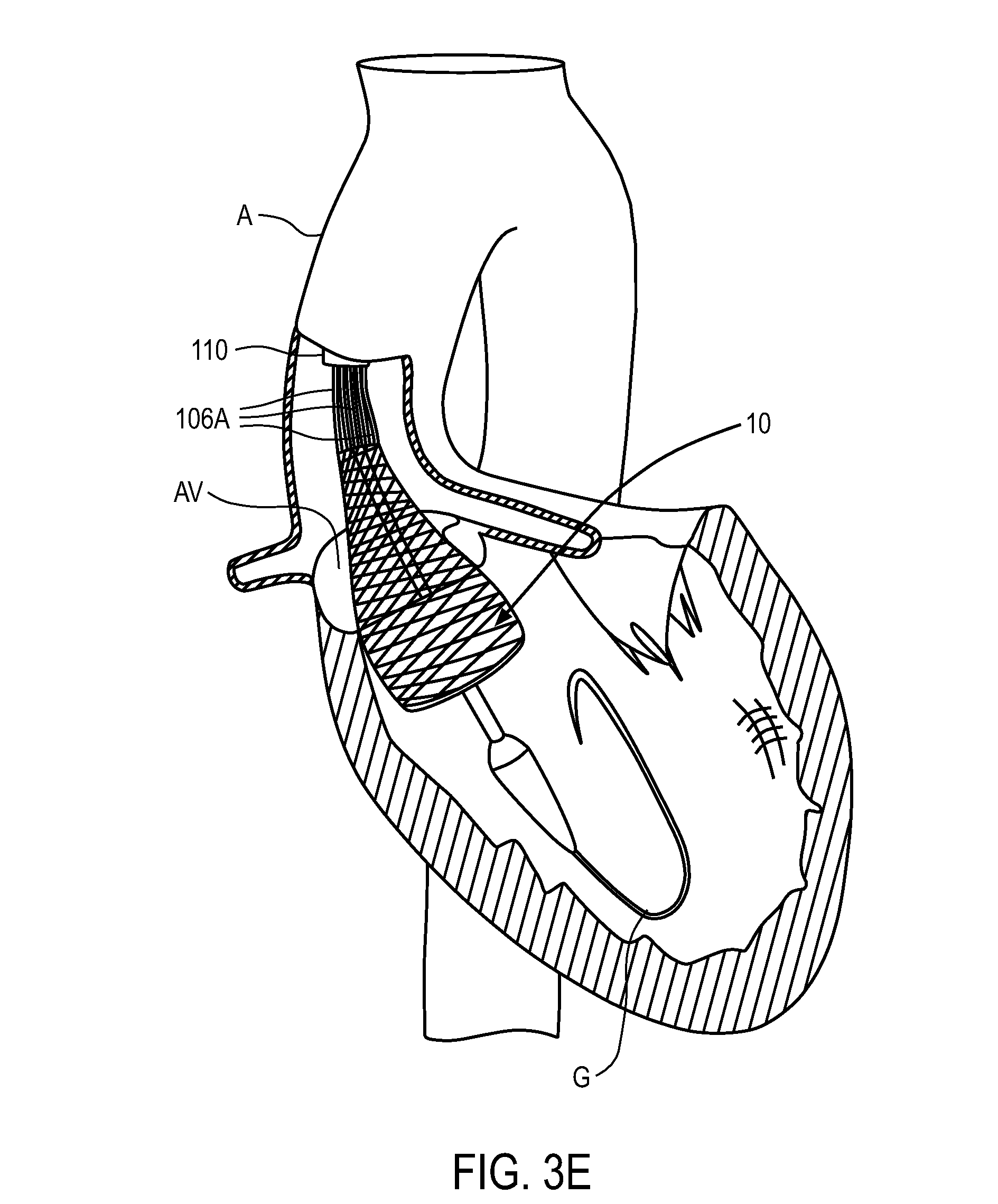
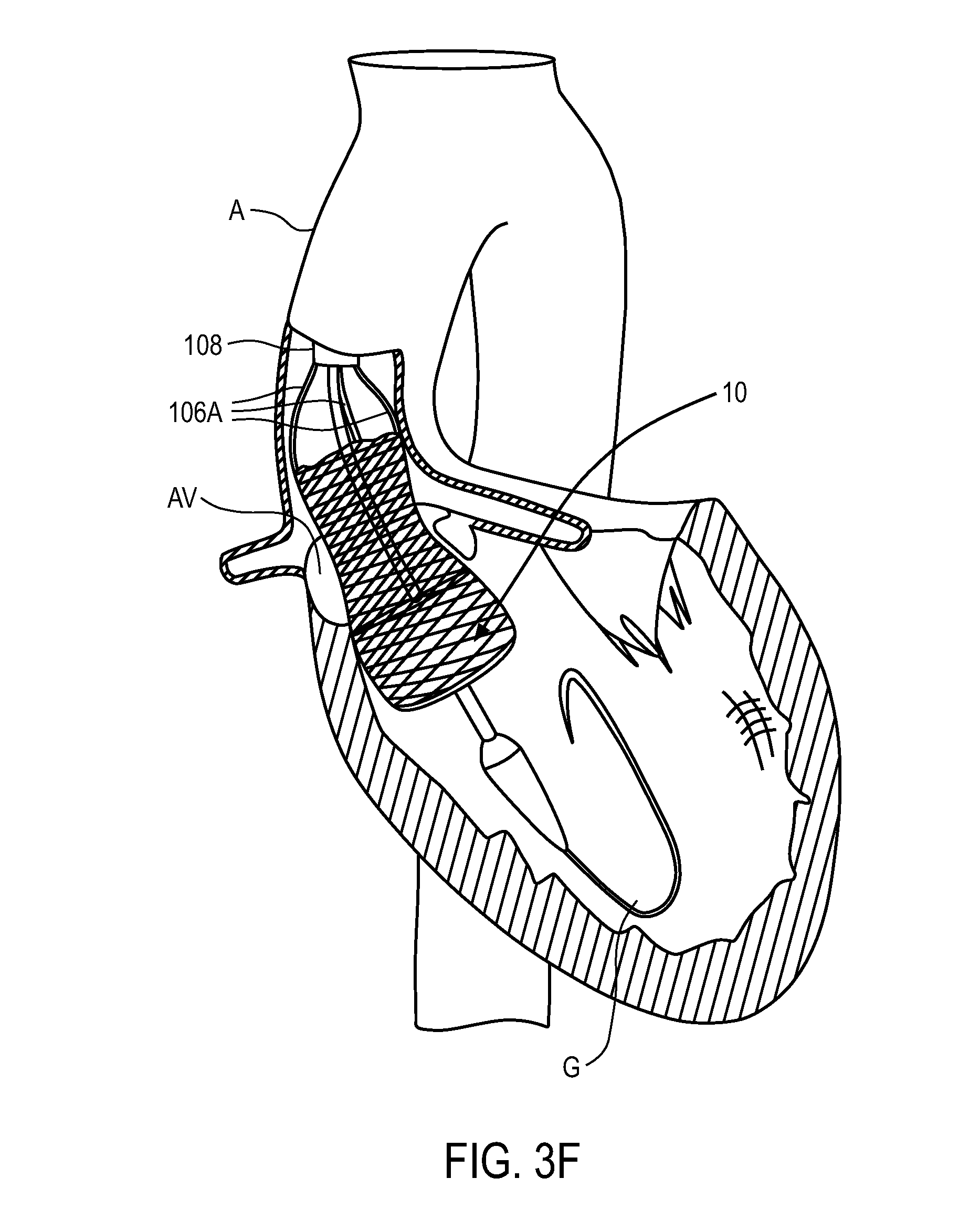
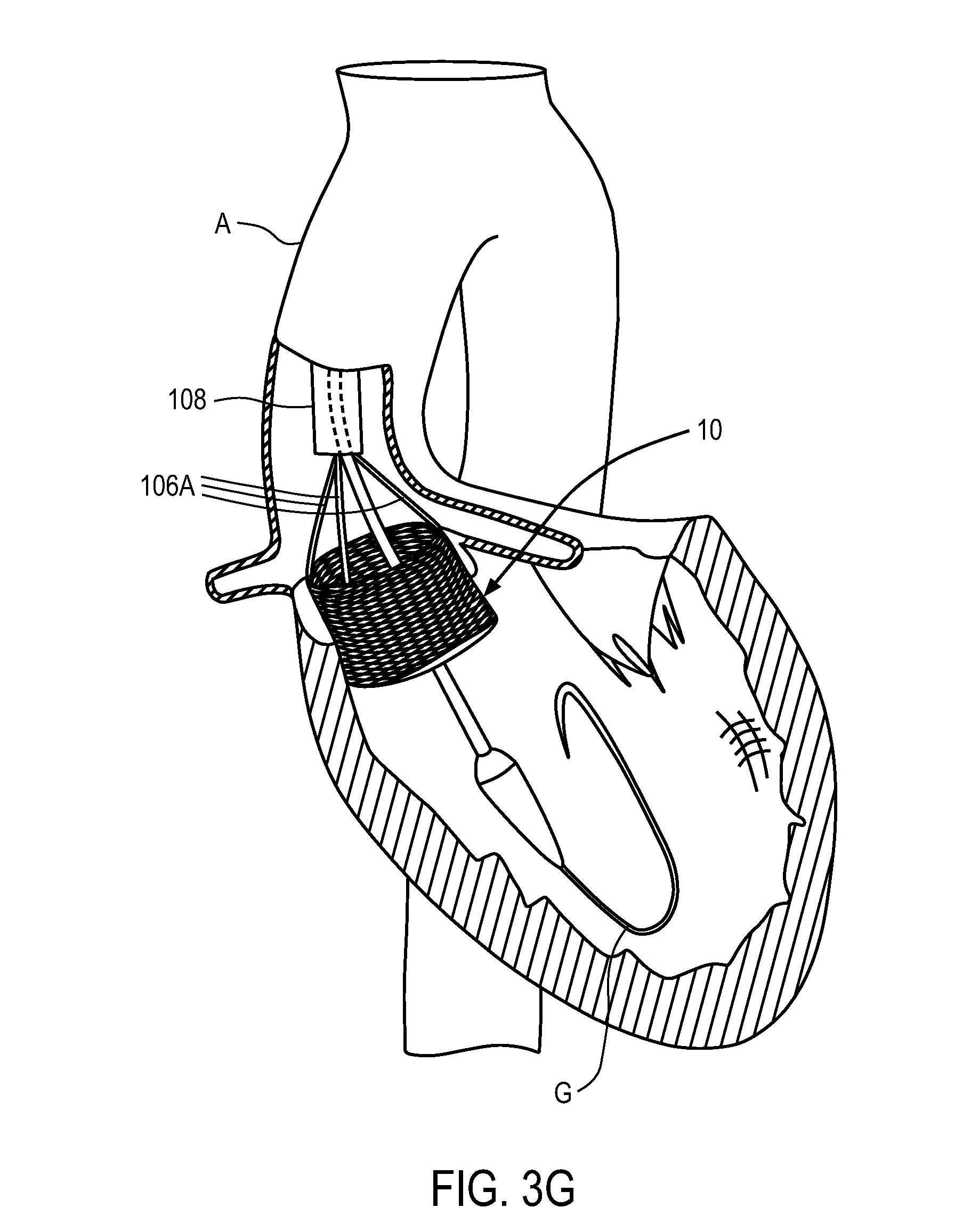
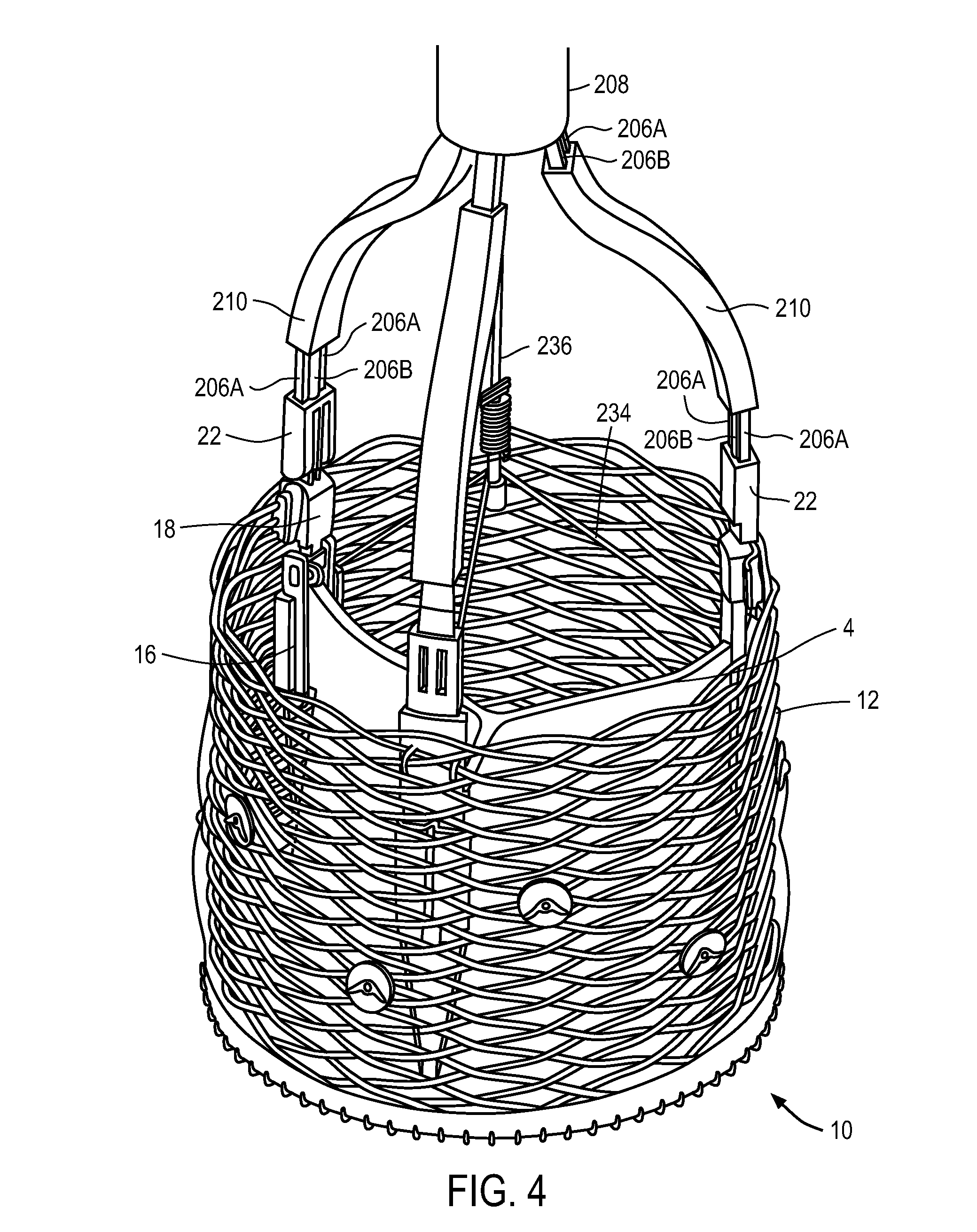
View All Diagrams
| United States Patent | 8,617,236 |
| Paul , et al. | December 31, 2013 |
Medical devices and delivery systems for delivering medical devices
Abstract
Medical devices and delivery systems for delivering medical devices to a target location within a subject. In some embodiments the medical devices can be locked in a fully deployed and locked configuration. In some embodiments the delivery systems are configured with a single actuator to control the movement of multiple components of the delivery system. In some embodiments the actuator controls the independent and dependent movement of multiple components of the delivery system.
| Inventors: | Paul; David (Scotts Valley, CA), Sutton; Benjamin (Scotts Valley, CA), McCollum; Brian (Redwood City, CA), Brandt; Brian D. (San Jose, CA), Leung; Emma (San Jose, CA), Martin; Kenneth M. (Woodside, CA), Salahieh; Amr (Saratoga, CA), Hildebrand; Daniel (San Francisco, CA) | ||||||||||
|---|---|---|---|---|---|---|---|---|---|---|---|
| Applicant: |
|
||||||||||
| Assignee: | Sadra Medical, Inc. (Los Gatos,
CA) |
||||||||||
| Family ID: | 42101265 | ||||||||||
| Appl. No.: | 13/287,420 | ||||||||||
| Filed: | November 2, 2011 |
Prior Publication Data
| Document Identifier | Publication Date | |
|---|---|---|
| US 20120046740 A1 | Feb 23, 2012 | |
Related U.S. Patent Documents
| Application Number | Filing Date | Patent Number | Issue Date | ||
|---|---|---|---|---|---|
| 12578463 | Oct 13, 2009 | 8328868 | |||
| 10982388 | Nov 5, 2004 | 7959666 | |||
| 11275912 | Feb 2, 2006 | 7824443 | |||
| 61104509 | Oct 10, 2008 | ||||
| 61151814 | Feb 11, 2009 | ||||
| Current U.S. Class: | 623/2.11; 623/1.11 |
| Current CPC Class: | A61F 2/966 (20130101); A61F 2/90 (20130101); A61F 2/2436 (20130101); A61F 2/2439 (20130101); A61F 2/2418 (20130101); A61F 2/2427 (20130101); A61F 2002/9528 (20130101); A61F 2/2412 (20130101); A61F 2002/9534 (20130101); A61F 2/243 (20130101); A61F 2/954 (20130101); A61F 2/95 (20130101); A61F 2220/0041 (20130101); A61F 2/9517 (20200501); A61F 2230/0067 (20130101); A61F 2/97 (20130101); A61F 2250/006 (20130101); A61F 2/2433 (20130101); A61F 2220/0075 (20130101) |
| Current International Class: | A61F 2/24 (20060101); A61F 2/06 (20060101) |
| Field of Search: | ;623/1.11,2.11,1.24,1.26,1.23,2.18 ;606/191-201 |
References Cited [Referenced By]
U.S. Patent Documents
| 15192 | June 1856 | Peale |
| 2682057 | June 1954 | Lord |
| 2701559 | February 1955 | Cooper |
| 2832078 | April 1958 | Williams |
| 3099016 | July 1963 | Edwards |
| 3113586 | December 1963 | Edmark, Jr. |
| 3130418 | April 1964 | Head et al. |
| 3143742 | August 1964 | Cromie |
| 3334629 | August 1967 | Cohn |
| 3367364 | February 1968 | Cruz, Jr. et al. |
| 3409013 | November 1968 | Berry |
| 3445916 | May 1969 | Schulte |
| 3540431 | November 1970 | Mobin-Uddin |
| 3548417 | December 1970 | Kischer |
| 3570014 | March 1971 | Hancock |
| 3587115 | June 1971 | Shiley |
| 3592184 | July 1971 | Watkins et al. |
| 3628535 | December 1971 | Ostrowsky et al. |
| 3642004 | February 1972 | Osthagen et al. |
| 3657744 | April 1972 | Ersek |
| 3671979 | June 1972 | Moulopoulos |
| 3714671 | February 1973 | Edwards et al. |
| 3755823 | September 1973 | Hancock |
| 3795246 | March 1974 | Sturgeon |
| 3839741 | October 1974 | Haller |
| 3868956 | March 1975 | Alfidi et al. |
| 3874388 | April 1975 | King et al. |
| 3997923 | December 1976 | Possis |
| 4035849 | July 1977 | Angell et al. |
| 4056854 | November 1977 | Boretos et al. |
| 4106129 | August 1978 | Carpentier et al. |
| 4222126 | September 1980 | Boretos et al. |
| 4233690 | November 1980 | Akins |
| 4265694 | May 1981 | Boretos et al. |
| 4291420 | September 1981 | Reul |
| 4297749 | November 1981 | Davis et al. |
| 4323358 | April 1982 | Lentz et al. |
| 4326306 | April 1982 | Poler |
| 4339831 | July 1982 | Johnson |
| 4343048 | August 1982 | Ross et al. |
| 4345340 | August 1982 | Rosen |
| 4373216 | February 1983 | Klawitter |
| 4406022 | September 1983 | Roy |
| 4423809 | January 1984 | Mazzocco |
| 4425908 | January 1984 | Simon |
| 4470157 | September 1984 | Love |
| 4484579 | November 1984 | Meno et al. |
| 4501030 | February 1985 | Lane |
| 4531943 | July 1985 | Van Tassel et al. |
| 4535483 | August 1985 | Klawitter et al. |
| 4574803 | March 1986 | Storz |
| 4580568 | April 1986 | Gianturco |
| 4592340 | June 1986 | Boyles |
| 4602911 | July 1986 | Ahmadi et al. |
| 4605407 | August 1986 | Black et al. |
| 4610688 | September 1986 | Silvestrini et al. |
| 4612011 | September 1986 | Kautzky |
| 4617932 | October 1986 | Kornberg |
| 4643732 | February 1987 | Pietsch et al. |
| 4647283 | March 1987 | Carpentier et al. |
| 4648881 | March 1987 | Carpentier et al. |
| 4655218 | April 1987 | Kulik et al. |
| 4655771 | April 1987 | Wallsten |
| 4662885 | May 1987 | DiPisa, Jr. |
| 4665906 | May 1987 | Jervis |
| 4680031 | July 1987 | Alonso |
| 4692164 | September 1987 | Dzemeshkevich et al. |
| 4705516 | November 1987 | Barone et al. |
| 4710192 | December 1987 | Liotta et al. |
| 4733665 | March 1988 | Palmaz |
| 4755181 | July 1988 | Igoe |
| 4759758 | July 1988 | Gabbay |
| 4777951 | October 1988 | Cribier et al. |
| 4787899 | November 1988 | Lazarus |
| 4787901 | November 1988 | Baykut |
| 4796629 | January 1989 | Grayzel |
| 4819751 | April 1989 | Shimada et al. |
| 4829990 | May 1989 | Thuroff et al. |
| 4834755 | May 1989 | Silvestrini et al. |
| 4851001 | July 1989 | Taheri |
| 4856516 | August 1989 | Hillstead |
| 4865600 | September 1989 | Carpentier et al. |
| 4872874 | October 1989 | Taheri |
| 4873978 | October 1989 | Ginsburg |
| 4878495 | November 1989 | Grayzel |
| 4878906 | November 1989 | Lindemann et al. |
| 4883458 | November 1989 | Shiber |
| 4885005 | December 1989 | Nashef et al. |
| 4909252 | March 1990 | Goldberger |
| 4917102 | April 1990 | Miller et al. |
| 4922905 | May 1990 | Strecker |
| 4927426 | May 1990 | Dretler |
| 4954126 | September 1990 | Wallsten |
| 4966604 | October 1990 | Reiss |
| 4969890 | November 1990 | Sugita et al. |
| 4979939 | December 1990 | Shiber |
| 4986830 | January 1991 | Owens et al. |
| 4994077 | February 1991 | Dobben |
| 5002556 | March 1991 | Ishida et al. |
| 5002559 | March 1991 | Tower |
| 5007896 | April 1991 | Shiber |
| 5026366 | June 1991 | Leckrone |
| 5032128 | July 1991 | Alonso |
| 5037434 | August 1991 | Lane |
| 5047041 | September 1991 | Samuels |
| 5064435 | November 1991 | Porter |
| 5080668 | January 1992 | Bolz et al. |
| 5085635 | February 1992 | Cragg |
| 5089015 | February 1992 | Ross |
| 5132473 | July 1992 | Furutaka et al. |
| 5141494 | August 1992 | Danforth et al. |
| 5152771 | October 1992 | Sabbaghian et al. |
| 5159937 | November 1992 | Tremulis |
| 5161547 | November 1992 | Tower |
| 5163953 | November 1992 | Vince |
| 5167628 | December 1992 | Boyles |
| 5209741 | May 1993 | Spaeth |
| 5215541 | June 1993 | Nashef et al. |
| 5217483 | June 1993 | Tower |
| 5258042 | November 1993 | Mehta |
| 5282847 | February 1994 | Trescony et al. |
| 5295958 | March 1994 | Shturman |
| 5332402 | July 1994 | Teitelbaum |
| 5336258 | August 1994 | Quintero et al. |
| 5350398 | September 1994 | Pavcnik et al. |
| 5360444 | November 1994 | Kusuhara |
| 5370685 | December 1994 | Stevens |
| 5389106 | February 1995 | Tower |
| 5397351 | March 1995 | Pavcnik et al. |
| 5409019 | April 1995 | Wilk |
| 5411552 | May 1995 | Andersen et al. |
| 5425762 | June 1995 | Muller |
| 5431676 | July 1995 | Dubrul et al. |
| 5443446 | August 1995 | Shturman |
| 5443449 | August 1995 | Buelna |
| 5443477 | August 1995 | Marin et al. |
| 5443495 | August 1995 | Buscemi et al. |
| 5443499 | August 1995 | Schmitt |
| 5476506 | December 1995 | Lunn |
| 5476510 | December 1995 | Eberhardt et al. |
| 5480423 | January 1996 | Ravenscroft et al. |
| 5480424 | January 1996 | Cox |
| 5500014 | March 1996 | Quijano et al. |
| 5507767 | April 1996 | Maeda et al. |
| 5534007 | July 1996 | St. Germain et al. |
| 5545133 | August 1996 | Burns et al. |
| 5545209 | August 1996 | Roberts et al. |
| 5545211 | August 1996 | An et al. |
| 5545214 | August 1996 | Stevens |
| 5549665 | August 1996 | Vesely et al. |
| 5554185 | September 1996 | Block et al. |
| 5571175 | November 1996 | Vanney et al. |
| 5571215 | November 1996 | Sterman et al. |
| 5573520 | November 1996 | Schwartz et al. |
| 5575818 | November 1996 | Pinchuk |
| 5591185 | January 1997 | Kilmer et al. |
| 5591195 | January 1997 | Taheri et al. |
| 5607464 | March 1997 | Trescony et al. |
| 5609626 | March 1997 | Quijano et al. |
| 5645559 | July 1997 | Hachtman et al. |
| 5662671 | September 1997 | Barbut et al. |
| 5667523 | September 1997 | Bynon et al. |
| 5674277 | October 1997 | Freitag |
| 5693083 | December 1997 | Baker et al. |
| 5693310 | December 1997 | Gries et al. |
| 5695498 | December 1997 | Tower |
| 5709713 | January 1998 | Evans et al. |
| 5713951 | February 1998 | Garrison et al. |
| 5713953 | February 1998 | Vallana et al. |
| 5716370 | February 1998 | Williamson, IV et al. |
| 5716417 | February 1998 | Girard et al. |
| 5720391 | February 1998 | Dohm et al. |
| 5728068 | March 1998 | Leone et al. |
| 5733325 | March 1998 | Robinson et al. |
| 5735842 | April 1998 | Krueger et al. |
| 5749890 | May 1998 | Shaknovich |
| 5756476 | May 1998 | Epstein et al. |
| 5769812 | June 1998 | Stevens et al. |
| 5800456 | September 1998 | Maeda et al. |
| 5800531 | September 1998 | Cosgrove et al. |
| 5807405 | September 1998 | Vanney et al. |
| 5817126 | October 1998 | Imran |
| 5824041 | October 1998 | Lenker et al. |
| 5824043 | October 1998 | Cottone, Jr. |
| 5824053 | October 1998 | Khosravi et al. |
| 5824055 | October 1998 | Spiridigliozzi et al. |
| 5824056 | October 1998 | Rosenberg |
| 5824064 | October 1998 | Taheri |
| 5840081 | November 1998 | Andersen et al. |
| 5843158 | December 1998 | Lenker et al. |
| 5855597 | January 1999 | Jayaraman |
| 5855601 | January 1999 | Bessler et al. |
| 5855602 | January 1999 | Angell |
| 5860966 | January 1999 | Tower |
| 5860996 | January 1999 | Urban et al. |
| 5861024 | January 1999 | Rashidi |
| 5861028 | January 1999 | Angell |
| 5868783 | February 1999 | Tower |
| 5876448 | March 1999 | Thompson et al. |
| 5885228 | March 1999 | Rosenman et al. |
| 5888201 | March 1999 | Stinson et al. |
| 5891191 | April 1999 | Stinson |
| 5895399 | April 1999 | Barbut et al. |
| 5906619 | May 1999 | Olson et al. |
| 5907893 | June 1999 | Zadno-Azizi et al. |
| 5910154 | June 1999 | Tsugita et al. |
| 5911734 | June 1999 | Tsugita et al. |
| 5925063 | July 1999 | Khosravi |
| 5944738 | August 1999 | Amplatz et al. |
| 5954766 | September 1999 | Zadno-Azizi et al. |
| 5957949 | September 1999 | Leonhardt et al. |
| 5968070 | October 1999 | Bley et al. |
| 5984957 | November 1999 | Laptewicz, Jr. et al. |
| 5984959 | November 1999 | Robertson et al. |
| 5993469 | November 1999 | McKenzie et al. |
| 5997557 | December 1999 | Barbut et al. |
| 6010522 | January 2000 | Barbut et al. |
| 6022370 | February 2000 | Tower |
| 6027520 | February 2000 | Tsugita et al. |
| 6027525 | February 2000 | Suh et al. |
| 6042598 | March 2000 | Tsugita et al. |
| 6042607 | March 2000 | Williamson, IV et al. |
| 6051014 | April 2000 | Jang |
| 6059827 | May 2000 | Fenton, Jr. |
| 6074418 | June 2000 | Buchanan et al. |
| 6093203 | July 2000 | Uflacker |
| 6096074 | August 2000 | Pedros |
| 6123723 | September 2000 | Konya et al. |
| 6132473 | October 2000 | Williams et al. |
| 6142987 | November 2000 | Tsugita |
| 6146366 | November 2000 | Schachar |
| 6162245 | December 2000 | Jayaraman |
| 6165200 | December 2000 | Tsugita et al. |
| 6165209 | December 2000 | Patterson et al. |
| 6168579 | January 2001 | Tsugita |
| 6168614 | January 2001 | Andersen et al. |
| 6171327 | January 2001 | Daniel et al. |
| 6171335 | January 2001 | Wheatley et al. |
| 6179859 | January 2001 | Bates et al. |
| 6187016 | February 2001 | Hedges et al. |
| 6197053 | March 2001 | Cosgrove et al. |
| 6200336 | March 2001 | Pavcnik et al. |
| 6214036 | April 2001 | Letendre et al. |
| 6221006 | April 2001 | Dubrul et al. |
| 6221091 | April 2001 | Khosravi |
| 6221096 | April 2001 | Aiba et al. |
| 6221100 | April 2001 | Strecker |
| 6231544 | May 2001 | Tsugita et al. |
| 6231551 | May 2001 | Barbut |
| 6241757 | June 2001 | An et al. |
| 6245102 | June 2001 | Jayaraman |
| 6251135 | June 2001 | Stinson et al. |
| 6258114 | July 2001 | Konya et al. |
| 6258115 | July 2001 | Dubrul |
| 6258120 | July 2001 | McKenzie et al. |
| 6267783 | July 2001 | Letendre et al. |
| 6270513 | August 2001 | Tsugita et al. |
| 6277555 | August 2001 | Duran et al. |
| 6299637 | October 2001 | Shaolian et al. |
| 6302906 | October 2001 | Goicoechea et al. |
| 6309417 | October 2001 | Spence et al. |
| 6319281 | November 2001 | Patel |
| 6327772 | December 2001 | Zadno-Azizi et al. |
| 6336934 | January 2002 | Gilson et al. |
| 6336937 | January 2002 | Vonesh et al. |
| 6338735 | January 2002 | Stevens |
| 6346116 | February 2002 | Brooks et al. |
| 6348063 | February 2002 | Yassour et al. |
| 6352554 | March 2002 | De Paulis |
| 6352708 | March 2002 | Duran et al. |
| 6361545 | March 2002 | Macoviak et al. |
| 6363938 | April 2002 | Saadat et al. |
| 6364895 | April 2002 | Greenhalgh |
| 6371970 | April 2002 | Khosravi et al. |
| 6371983 | April 2002 | Lane |
| 6379383 | April 2002 | Palmaz et al. |
| 6398807 | June 2002 | Chouinard et al. |
| 6409750 | June 2002 | Hyodoh et al. |
| 6416510 | July 2002 | Altman et al. |
| 6425916 | July 2002 | Garrison et al. |
| 6440164 | August 2002 | DiMatteo et al. |
| 6454799 | September 2002 | Schreck |
| 6458153 | October 2002 | Bailey et al. |
| 6461382 | October 2002 | Cao |
| 6468303 | October 2002 | Amplatz et al. |
| 6468660 | October 2002 | Ogle et al. |
| 6475239 | November 2002 | Campbell et al. |
| 6482228 | November 2002 | Norred |
| 6485501 | November 2002 | Green |
| 6485502 | November 2002 | Don Michael et al. |
| 6488704 | December 2002 | Connelly et al. |
| 6494909 | December 2002 | Greenhalgh |
| 6503272 | January 2003 | Duerig et al. |
| 6508833 | January 2003 | Pavcnik et al. |
| 6527800 | March 2003 | McGuckin, Jr. et al. |
| 6530949 | March 2003 | Konya et al. |
| 6530952 | March 2003 | Vesely |
| 6537297 | March 2003 | Tsugita et al. |
| 6540768 | April 2003 | Diaz et al. |
| 6562058 | May 2003 | Seguin et al. |
| 6569196 | May 2003 | Vesely |
| 6572643 | June 2003 | Gharibadeh |
| 6592546 | July 2003 | Barbut et al. |
| 6592614 | July 2003 | Lenker et al. |
| 6605112 | August 2003 | Moll et al. |
| 6610077 | August 2003 | Hancock et al. |
| 6616682 | September 2003 | Joergensen et al. |
| 6622604 | September 2003 | Chouinard et al. |
| 6623518 | September 2003 | Thompson et al. |
| 6632243 | October 2003 | Zadno-Azizi et al. |
| 6635068 | October 2003 | Dubrul et al. |
| 6635079 | October 2003 | Unsworth et al. |
| 6652571 | November 2003 | White et al. |
| 6652578 | November 2003 | Bailey et al. |
| 6663588 | December 2003 | DuBois et al. |
| 6663663 | December 2003 | Kim et al. |
| 6669724 | December 2003 | Park et al. |
| 6673089 | January 2004 | Yassour et al. |
| 6673109 | January 2004 | Cox |
| 6676668 | January 2004 | Mercereau et al. |
| 6676692 | January 2004 | Rabkin et al. |
| 6676698 | January 2004 | McGuckin, Jr. et al. |
| 6682543 | January 2004 | Barbut et al. |
| 6682558 | January 2004 | Tu et al. |
| 6682559 | January 2004 | Myers et al. |
| 6685739 | February 2004 | DiMatteo et al. |
| 6689144 | February 2004 | Gerberding |
| 6689164 | February 2004 | Seguin |
| 6692512 | February 2004 | Jang |
| 6695864 | February 2004 | Macoviak et al. |
| 6695865 | February 2004 | Boyle et al. |
| 6702851 | March 2004 | Chinn et al. |
| 6712842 | March 2004 | Gifford, III et al. |
| 6712843 | March 2004 | Elliott |
| 6719789 | April 2004 | Cox |
| 6723116 | April 2004 | Taheri |
| 6730118 | May 2004 | Spenser et al. |
| 6730377 | May 2004 | Wang |
| 6733525 | May 2004 | Yang et al. |
| 6736846 | May 2004 | Cox |
| 6752828 | June 2004 | Thornton |
| 6755854 | June 2004 | Gillick et al. |
| 6758855 | July 2004 | Fulton, III et al. |
| 6764503 | July 2004 | Ishimaru |
| 6764509 | July 2004 | Chinn et al. |
| 6767345 | July 2004 | St. Germain et al. |
| 6769434 | August 2004 | Liddicoat et al. |
| 6773454 | August 2004 | Wholey et al. |
| 6776791 | August 2004 | Stallings et al. |
| 6786925 | September 2004 | Schoon et al. |
| 6790229 | September 2004 | Berreklouw |
| 6790230 | September 2004 | Beyersdorf et al. |
| 6790237 | September 2004 | Stinson |
| 6792979 | September 2004 | Konya et al. |
| 6797002 | September 2004 | Spence et al. |
| 6814746 | November 2004 | Thompson et al. |
| 6821297 | November 2004 | Snyders |
| 6830585 | December 2004 | Artof et al. |
| 6837901 | January 2005 | Rabkin et al. |
| 6840957 | January 2005 | DiMatteo et al. |
| 6843802 | January 2005 | Villalobos et al. |
| 6849085 | February 2005 | Marton |
| 6863668 | March 2005 | Gillespie et al. |
| 6866650 | March 2005 | Stevens et al. |
| 6866669 | March 2005 | Buzzard et al. |
| 6872223 | March 2005 | Roberts et al. |
| 6872226 | March 2005 | Cali et al. |
| 6875231 | April 2005 | Anduiza et al. |
| 6881220 | April 2005 | Edwin et al. |
| 6887266 | May 2005 | Williams et al. |
| 6890340 | May 2005 | Duane |
| 6893459 | May 2005 | Macoviak |
| 6893460 | May 2005 | Spenser et al. |
| 6905743 | June 2005 | Chen et al. |
| 6908481 | June 2005 | Cribier |
| 6911036 | June 2005 | Douk et al. |
| 6911043 | June 2005 | Myers et al. |
| 6936058 | August 2005 | Forde et al. |
| 6936067 | August 2005 | Buchanan |
| 6939352 | September 2005 | Buzzard et al. |
| 6951571 | October 2005 | Srivastava |
| 6953332 | October 2005 | Kurk et al. |
| 6964673 | November 2005 | Tsugita et al. |
| 6969395 | November 2005 | Eskuri |
| 6972025 | December 2005 | WasDyke |
| 6974464 | December 2005 | Quijano et al. |
| 6974474 | December 2005 | Pavcnik et al. |
| 6974476 | December 2005 | McGuckin, Jr. et al. |
| 6979350 | December 2005 | Moll et al. |
| 6984242 | January 2006 | Campbell et al. |
| 6989027 | January 2006 | Allen et al. |
| 7011681 | March 2006 | Vesely |
| 7018406 | March 2006 | Seguin et al. |
| 7025791 | April 2006 | Levine et al. |
| 7037331 | May 2006 | Mitelberg et al. |
| 7041132 | May 2006 | Quijano et al. |
| 7097658 | August 2006 | Oktay |
| 7122020 | October 2006 | Mogul |
| 7125418 | October 2006 | Duran et al. |
| 7166097 | January 2007 | Barbut |
| 7175653 | February 2007 | Gaber |
| 7175654 | February 2007 | Bonsignore et al. |
| 7175656 | February 2007 | Khairkhahan |
| 7189258 | March 2007 | Johnson et al. |
| 7191018 | March 2007 | Gielen et al. |
| 7201772 | April 2007 | Schwammenthal et al. |
| 7235093 | June 2007 | Gregorich |
| 7258696 | August 2007 | Rabkin et al. |
| 7267686 | September 2007 | DiMatteo et al. |
| 7276078 | October 2007 | Spenser et al. |
| 7322932 | January 2008 | Xie et al. |
| 7326236 | February 2008 | Andreas et al. |
| 7329279 | February 2008 | Haug et al. |
| 7374560 | May 2008 | Ressemann et al. |
| 7381219 | June 2008 | Salahieh et al. |
| 7381220 | June 2008 | Macoviak et al. |
| 7399315 | July 2008 | Iobbi |
| 7445631 | November 2008 | Salahieh et al. |
| 7470285 | December 2008 | Nugent et al. |
| 7491232 | February 2009 | Bolduc et al. |
| 7510574 | March 2009 | Le et al. |
| 7524330 | April 2009 | Berreklouw |
| 7530995 | May 2009 | Quijano et al. |
| 7544206 | June 2009 | Cohn |
| 7622276 | November 2009 | Cunanan et al. |
| 7628803 | December 2009 | Pavcnik et al. |
| 7632298 | December 2009 | Hijlkema et al. |
| 7674282 | March 2010 | Wu et al. |
| 7712606 | May 2010 | Salahieh et al. |
| 7722638 | May 2010 | Deyette et al. |
| 7722666 | May 2010 | Lafontaine |
| 7736388 | June 2010 | Goldfarb et al. |
| 7748389 | July 2010 | Salahieh et al. |
| 7758625 | July 2010 | Wu et al. |
| 7780725 | August 2010 | Haug et al. |
| 7799065 | September 2010 | Pappas |
| 7803185 | September 2010 | Gabbay |
| 7824443 | November 2010 | Salahieh et al. |
| 7833262 | November 2010 | McGuckin, Jr. et al. |
| 7846204 | December 2010 | Letac et al. |
| 7892292 | February 2011 | Stack et al. |
| 7918880 | April 2011 | Austin |
| 7938851 | May 2011 | Olson et al. |
| 7959666 | June 2011 | Salahieh et al. |
| 8172896 | May 2012 | McNamara et al. |
| 8192351 | June 2012 | Fishler et al. |
| 8226710 | July 2012 | Nguyen et al. |
| 8236049 | August 2012 | Rowe et al. |
| 8252051 | August 2012 | Chau et al. |
| 8308798 | November 2012 | Pintor et al. |
| 8317858 | November 2012 | Straubinger et al. |
| 8323335 | December 2012 | Rowe et al. |
| 8328868 | December 2012 | Paul et al. |
| 8376865 | February 2013 | Forster et al. |
| 8377117 | February 2013 | Keidar et al. |
| 8398708 | March 2013 | Meiri et al. |
| 8403983 | March 2013 | Quadri et al. |
| 8414644 | April 2013 | Quadri et al. |
| 2001/0002445 | May 2001 | Vesely |
| 2001/0007956 | July 2001 | Letac et al. |
| 2001/0010017 | July 2001 | Letac et al. |
| 2001/0021872 | September 2001 | Bailey et al. |
| 2001/0025196 | September 2001 | Chinn et al. |
| 2001/0032013 | October 2001 | Marton |
| 2001/0039450 | November 2001 | Pavcnik et al. |
| 2001/0041928 | November 2001 | Pavcnik et al. |
| 2001/0041930 | November 2001 | Globerman et al. |
| 2001/0044634 | November 2001 | Don Michael et al. |
| 2001/0044652 | November 2001 | Moore |
| 2001/0044656 | November 2001 | Williamson, IV et al. |
| 2002/0002396 | January 2002 | Fulkerson |
| 2002/0010489 | January 2002 | Grayzel et al. |
| 2002/0026233 | February 2002 | Shaknovich |
| 2002/0029014 | March 2002 | Jayaraman |
| 2002/0029981 | March 2002 | Nigam |
| 2002/0032480 | March 2002 | Spence et al. |
| 2002/0032481 | March 2002 | Gabbay |
| 2002/0042651 | April 2002 | Liddicoat et al. |
| 2002/0052651 | May 2002 | Myers et al. |
| 2002/0055767 | May 2002 | Forde et al. |
| 2002/0055769 | May 2002 | Wang |
| 2002/0058995 | May 2002 | Stevens |
| 2002/0077696 | June 2002 | Zadno-Azizi et al. |
| 2002/0082609 | June 2002 | Green |
| 2002/0095173 | July 2002 | Mazzocchi et al. |
| 2002/0095209 | July 2002 | Zadno-Azizi et al. |
| 2002/0111674 | August 2002 | Chouinard et al. |
| 2002/0120328 | August 2002 | Pathak et al. |
| 2002/0123802 | September 2002 | Snyders |
| 2002/0138138 | September 2002 | Yang |
| 2002/0151970 | October 2002 | Garrison et al. |
| 2002/0161390 | October 2002 | Mouw |
| 2002/0161392 | October 2002 | Dubrul |
| 2002/0161394 | October 2002 | Macoviak et al. |
| 2002/0165576 | November 2002 | Boyle et al. |
| 2002/0177766 | November 2002 | Mogul |
| 2002/0183781 | December 2002 | Casey et al. |
| 2002/0188341 | December 2002 | Elliott |
| 2002/0188344 | December 2002 | Bolea et al. |
| 2002/0193871 | December 2002 | Beyersdorf et al. |
| 2003/0014104 | January 2003 | Cribier |
| 2003/0023303 | January 2003 | Palmaz et al. |
| 2003/0028247 | February 2003 | Cali |
| 2003/0036791 | February 2003 | Philipp et al. |
| 2003/0040736 | February 2003 | Stevens et al. |
| 2003/0040771 | February 2003 | Hyodoh et al. |
| 2003/0040772 | February 2003 | Hyodoh et al. |
| 2003/0040791 | February 2003 | Oktay |
| 2003/0040792 | February 2003 | Gabbay |
| 2003/0050694 | March 2003 | Yang et al. |
| 2003/0055495 | March 2003 | Pease et al. |
| 2003/0057156 | March 2003 | Peterson et al. |
| 2003/0060844 | March 2003 | Borillo et al. |
| 2003/0069492 | April 2003 | Abrams et al. |
| 2003/0069646 | April 2003 | Stinson |
| 2003/0070944 | April 2003 | Nigam |
| 2003/0100918 | May 2003 | Duane |
| 2003/0100919 | May 2003 | Hopkins et al. |
| 2003/0109924 | June 2003 | Cribier |
| 2003/0109930 | June 2003 | Bluni et al. |
| 2003/0114912 | June 2003 | Sequin et al. |
| 2003/0114913 | June 2003 | Spenser et al. |
| 2003/0125795 | July 2003 | Pavcnik et al. |
| 2003/0130729 | July 2003 | Paniagua et al. |
| 2003/0135257 | July 2003 | Taheri |
| 2003/0144732 | July 2003 | Cosgrove et al. |
| 2003/0149475 | August 2003 | Hyodoh et al. |
| 2003/0149476 | August 2003 | Damm et al. |
| 2003/0149478 | August 2003 | Figulla et al. |
| 2003/0153974 | August 2003 | Spenser et al. |
| 2003/0176884 | September 2003 | Berrada et al. |
| 2003/0181850 | September 2003 | Diamond et al. |
| 2003/0187495 | October 2003 | Cully et al. |
| 2003/0191516 | October 2003 | Weldon et al. |
| 2003/0199913 | October 2003 | Dubrul et al. |
| 2003/0199971 | October 2003 | Tower et al. |
| 2003/0199972 | October 2003 | Zadno-Azizi et al. |
| 2003/0208224 | November 2003 | Broome |
| 2003/0212429 | November 2003 | Keegan et al. |
| 2003/0212452 | November 2003 | Zadno-Azizi et al. |
| 2003/0212454 | November 2003 | Scott et al. |
| 2003/0216774 | November 2003 | Larson |
| 2003/0225445 | December 2003 | Derus et al. |
| 2003/0229390 | December 2003 | Ashton et al. |
| 2003/0233117 | December 2003 | Adams et al. |
| 2004/0019374 | January 2004 | Hojeibane et al. |
| 2004/0034411 | February 2004 | Quijano et al. |
| 2004/0039436 | February 2004 | Spenser et al. |
| 2004/0049224 | March 2004 | Buehlmann et al. |
| 2004/0049226 | March 2004 | Keegan et al. |
| 2004/0049262 | March 2004 | Obermiller et al. |
| 2004/0049266 | March 2004 | Anduiza et al. |
| 2004/0059409 | March 2004 | Stenzel |
| 2004/0073198 | April 2004 | Gilson et al. |
| 2004/0082904 | April 2004 | Houde et al. |
| 2004/0082967 | April 2004 | Broome et al. |
| 2004/0087982 | May 2004 | Eskuri |
| 2004/0088045 | May 2004 | Cox |
| 2004/0093016 | May 2004 | Root et al. |
| 2004/0093060 | May 2004 | Seguin et al. |
| 2004/0097788 | May 2004 | Mourlas et al. |
| 2004/0098022 | May 2004 | Barone |
| 2004/0098098 | May 2004 | McGuckin, Jr. et al. |
| 2004/0098099 | May 2004 | McCullagh et al. |
| 2004/0098112 | May 2004 | DiMatteo et al. |
| 2004/0107004 | June 2004 | Levine et al. |
| 2004/0111096 | June 2004 | Tu et al. |
| 2004/0116951 | June 2004 | Rosengart |
| 2004/0117004 | June 2004 | Osborne et al. |
| 2004/0117009 | June 2004 | Cali et al. |
| 2004/0122468 | June 2004 | Yodfat et al. |
| 2004/0122516 | June 2004 | Fogarty et al. |
| 2004/0127936 | July 2004 | Salahieh et al. |
| 2004/0127979 | July 2004 | Wilson et al. |
| 2004/0133274 | July 2004 | Webler et al. |
| 2004/0138694 | July 2004 | Tran et al. |
| 2004/0138742 | July 2004 | Myers et al. |
| 2004/0138743 | July 2004 | Myers et al. |
| 2004/0148018 | July 2004 | Carpentier et al. |
| 2004/0148021 | July 2004 | Cartledge et al. |
| 2004/0153094 | August 2004 | Dunfee et al. |
| 2004/0158277 | August 2004 | Lowe et al. |
| 2004/0167565 | August 2004 | Beulke et al. |
| 2004/0181140 | September 2004 | Falwell et al. |
| 2004/0186558 | September 2004 | Pavcnik et al. |
| 2004/0186563 | September 2004 | Lobbi |
| 2004/0193261 | September 2004 | Berreklouw |
| 2004/0199245 | October 2004 | Lauterjung |
| 2004/0204755 | October 2004 | Robin |
| 2004/0210304 | October 2004 | Seguin et al. |
| 2004/0210306 | October 2004 | Quijano et al. |
| 2004/0210307 | October 2004 | Khairkhahan |
| 2004/0215331 | October 2004 | Chew et al. |
| 2004/0215333 | October 2004 | Duran et al. |
| 2004/0215339 | October 2004 | Drasler et al. |
| 2004/0220655 | November 2004 | Swanson et al. |
| 2004/0225321 | November 2004 | Krolik et al. |
| 2004/0225353 | November 2004 | McGuckin, Jr. et al. |
| 2004/0225354 | November 2004 | Allen et al. |
| 2004/0225355 | November 2004 | Stevens |
| 2004/0243221 | December 2004 | Fawzi et al. |
| 2004/0254636 | December 2004 | Flagle et al. |
| 2004/0260390 | December 2004 | Sarac et al. |
| 2005/0010287 | January 2005 | Macoviak et al. |
| 2005/0021136 | January 2005 | Xie et al. |
| 2005/0033398 | February 2005 | Seguin |
| 2005/0033402 | February 2005 | Cully et al. |
| 2005/0043711 | February 2005 | Corcoran et al. |
| 2005/0043757 | February 2005 | Arad et al. |
| 2005/0043790 | February 2005 | Seguin |
| 2005/0049692 | March 2005 | Numamoto et al. |
| 2005/0049696 | March 2005 | Siess et al. |
| 2005/0055088 | March 2005 | Liddicoat et al. |
| 2005/0060016 | March 2005 | Wu et al. |
| 2005/0060029 | March 2005 | Le et al. |
| 2005/0065594 | March 2005 | DiMatteo et al. |
| 2005/0075584 | April 2005 | Cali |
| 2005/0075662 | April 2005 | Pedersen et al. |
| 2005/0075712 | April 2005 | Biancucci et al. |
| 2005/0075717 | April 2005 | Nguyen et al. |
| 2005/0075719 | April 2005 | Bergheim |
| 2005/0075724 | April 2005 | Svanidze et al. |
| 2005/0075730 | April 2005 | Myers et al. |
| 2005/0075731 | April 2005 | Artof et al. |
| 2005/0085841 | April 2005 | Eversull et al. |
| 2005/0085842 | April 2005 | Eversull et al. |
| 2005/0085843 | April 2005 | Opolski et al. |
| 2005/0085890 | April 2005 | Rasmussen et al. |
| 2005/0090846 | April 2005 | Pedersen et al. |
| 2005/0090890 | April 2005 | Wu et al. |
| 2005/0096692 | May 2005 | Linder et al. |
| 2005/0096734 | May 2005 | Majercak et al. |
| 2005/0096735 | May 2005 | Hojeibane et al. |
| 2005/0096736 | May 2005 | Osse et al. |
| 2005/0096738 | May 2005 | Cali et al. |
| 2005/0100580 | May 2005 | Osborne et al. |
| 2005/0107822 | May 2005 | WasDyke |
| 2005/0113910 | May 2005 | Paniagua et al. |
| 2005/0131438 | June 2005 | Cohn |
| 2005/0137683 | June 2005 | Hezi-Yamit et al. |
| 2005/0137686 | June 2005 | Salahieh et al. |
| 2005/0137687 | June 2005 | Salahieh et al. |
| 2005/0137688 | June 2005 | Salahieh et al. |
| 2005/0137689 | June 2005 | Salahieh et al. |
| 2005/0137690 | June 2005 | Salahieh et al. |
| 2005/0137691 | June 2005 | Salahieh et al. |
| 2005/0137692 | June 2005 | Haug et al. |
| 2005/0137693 | June 2005 | Haug et al. |
| 2005/0137694 | June 2005 | Haug et al. |
| 2005/0137695 | June 2005 | Salahieh et al. |
| 2005/0137696 | June 2005 | Salahieh et al. |
| 2005/0137697 | June 2005 | Salahieh et al. |
| 2005/0137698 | June 2005 | Salahieh et al. |
| 2005/0137699 | June 2005 | Salahieh et al. |
| 2005/0137701 | June 2005 | Salahieh et al. |
| 2005/0137702 | June 2005 | Haug et al. |
| 2005/0143807 | June 2005 | Pavcnik et al. |
| 2005/0143809 | June 2005 | Salahieh et al. |
| 2005/0149159 | July 2005 | Andreas et al. |
| 2005/0165352 | July 2005 | Henry et al. |
| 2005/0165477 | July 2005 | Anduiza et al. |
| 2005/0165479 | July 2005 | Drews et al. |
| 2005/0182486 | August 2005 | Gabbay |
| 2005/0197694 | September 2005 | Pai et al. |
| 2005/0197695 | September 2005 | Stacchino et al. |
| 2005/0203549 | September 2005 | Realyvasquez |
| 2005/0203614 | September 2005 | Forster et al. |
| 2005/0203615 | September 2005 | Forster et al. |
| 2005/0203616 | September 2005 | Cribier |
| 2005/0203617 | September 2005 | Forster et al. |
| 2005/0203618 | September 2005 | Sharkawy et al. |
| 2005/0209580 | September 2005 | Freyman |
| 2005/0228472 | October 2005 | Case et al. |
| 2005/0228495 | October 2005 | Macoviak |
| 2005/0234546 | October 2005 | Nugent et al. |
| 2005/0240200 | October 2005 | Bergheim |
| 2005/0240262 | October 2005 | White |
| 2005/0251250 | November 2005 | Verhoeven et al. |
| 2005/0251251 | November 2005 | Cribier |
| 2005/0261759 | November 2005 | Lambrecht et al. |
| 2005/0267560 | December 2005 | Bates |
| 2005/0283231 | December 2005 | Haug et al. |
| 2005/0283962 | December 2005 | Boudjemline |
| 2006/0004439 | January 2006 | Spenser et al. |
| 2006/0004442 | January 2006 | Spenser et al. |
| 2006/0015168 | January 2006 | Gunderson |
| 2006/0058872 | March 2006 | Salahieh et al. |
| 2006/0149360 | July 2006 | Schwammenthal et al. |
| 2006/0155312 | July 2006 | Levine et al. |
| 2006/0161249 | July 2006 | Realyvasquez et al. |
| 2006/0173524 | August 2006 | Salahieh et al. |
| 2006/0195183 | August 2006 | Navia et al. |
| 2006/0253191 | November 2006 | Salahieh et al. |
| 2006/0259134 | November 2006 | Schwammenthal et al. |
| 2006/0271166 | November 2006 | Thill et al. |
| 2006/0287668 | December 2006 | Fawzi et al. |
| 2006/0287717 | December 2006 | Rowe et al. |
| 2007/0010876 | January 2007 | Salahieh et al. |
| 2007/0010877 | January 2007 | Salahieh et al. |
| 2007/0016286 | January 2007 | Herrmann et al. |
| 2007/0055340 | March 2007 | Pryor |
| 2007/0061008 | March 2007 | Salahieh et al. |
| 2007/0112355 | May 2007 | Salahieh et al. |
| 2007/0118214 | May 2007 | Salahieh et al. |
| 2007/0162107 | July 2007 | Haug et al. |
| 2007/0173918 | July 2007 | Dreher et al. |
| 2007/0203503 | August 2007 | Salahieh et al. |
| 2007/0244552 | October 2007 | Salahieh et al. |
| 2007/0288089 | December 2007 | Gurskis et al. |
| 2008/0009940 | January 2008 | Cribier |
| 2008/0033541 | February 2008 | Gelbart et al. |
| 2008/0071363 | March 2008 | Tuval et al. |
| 2008/0082165 | April 2008 | Wilson et al. |
| 2008/0125859 | May 2008 | Salahieh et al. |
| 2008/0188928 | August 2008 | Salahieh et al. |
| 2008/0208328 | August 2008 | Antocci et al. |
| 2008/0208332 | August 2008 | Lamphere et al. |
| 2008/0221672 | September 2008 | Lamphere et al. |
| 2008/0234814 | September 2008 | Salahieh et al. |
| 2008/0255661 | October 2008 | Straubinger et al. |
| 2008/0269878 | October 2008 | Iobbi |
| 2008/0288054 | November 2008 | Pulnev et al. |
| 2009/0005863 | January 2009 | Goetz et al. |
| 2009/0030512 | January 2009 | Thielen et al. |
| 2009/0054969 | February 2009 | Salahieh et al. |
| 2009/0076598 | March 2009 | Salahieh et al. |
| 2009/0093877 | April 2009 | Keidar et al. |
| 2009/0171456 | July 2009 | Kveen et al. |
| 2009/0216312 | August 2009 | Straubinger et al. |
| 2009/0222076 | September 2009 | Figulla et al. |
| 2009/0264759 | October 2009 | Byrd |
| 2009/0264997 | October 2009 | Salahieh et al. |
| 2009/0299462 | December 2009 | Fawzi et al. |
| 2010/0036479 | February 2010 | Hill et al. |
| 2010/0049313 | February 2010 | Alon et al. |
| 2010/0082089 | April 2010 | Quadri et al. |
| 2010/0094399 | April 2010 | Dorn et al. |
| 2010/0121434 | May 2010 | Paul et al. |
| 2010/0191320 | July 2010 | Straubinger et al. |
| 2010/0191326 | July 2010 | Alkhatib |
| 2010/0219092 | September 2010 | Salahieh et al. |
| 2010/0249908 | September 2010 | Chau et al. |
| 2010/0280495 | November 2010 | Paul et al. |
| 2010/0298931 | November 2010 | Quadri et al. |
| 2011/0264196 | October 2011 | Savage et al. |
| 2011/0288634 | November 2011 | Tuval et al. |
| 2011/0295363 | December 2011 | Girard et al. |
| 2012/0046740 | February 2012 | Paul et al. |
| 2012/0179244 | July 2012 | Schankereli et al. |
| 2012/0303113 | November 2012 | Benichou et al. |
| 2013/0030520 | January 2013 | Lee et al. |
| 2013/0079867 | March 2013 | Hoffman et al. |
| 2013/0079869 | March 2013 | Straubinger et al. |
| 2013/0096664 | April 2013 | Goetz et al. |
| 2013/0138207 | May 2013 | Quadri et al. |
| 2013/0184813 | July 2013 | Quadri et al. |
| 1338951 | Mar 2002 | CN | |||
| 19532846 | Mar 1997 | DE | |||
| 19546692 | Jun 1997 | DE | |||
| 19857887 | Jul 2000 | DE | |||
| 19907646 | Aug 2000 | DE | |||
| 10049812 | Apr 2002 | DE | |||
| 10049813 | Apr 2002 | DE | |||
| 10049814 | Apr 2002 | DE | |||
| 10049815 | Apr 2002 | DE | |||
| 0103546 | May 1988 | EP | |||
| 0144167 | Nov 1989 | EP | |||
| 0409929 | Apr 1997 | EP | |||
| 0850607 | Jul 1998 | EP | |||
| 0597967 | Dec 1999 | EP | |||
| 1000590 | May 2000 | EP | |||
| 1057459 | Dec 2000 | EP | |||
| 1057460 | Dec 2000 | EP | |||
| 1078610 | Feb 2001 | EP | |||
| 1088529 | Apr 2001 | EP | |||
| 0937439 | Sep 2003 | EP | |||
| 1340473 | Feb 2004 | EP | |||
| 1356793 | Mar 2004 | EP | |||
| 1042045 | May 2004 | EP | |||
| 0819013 | Jun 2004 | EP | |||
| 1435879 | Jul 2004 | EP | |||
| 1439800 | Jul 2004 | EP | |||
| 1469797 | Oct 2004 | EP | |||
| 1472996 | Nov 2004 | EP | |||
| 1229864 | Apr 2005 | EP | |||
| 1430853 | Jun 2005 | EP | |||
| 1059894 | Jul 2005 | EP | |||
| 1551274 | Jul 2005 | EP | |||
| 1551336 | Jul 2005 | EP | |||
| 1562515 | Aug 2005 | EP | |||
| 1570809 | Sep 2005 | EP | |||
| 1576937 | Sep 2005 | EP | |||
| 1582178 | Oct 2005 | EP | |||
| 1582179 | Oct 2005 | EP | |||
| 1589902 | Nov 2005 | EP | |||
| 1600121 | Nov 2005 | EP | |||
| 1156757 | Dec 2005 | EP | |||
| 1616531 | Jan 2006 | EP | |||
| 1605871 | Jul 2008 | EP | |||
| 2788217 | Jul 2000 | FR | |||
| 2056023 | Mar 1981 | GB | |||
| 2398245 | Aug 2004 | GB | |||
| 1271508 | Nov 1986 | SU | |||
| 1371700 | Feb 1988 | SU | |||
| 9117720 | Nov 1991 | WO | |||
| 9217118 | Oct 1992 | WO | |||
| 9301768 | Feb 1993 | WO | |||
| 9315693 | Aug 1993 | WO | |||
| 9504556 | Feb 1995 | WO | |||
| 9529640 | Nov 1995 | WO | |||
| 9614032 | May 1996 | WO | |||
| 9624306 | Aug 1996 | WO | |||
| 9640012 | Dec 1996 | WO | |||
| 9829057 | Jul 1998 | WO | |||
| 9836790 | Aug 1998 | WO | |||
| 9850103 | Nov 1998 | WO | |||
| 9857599 | Dec 1998 | WO | |||
| 9933414 | Jul 1999 | WO | |||
| 9940964 | Aug 1999 | WO | |||
| 9944542 | Sep 1999 | WO | |||
| 9947075 | Sep 1999 | WO | |||
| 0009059 | Feb 2000 | WO | |||
| 0041652 | Jul 2000 | WO | |||
| 0044308 | Aug 2000 | WO | |||
| 0044311 | Aug 2000 | WO | |||
| 0044313 | Aug 2000 | WO | |||
| 0045874 | Aug 2000 | WO | |||
| 0047139 | Aug 2000 | WO | |||
| 0049970 | Aug 2000 | WO | |||
| 0067661 | Nov 2000 | WO | |||
| 0105331 | Jan 2001 | WO | |||
| 0108596 | Feb 2001 | WO | |||
| 0110320 | Feb 2001 | WO | |||
| 0110343 | Feb 2001 | WO | |||
| 0135870 | May 2001 | WO | |||
| 0149213 | Jul 2001 | WO | |||
| 0154625 | Aug 2001 | WO | |||
| 0162189 | Aug 2001 | WO | |||
| 0164137 | Sep 2001 | WO | |||
| 0197715 | Dec 2001 | WO | |||
| 0236048 | May 2002 | WO | |||
| 0241789 | May 2002 | WO | |||
| 0243620 | Jun 2002 | WO | |||
| 0247575 | Jun 2002 | WO | |||
| 02100297 | Dec 2002 | WO | |||
| 03003943 | Jan 2003 | WO | |||
| 03003949 | Jan 2003 | WO | |||
| 03011195 | Feb 2003 | WO | |||
| 03015851 | Feb 2003 | WO | |||
| 03030776 | Apr 2003 | WO | |||
| 03094793 | Nov 2003 | WO | |||
| 03094797 | Nov 2003 | WO | |||
| 2004014256 | Feb 2004 | WO | |||
| 2004019811 | Mar 2004 | WO | |||
| 2004023980 | Mar 2004 | WO | |||
| 2004026117 | Apr 2004 | WO | |||
| 2004041126 | May 2004 | WO | |||
| 2004047681 | Jun 2004 | WO | |||
| 2004058106 | Jul 2004 | WO | |||
| 2004066876 | Aug 2004 | WO | |||
| 2004082536 | Sep 2004 | WO | |||
| 2004089250 | Oct 2004 | WO | |||
| 2004089253 | Oct 2004 | WO | |||
| 2004093728 | Nov 2004 | WO | |||
| 2004105651 | Dec 2004 | WO | |||
| 2005002466 | Jan 2005 | WO | |||
| 2005004753 | Jan 2005 | WO | |||
| 2005009285 | Feb 2005 | WO | |||
| 2005011534 | Feb 2005 | WO | |||
| 2005011535 | Feb 2005 | WO | |||
| 2005023155 | Mar 2005 | WO | |||
| 2005027790 | Mar 2005 | WO | |||
| 2005046528 | May 2005 | WO | |||
| 2005046529 | May 2005 | WO | |||
| 2005048883 | Jun 2005 | WO | |||
| 2005062980 | Jul 2005 | WO | |||
| 2005065585 | Jul 2005 | WO | |||
| 2005084595 | Sep 2005 | WO | |||
| 2005087140 | Sep 2005 | WO | |||
| 2005096993 | Oct 2005 | WO | |||
| 2006009690 | Jan 2006 | WO | |||
| 2006027499 | Mar 2006 | WO | |||
| 2006138391 | Dec 2006 | WO | |||
| 2007033093 | Mar 2007 | WO | |||
| 2007035471 | Mar 2007 | WO | |||
| 2007044285 | Apr 2007 | WO | |||
| 2007053243 | May 2007 | WO | |||
| 2007058847 | May 2007 | WO | |||
| 2007092354 | Aug 2007 | WO | |||
| 2007097983 | Aug 2007 | WO | |||
| 2010042950 | Apr 2010 | WO | |||
| 2010098857 | Sep 2010 | WO | |||
Other References
|
A Matter of Size, Treiennial Review of the National Nanotechnology Initiative, 2006, v-13, The National Academies Press, Washington, DC http://www.nap.edu/catalog/11752.html. cited by applicant . Andersen, H.R. et al., "Transluminal implantation of artificial heart valves. Description of a new expandable aortic valve and initial results with implantation by catheter technique in closed chest pigs". European Heart Journal (1992) 13, 704-708. cited by applicant . Atwood, A. et al., "Insertion of Heart Valves by Catheterization". Project supervised by Prof. Y. Muftu of Northeastern University (2001-2002) 36-40. cited by applicant . Atwood, A. et al., "Insertion of Heart Valves by Catheterization". The Capstone Design Course Report. MIME 1501-1502. Technical Design Report. Northeastern University. Nov. 5, 2007, pp. 1-93. cited by applicant . Aug. 19, 2011, Supplemental Search Report from EP Patent office, EP Application No. 04813777.2. cited by applicant . Aug. 19, 2011, Supplemental Search Report from EP Patent office, EP Application No. 04815634.3. cited by applicant . Bodnar, E. et al., Replacement Cardiac Valves, Chapter 13, Pergamon Publishing Corporation, New York (1991) 307-332. cited by applicant . Boudjemline, Y. et al., "Percutaneous implantation of a valve in the descending aorta in lambs". Euro. Heart J. (2002),23:13,1045-1049. cited by applicant . Boudjemline, Y. et al., "Percutaneous pulmonary valve replacement in a large right ventricular outflow tract: an experimental study". Journal of the Americal College of Cardiology, (2004),Vo. 43, No. 6, pp. 1082-1087. cited by applicant . Boudjemline, Y. et al., "Percutaneous valve insertion: A new approach?" J. of Thoracic and Cardio. Surg. (2003) 125:3, 741-743. cited by applicant . Boudjemline, Y. et al., "Steps Toward Percutaneous Aortic Valve Replacement" Circulation 2002; 105:775-778. cited by applicant . Boudjemline,Y. et al., "Percutaneous Implantation of a Biological Valve in the Aorta to Treat aortic Valve Insufficiency--A Sheep Study," Med. Sci. Monit (2002) vol. 8, No. 4, pp. BR113-BR116. cited by applicant . Cribier, A., et al., "Percutaneous Transcatheter Implantation of an Aortic Valve Prosthesis for Calcific Aortic Stenosis: First Human Case" Percutaneous Valve Technologies, Inc. (2002) 16 pages. cited by applicant . Cribier, A., et al., "Percutaneous Transcatheter Implantation of an Aortic Valve Prosthesis for Calcific Aortic Stenosis: First Human Case Description" Circulation (2002) 3006-3008. cited by applicant . Cribier, a et al., "Early Experience with Percutaneous Transcatherter Implantation of Heart Vavle Prosthesis for the Treatment of End-Stage Inoperable Patients with Calcific Aortic Stenonis". J. or Am. Coll. of Cardio (2004) 43:4,698-703. cited by applicant . Cunanan, Crystal, M., M.S., et al., Tissue Characterization and Calcification Potential of Commerical Bioprosthetic Heart Valves, Ann Thorac Surg, 2001, S417-21. cited by applicant . Cunliffe, H.R. et al., Glutaraldehyde Inactivation of Exotic Animal Viruses in Swine Heart Tissue, May 1979, 1044-1046, vol. 37, No. 5., Applied and Environmental Microbiology, Greenport, New York. cited by applicant . EP Search Report mailed Aug. 10, 2011 for EP Application No. 06824992.9. cited by applicant . Ferrari,M.et al., "Percutaneous transvascular aortic valve replacement with self expanding stent-valve device." Poster from the perdetation given at SMIT 2000, 12th International Conference (Sep. 5, 2000). cited by applicant . Heart Valve Materials--Bovine (cow), Equine & Porcine Pericardium, Maverick Biosciences Pty. Ltd, 2009, http://www.maverickbio.com/biological-medical-device-materials.php?htm. cited by applicant . Helmus, M.N., Mechanical and bioprosthetic heart valves in biomaterials for artificial organs, 114-162, Woodhead Publishing Limited, 2011. cited by applicant . Hijazi, Z.M., Transcatheter Valve Replacement: A New Era of Percutaneous Cardiac Intervention Begins. J. of Am. College of Cardio (2004) 43:6, 1088-1089. cited by applicant . Hourihan, Maribeth, et al., Transcatheter Umbrella Closure of Valvular and Paravalvular Leaks, Nov. 15, 1992, 1371-7, vol. 20, No. 6, JACC, Boston Massachusetts. cited by applicant . Huber C.H. et al., Do valved stents compromise coronary flow?, European Journal of Cardio-thoracic Surgery, (2004), vol. 25, pp. 754-759. cited by applicant . Knudsen, L.L.et al., "Catheter-implanted prosthetic heart valves". International J. of Art. Organs. 1993; 16(5): 253-262. cited by applicant . Kort, S. et al., "Minimally invasive aortic valve replacement: Echocardiographic and clinical results" Am. Heart J. 2001;142(3): 476-481. cited by applicant . Laborde, J.C. et al., Percutaneous implantation of the corevalve aortic valve prosthesis for patients presenting high risk for surgical valve replacement, 2006, 472-474, EuroIntervention. cited by applicant . Levy, Charles, M.D., Mycobacterium Chelonei Infection of Porcine Heart Valves, Sep. 22, 1977, vol. 297, No. 12, The New England Journal of Medicine, Washington, D.C. cited by applicant . Love, C. et al., The Autogenous Tissue Heart Valve: Current Status, Journal of Cardiac Surgery.(1991)6:4, 499-507. cited by applicant . Lutter, G. et al., "Percutaneous aortic valve replacement: An experimental study. I. Studies of implantation," J. Thoracic and Cardio. Surg. (2002)123:4, 768-776. cited by applicant . Moulopoulos, S. et al., "Catheter-Mounted Aortic Valves" Annals of Thoracic Surg. (1971)11:5, 423-430. cited by applicant . Oct. 24, 2011, Supplemental Search Report from EP Patent office, EP Application No. 05758878.2. cited by applicant . Paniagua, D. et al., "Percutaneous heart valve in the chronic in vitro testing model" Circulation (2002) 106:e51-e52, American Heart Association, Inc. cited by applicant . Paniagua, D. et al., Heart Watch (2004), Spring, 2004 Edition: 8 pages, Texas Heart Institute. cited by applicant . Pavcnik, D. et al., "Percutaneous bioprosthetic venous valve: A long term study in sheep". J. of Vascular Surg. (2002) 35:3, 598-603. cited by applicant . Pericardial Heart Valves, Edwards Lifesciences, Cardiovascular Surgery FAQ, visited on Nov. 14, 2010, http://www.edwards.com/products/cardiovascularsurgeryfaq.htm. cited by applicant . Phillips, S. J. et al., "A temporary Catheter-Tip Aortic Valve: Hemodynamic Effects on Experimental Acute Aortic Insufficiency". Annals of Thoracic Surg. (1976) 21:2, 134-136. cited by applicant . Sochman, J. et al., "Percutaneous Transcatheter Aortic Disc Valve Prosthesis Implantation: A Feasibility Study".Cardiovasc. Intervent. Radiol (2000) 23, 384-388. cited by applicant . Southern Lights Biomaterials Homepage, visited on Jan. 7, 2011, http://www.slv.co.nz/. cited by applicant . Stassano, Paolo, Mid-term results of the valve-on-valve technique for bioprosthetic failure, 2000, 453-457, European Journal of Cardio-thoracic Surgery. cited by applicant . Stuart, M., "In Heart Valves, A Brave , New Non-Surgical World." Start-Up (2004) 9-17. cited by applicant . Topol, Eric J., M.D., Percutaneous Expandable Prosthetic Valves, Textbook of Interventional Cardiology, 1994, 1268-1276, vol. 2, W.B. Saunders Company, Philadelphia. cited by applicant . Vahanian, A. et al., "Percutaneous Approaches to Valvular Disease." Circulation (2004) 109, 1572-1579. cited by applicant . Van Herwerden, L.A. et al., "Percutaneous Valve Implantation: back to the furture?" Euro Heart J. (2002) 23:18, 1415-1416. cited by applicant . Zhou, J. Q. et al., "Self-Expandable valve stent of large size: off-bypass implantation in pulmonary position". European Journal of Cardio-thoracic Surgery (2003) 24, 212-216. cited by applicant . Examiner's First Report on AU Patent Application No. 2011202667, issued on May 17, 2012. cited by applicant. |
Primary Examiner: Stewart; Alvin
Attorney, Agent or Firm: Vidas, Arrett & Steinkraus
Parent Case Text
CROSS-REFERENCE TO RELATED APPLICATIONS
This application is a divisional application of application Ser. No. 12/578,463, filed Oct. 13, 2009, which is a continuation-in-part application of application Ser. No. 10/982,388, filed Nov. 5, 2004, now issued U.S. Pat. No. 7,959,666; and also a continuation-in-part application of application Ser. No. 11/275,912, filed Feb. 2, 2006, now issued U.S. Pat. No. 7,824,443; which applications are incorporated by reference herein and to which applications we claim priority under 35 U.S.C. .sctn.120.
This application claims priority under 35 U.S.C. .sctn.119 to U.S. Provisional Patent Application Nos. 61/104,509, filed Oct. 10, 2008; and 61/151,814, filed Feb. 11, 2009; which applications are incorporated by reference in their entirety.
This application is related to the following patent applications, all of which are incorporated by reference herein: U.S. patent application Ser. No. 10/746,240, filed Dec. 23, 2003 (U.S. Patent Publication No. 2005/1237687); U.S. patent application Ser. No. 10/972,287, filed Oct. 21, 2004 (U.S. Pat. No. 7,748,389); U.S. patent application Ser. No. 10/982,692, filed Nov. 5, 2004 (U.S. Pat. No. 7,824,442); U.S. patent application Ser. No. 11/706,549, filed Feb. 14, 2007 (U.S. Pat. No. 7,988,724); U.S. Provisional Patent Application No. 61/104,509, filed Oct. 10, 2008; U.S. patent application Ser. No. 11/274,889, filed Nov. 14, 2005 (U.S. Patent Publication No. 2007/0112355); U.S. patent application Ser. No. 10/870,340, filed Jun. 16, 2004 (U.S. Pat. No. 7,780,725); and U.S. patent application Ser. No. 11/314,969, filed Dec. 20, 2005 (U.S. Patent Publication No. 2007/0118214).
Claims
What is claimed is:
1. A medical device system comprising: an implantable medical device comprising: an expandable anchor configured to be implantable within a patient; a post engaged to the anchor; and a delivery system comprising: a housing disposed external to the patient, the housing comprising an actuator; an actuation element reversibly coupled to a post; a sheath that covers at least a portion of the implantable medical device; a first gear and a second gear, wherein the actuator turns both the first gear and the second gear; a first carriage coupled to the first gear and engaged to the actuation element; and a second carriage coupled to the second gear and engaged to the sheath, wherein the delivery system is configured and arranged such that the actuator is adapted to move the first carriage independently of the second carriage, wherein the delivery system is further configured and arranged such that the actuator is adapted to move the first carriage and the second carriage at the same time, and wherein rotation of the actuator translates rotational movement into linear movement.
2. The medical device system of claim 1, wherein the delivery system further comprises: a first lead screw that couples the first carriage to the first gear; and a second lead screw that couples the second carriage to the second gear, wherein the first gear is geared to the first lead screw, and wherein the second gear is geared to the second lead screw.
3. The medical device system of claim 2, wherein the first lead screw has a first pitch and the second lead screw has a second pitch, the first pitch being different from the second pitch.
4. The medical device system of claim 2, wherein the delivery system further comprises: a first spring engaged to the first lead screw; and a second spring engaged to the second lead screw, wherein turning the first gear uncompresses the first spring and moves the first carriage, and wherein turning the second gear compresses the second spring and moves the second carriage.
Description
BACKGROUND OF THE INVENTION
Implantable medical devices can be delivered to a target location within a patient and implanted therein. For example, endoluminal delivery techniques are well known. The delivery system typically includes a sheath and/or a catheter through which the implant is delivered to the target location. The implant is generally deployed from the sheath or catheter at the target location. Some implantable devices are completely self-expanding; they self-expand when released from the sheath or catheter and do not require any further expansion after the self-expanding step. The self-expansion can occur by proximally retracting the sheath or catheter, by pushing the implantable device from the sheath or catheter, or a combination thereof. Some implantable devices, however, are configured and adapted to be actuated during or after the self-expansion step. Exemplary replacement heart valves which can be actuated after a self-expansion step can be found described in co-pending application Ser. No. 10/982,388, filed Nov. 5, 2004, and application Ser. No. 10/746,120, filed Dec. 23, 2003, the disclosures of which are hereby incorporated by reference herein. It may be advantageous to lock an expandable medical device in a fully deployed and locked configuration to secure the device in the deployed.
During the delivery process the medical device can be actuated by the delivery system using one or more actuators. For example, an actuator (e.g., in the form of a knob on a handle of the delivery system) may be actuated (e.g., turned) to cause a component of the delivery system to move relative to another component in the delivery system or relative to the implantable device, or both. It is generally desirable to make the delivery process as easy as possible for the physician, reduce the time needed to complete the procedure, and reduce the mechanical complexity of the delivery system. In some delivery procedures, multiple components of the delivery system need to be actuated to deploy the implant. It may also be necessary to ensure that multiple steps are carried out in a certain order. What are needed are delivery systems which can simplify the deployment procedure of the medical device and/or ensure that multiple steps are performed in a certain order.
SUMMARY OF THE INVENTION
One aspect of the disclosure is a medical device system. The system includes a delivery system comprising a delivery sheath, a first actuation element, and a second actuation element, an expandable medical device adapted to be percutaneously delivered to a target location in a patient through the sheath in an unlocked delivery configuration, wherein the medical device comprises an expandable portion, a first locking member and a second locking member, and the first locking member and second locking member engage in a locked configuration to maintain the medical device in a locked deployed configuration, wherein the first actuation element is reversibly coupled to the first locking member and second actuation element is reversibly coupled to the second locking member when the medical device is in the collapsed delivery configuration.
In some embodiments the first locking member is disposed distal to the second locking member when the medical device is in the unlocked delivery configuration.
In some embodiments the first and second actuation elements are adapted to apply axially directed forces on the first and second locking elements to move the first locking element closer to the second locking element to lock the first and second locking elements together.
In some embodiments the system further comprises a delivery catheter adapted to be within the sheath and movable relative to the sheath, wherein the first actuation element is coupled to a distal portion of the catheter. The first actuation element can be adapted to radially expand when deployed from the delivery sheath.
In some embodiments there are a plurality of first actuation elements and a plurality of second actuation elements, and wherein there are a plurality of first locking members and a plurality of second locking members.
In some embodiments the method further comprises a first release actuation member which maintains the reversible coupling of the first actuation element and the first locking member. In some embodiments the system further comprises a second release actuation member which maintains the coupling between the second actuation element and the second locking member.
In some embodiments the first actuation element is reversibly coupled to the first locking member and second actuation element is reversibly coupled to the second locking member when the medical device is in an expanded and unlocked configuration.
One aspect of the disclosure is a medical device system. The system includes a delivery system comprising a housing disposed external to a subject, the housing comprising an actuator, wherein the delivery system is configured and arranged such that the actuator is adapted to move a first delivery system component independently of a second delivery system component, and wherein the delivery system is further configured and arranged such that actuator is adapted to move the first delivery system component and the second delivery system component at the same time.
In some embodiments the actuator is a single actuation element and wherein the delivery system and actuator are configured such that the actuator is adapted to be moved in a singular type of motion to move the first delivery system component independently of the second delivery system component and move the second delivery system component and the second delivery system component at the same time.
In some embodiments the actuator is configured to move the first delivery system component and the second delivery system component in a particular sequence.
In some embodiments the housing further comprises a second actuator which is configured to uncouple the second delivery system component from a medical device.
In some embodiments the housing further comprises an access door, the movement of which allows access to the second actuator.
One aspect of the disclosure is a method of deploying a medical device in a patient with a delivery system. The method includes providing a delivery system comprising a housing disposed external to the patient, wherein the housing comprises an actuator, actuating the actuator to move a first delivery system component independently of a second delivery system component, and actuating the actuator to move the first delivery system component and the second delivery system component at the same time.
In some embodiments actuating the first and second delivery system components comprises actuating the actuator with a singular type of motion.
In some embodiments the actuating steps actuate the first and second delivery system components in a particular sequence.
INCORPORATION BY REFERENCE
All publications and patent applications mentioned in this specification are hereby incorporated by reference herein to the same extent as if each individual publication or patent application was specifically and individually indicated to be incorporated by reference.
BRIEF DESCRIPTION OF THE DRAWINGS
The novel features of the invention are set forth with particularity in the appended claims. A better understanding of the features and advantages of the present invention will be obtained by reference to the following detailed description that sets forth illustrative embodiments, in which the principles of the invention are utilized, and the accompanying drawings of which:
FIG. 1A shows an exemplary replacement heart valve in a deployed and locked configuration.
FIG. 1B shows an exemplary replacement heart valve in a collapsed and delivery.
FIG. 2A illustrates an exemplary medical device delivery system reversibly coupled to a medical device, wherein the medical device is in a collapsed configuration.
FIG. 2B shows an exemplary medical device delivery system reversibly coupled to a medical device, wherein the medical device is in a deployed and locked configuration.
FIGS. 3A-3G illustrate an exemplary medical device deployment and locking procedure.
FIG. 4 shows an exemplary replacement heart valve reversibly coupled to a portion of a delivery system.
FIGS. 5A-5E show an exemplary lock and release mechanism for a medical device.
FIGS. 6A and 6B show an exemplary reversible coupling mechanism between a delivery system and a medical device.
FIGS. 7A-7D shows an exemplary lock and release mechanism of a medical device.
FIGS. 8A-8G shows an exemplary lock and release mechanism of a medical device.
FIG. 9 shows an exemplary reversible coupling mechanism between a delivery system and a medical device.
FIG. 10 shows an exemplary reversible coupling mechanism between a delivery system and a medical device.
FIGS. 11A-11D show an exemplary lock and release mechanism of a medical device.
FIGS. 12A-12C show an exemplary lock and release mechanism of a medical device.
FIGS. 13-14E show an exemplary lock and release mechanism of a medical device.
FIGS. 15A-16B show an exemplary lock and release mechanism of a medical device.
FIGS. 17A-17D illustrate a portion of an exemplary delivery system in which a single handle actuation element can move two different delivery system components independently of one another.
FIG. 18A-18D illustrate an varying pitch design to vary the rate of travel of an actuation element.
FIG. 19 illustrates an exemplary barrel-cam design to control the rate of movement of delivery system components.
FIGS. 20A-20C illustrate a portion of an exemplary delivery system in which a single handle actuation element can move two different delivery system components independently of one another.
FIGS. 21-22 illustrate exemplary designs for decoupling the motion of the rods and outer sheath.
FIGS. 23A-23C illustrate actuating a second actuator to control movement of different portions of the medical device delivery process.
FIGS. 24-41 illustrate a variety of medical device sheathing assist elements.
DESCRIPTION OF THE INVENTION
The present disclosure describes medical devices and delivery systems for delivering medical devices to a target location in a subject. The medical devices can be implantable or they can be adapted to be temporarily positioned within the subject. The delivery systems can be adapted to deliver a wide variety of suitable medical devices to a target location in a subject, but in some embodiments are configured for minimally invasive delivery procedures, such as endovascular procedures. In some embodiments the medical device is a replacement heart valve (e.g., a replacement aortic heart valve), and the delivery system is configured to deliver the replacement heart valve endovascularly to replace the functionality of the subject's native heart valve.
FIGS. 1A and 1B show replacement heart valve 10 including anchoring element 12, shown comprising a braided material, and replacement valve leaflets 14 (not shown in FIG. 1B for clarity). Replacement heart valve 10 also includes three first locking members 16, also referred to herein as posts, and three second locking members 18, also referred to herein as buckles. Three posts and three buckles are shown, each post being associated with one of the buckles. FIG. 1A shows anchoring element 12, also referred to herein as anchor, in a fully deployed configuration in which anchoring element 12 is locked and maintained in the deployed configuration by the locking interaction between first locking members 16 and second locking members 18. FIG. 1B shows replacement heart valve 10 in a collapsed delivery configuration in which the replacement heart valve is delivered within a delivery system to a target location within the subject (delivery system not shown).
In this embodiment valve leaflets 14 are attached to posts 16 at the valve's three commissures. Posts 16 therefore support the valve within the anchoring element. The posts and buckles (or other suitable first and second locking members) are both coupled to the anchor. When the anchoring element 12 is in the collapsed configuration as shown in FIG. 1B, each locking element of posts 16 which is configured to lock with a corresponding locking element of buckles 28 is located distally relative to the locking element of the buckle to which is it to adapted to be locked. Stated alternatively, the locking elements of the buckles which are configured to lock to the locking elements of the posts are located proximally to the locking elements of the posts in the delivery configuration.
FIGS. 2A and 2B illustrate an exemplary embodiment of a delivery system 100 and components thereof which can be used to deliver and deploy a medical device at a target location in a subject. Delivery system 100 includes handle 120, sheath 110, catheter 108 disposed with sheath 110, and actuation elements 106A and 106B which are reversibly coupled to replacement heart valve 10. In FIG. 2A, heart valve 10 is in a collapsed delivery configuration (also shown in FIG. 1B) within sheath 110. Delivery system 100 also includes guidewire G and nosecone 102. In some embodiments catheter 108 has central lumen 109 and a plurality of circumferentially disposed lumens Lu.
In FIGS. 2A and 2B, the plurality of actuation elements 106A are shown reversibly coupled to a proximal region of anchoring element 12. Specifically, actuation elements 106A are reversibly coupled to the proximal end of the anchoring element 12 via a reversible coupling mechanism. Actuation elements 106B are reversibly coupled to a region of the replacement heart valve distal to the proximal end of the anchoring element. Specifically, actuation elements 106B are shown reversibly coupled to posts 16 via a reversible coupling mechanism. Details of this and similar embodiments can be found in U.S. Patent Publication Nos. 2005/0137686 and 2005/0143809, the disclosures of which are incorporated by reference herein.
In the embodiments shown in FIG. 1A-2B, the anchoring element comprises a braided material, such as nitinol, and is formed of one or more strands of material. In one embodiment the anchoring element 12 is formed of a shape memory material and is heat set in a self-expanded configuration, such that when the anchoring element is deployed from the sheath of the delivery system, the braid will begin to naturally begin to shorten and expand from the collapsed delivery configuration to the memory self-expanded configuration. The self-expanded configuration can be thought of as an at-rest or partially deployed configuration, and is described in more detail in U.S. Patent Publication Nos. 2005/0137686 and 2005/0143809. Once the anchoring element has expanded to the partially deployed configuration, at least one of the actuators 106A and 106B is actuated via an actuator on a handle disposed external to the patient. As is described in more detail in U.S. Patent Publication Nos. 2005/0137686 and 2005/0143809, actuators 106B can be actuated in the proximal direction relative to the actuation elements 106A, which applies a proximally directed force to the posts, which applies a proximally directed force to a distal region of the anchoring element. Actuators 106A can, alternatively or in addition to the proximally directed force, be actuated in a distal direction to apply a distally directed force on a proximal region of the anchoring element. The axially directed forces actively foreshorten the anchoring element, moving the posts closer to the buckles until the posts and buckles lock together to lock the anchoring element in a fully deployed and locked configuration. The locked configuration is therefore shorter than the partially-deployed configuration.
FIGS. 3A-3G illustrate an exemplary method of delivering a replacement aortic heart valve in a delivery configuration and deploying it from a delivery sheath to a fully deployed and locked configuration. In this embodiment actuation elements 106B are reversibly coupled to the posts of the replacement valve, but actuation elements 106A, which may also be referred to herein as "fingers," are reversibly coupled to the buckles. There are three actuation elements 106A reversibly coupled to the three buckles, and there are three actuation elements 106B reversibly coupled to the three posts. As seen in FIG. 3A, replacement valve 10 is delivered in a collapsed delivery configuration within sheath 110 in a retrograde fashion through aorta A over guidewire G and placed across a patient's aortic valve using known percutaneous techniques.
Once sheath 110 is positioned across the native valve as shown in FIG. 3A, sheath 110 is retracted proximally relative to the replacement valve using an actuator on the delivery system handle which is disposed external to the patient (examples of which are described in detail below). As the sheath is withdrawn, as seen in FIG. 3B, the distal portion of anchoring element 12 begins to self-expand due to the material properties of the anchoring element. The anchoring element can have a memory self-expanded configuration such that as the sheath is withdrawn the anchor begins to self-expand, or return to its memory configuration. As the sheath continues to be retracted proximally, the anchoring element continues to self-expand, as shown in FIGS. 3C and 3D. In FIG. 3E the sheath has been retracted proximally such that the distal end of the sheath is disposed proximal to the distal end of fingers 106A. In FIG. 3E the sheath is not retracted far enough proximally to allow the fingers to self-expand. As such, although the anchoring element is completely out of the sheath, the proximal end of the anchor does not expand towards its memory configuration. Only after the sheath has been retracted past the distal end of catheter 108 can the fingers fully self-expand, as is shown in FIG. 3F. This allows the proximal end of the anchoring element to expand.
The anchoring element is then actively foreshortened (and potentially further expanded) to the fully deployed and locked configuration shown in FIG. 3G by the application of axially directed forces (proximally and distally directed). To actively foreshorten the anchoring element, a proximally directed force is applied to posts via actuation elements 106B (not shown in FIGS. 3A-3G but which are coupled to the posts), and/or a distally directed force is applied to buckles via actuation elements 106A. In one embodiment a proximally directed force is applied to posts through actuation elements 106B, and fingers 106A are held in position to apply a distally directed force to the buckles. This active foreshortening causes the posts and buckles to move axially closer to one another until they lock together, which maintains the anchoring element in a fully deployed and locked configuration in FIG. 3G. The actuation elements 106A and 106B are then uncoupled released from the buckles and posts, respectively, and the delivery system is then removed from the subject. The details of exemplary locking processes and release processes are described in detail below. Additional details of delivery, deployment, locking, and release processes that may be incorporated into this and other embodiments can be found in U.S. Patent Publication No. 2005/0137699, filed Nov. 5, 2004, U.S. Patent Publication No. 2007/0203503, filed Feb. 14, 2007, and U.S. Patent Publication No. 2005/0137697, filed Oct. 21, 2004, each of which is incorporated by reference herein.
FIG. 4 shows replacement heart valve 10 and a distal portion of the delivery system, including catheter 208, which were described in reference to FIGS. 3A-3G. Heart valve 10 is in a fully deployed and locked configuration, with actuation elements 206A ("fingers") and 206B still reversibly coupled to buckles 18 and posts 16, respectively. The configuration and arrangement in FIG. 4 is therefore similar to that shown in FIG. 3G. The commissure portions of leaflets 14 are affixed to the three posts 16, while posts 16 are moveably coupled to anchoring element 12 (e.g., via sutures or wires) at a location distal to the proximal end of anchoring element 12. Replacement heart valve 10 also includes buckles 18 (three are shown) which are affixed (but may be moveably coupled to the anchor similar to the posts) to anchor 12 (e.g., via wires or sutures) at a proximal region of anchor 12. In FIG. 4, the actuation elements 206B are reversibly coupled to posts 16, while actuation elements 206A are reversibly coupled to buckles 18. The delivery system also includes three actuator retaining elements 210, each of which are adapted to receive therein an actuation element 206B and an actuation element 206A. Actuation elements 206A are shown attached at their proximal end to the distal end of catheter 208, while actuation elements 206B are configured and arranged to move axially within catheter 208. Actuation elements 206B therefore are configured and arranged to move axially with respect to actuation elements 206A as well. Fingers 206A and actuation elements 206B are maintained closely spaced to one another (at least while the delivery system is coupled to the replacement valve) with actuator retaining elements 210. Retaining elements 210 have a lumen therein in which fingers 206A are disposed and through which the actuation elements 206B can be actuated axially. Fingers 206A are shown disposed radially outward relative to the actuation elements 206B, which are shown as generally cylindrical rods. The replacement heart valve in FIG. 4 has not been released from the delivery system.
FIGS. 5A-5E illustrate the process of uncoupling the delivery system from the heart valve shown in FIG. 4 (anchoring element is not shown). In FIG. 5A post 16 has an elongated locking portion 17 which is adapted to be pulled into an internal channel within buckle 18. Locking portion 17 of post 16 has a locking element in the shape of a groove which is adapted to receive a tooth on the buckle 18. As the post is pulled into the buckle, the tooth on the buckle will engage the groove on the post and lock the post and buckle together, maintaining the anchoring element in a locked configuration. This configuration is shown in FIG. 5A. In this configuration, actuation element 206B (or "rod") is reversibly coupled to post 16. Rod 206B includes a portion that is disposed within a channel in post 16 such that bore 230 (see FIG. 5E) in the distal portion of rod 206B is aligned with bore 232 in post 16. Pin 234, which is part of pin assembly 236 as can be seen in FIG. 4, extends through both rod bore 230 and post bore 232 to couple the rod to the post. The distal portion of pin assumes a curled or looped configuration, which prevents rod 206B from disengaging from post 16. In FIG. 5A finger 206A is reversibly coupled to buckle 18 via the interaction between tooth 239 on buckle 18 and groove 238 on finger 206A (see FIG. 5E). In FIG. 5A, collar 22 is positioned over the engagement between tooth 239 and groove 238 to retain the 206A and buckle 18 in a reversibly coupled configuration.
Once it has been determined to release the heart valve in place within the subject, pin 234 is first removed by retraction of pin assembly 236 (see FIG. 4) in the proximal direction, which pulls the pin through bores 230 and 232 and uncouples rod 206B from post 16, which is shown in FIG. 5B. Next, rod 206B is pulled back in the proximal direction via actuation of an actuator on the delivery system handle. Once rod 206B has been pulled to the position in FIG. 5C, collar engagement 23 engages collar 22 and pulls it in the proximal direction along with rod 206B. This causes the collar to be pulled proximally from the position in FIG. 5C to the position in FIG. 5D. Retracting the collar to the position in FIG. 5D allows tooth 239 of the buckle to disengage groove 238 with continued retraction of rod 206B, which is shown in FIG. 5E. Both rod 206B and finger 206A are uncoupled from the heart valve, and the delivery system is now retracted from the patient with the medical device implanted in place.
In some embodiments the axially directed force vectors applied by the fingers 206A to the buckles and the rods 206B to the posts can be in substantially opposite directions to enhance the efficiency of the foreshortening and locking process. An advantage of coupling the fingers directly to the buckles is that the buckles are better aligned with the posts during the foreshortening and locking process. This can help ensure that the post, when pulled proximally, will better align with the buckle such that the post can be efficiently locked with the buckle. When using an anchor that may become twisted or distorted under high foreshortening and locking forces (such as an anchor comprising a braided material), it can be beneficial to ensure that a buckle which is coupled to the anchor (and thus may fall out of alignment with the post) remains properly aligned with the post. Directly coupling the fingers to the buckle can provide these benefits. This can also increase the general efficiency of proximally directed pulling forces because less force may be required to pull and lock the posts with the buckles. When incorporating actuators on a handle to control delivery and deployment of a medical device, reducing the amount of force that is needed to be applied to the handle actuator can simplify the delivery system design.
FIGS. 6A and 6B illustrate an alternative embodiment of post 250 which is reversible coupled to actuation element 252. FIG. 6B is a partially exploded view identifying the components shown in FIG. 6A. Actuation element 252 includes rod 254, tab deflector 256, and retaining clip 258. Rod 254 can be actuated in a proximal direction P by actuating an actuator on a handle disposed external to the patient as described herein.
Rod 254 is attached to tab deflector 256 and to retaining clip 258. Rod 254 includes, at its distal end, catch 260, which engages with clip element 262 of retaining clip 258. Post 250 has an internal channel therein adapted to slidingly receive retaining clip 258 and tab deflector 256, each of which are adapted to receive rod 254 therein. Tab deflector 256 includes rib element 264. Retaining clip 258 includes clip feet 266. To lock the anchoring element (not shown), rod 254 is pulled in the proximal direction and clip feet 266 engage the distal end of post 250 and pull it in the proximal direction towards the buckle (not shown).
FIGS. 7A-7D show side-views of an exemplary locking sequence of post 250 shown in FIGS. 6A and 6B to buckle 268 (anchor not shown). FIG. 7A shows rod 254 being actuated in the proximal directed by an actuation force generated from an actuator on the handle of the delivery system external to the patient. In FIG. 7A, post 250 is still distal to buckle 268. As rod 254 continues to be pulled in the proximal direction, catch 260 (shown in FIG. 6B) applies a proximally directed force to clip element 262 (shown in FIG. 6B). This causes clip feet 266 to apply a proximally directed force to the distal end of post 250. This causes the post to move in the proximal direction. Post 250, tab deflector 256, and retaining clip 258 thus move towards buckle 268, as is shown in FIG. 7A.
Continued actuation of the actuator external to the patient causes the post, the deflector, and the clip to be pulled further in the proximal direction into a position within a channel within buckle 268, as is shown in FIG. 7B. Because rib element 264 of tab deflector 256 is disposed adjacent groove 272 of post 250, rib element 264 prevents buckle tooth 270 from engaging groove 272 of post 250 (shown in FIG. 7B). This prevents the post from locking with the buckle until the physician determines that it is appropriate to do so. Rib element 264 thereby acts as a lock prevention mechanism. The post (and thus the anchor) can be moved distally to lengthen the anchoring element at this point by applying a distally directed force on post 250 using the actuator on the handle.
Once the desired position of the anchor has been obtained, rod 254 continues to be actuated in the proximal direction. This can be done using the same actuator on the handle or a different actuator as described in more detail below. The continued proximal force to rod 254 causes feet 266 to be pinched inwards towards one another to thereby disengage and uncoupled them from the distal end of post 250. This pulls feet 266 within the distal opening of post 250. This releases clip 258 from post 250 and uncouples the rod, deflector, and clip from the post. Continued actuation of the actuator will move the cable, deflector and clip in the proximal direction to the position shown in FIG. 7C. Rib element 264 is disposed proximal to tooth 270 and groove 272 and thus no longer prevents them from locking together. The tooth therefore engages the groove, locking the post to the buckle (shown in FIG. 7C). The anchor (not shown) is now locked in the fully deployed and locked configuration. Continued actuation of rod 254 pulls the rod, clip, and deflector from the patient, as is shown in FIG. 7D.
FIGS. 8A-8G illustrate a side view of a locking and release sequence of an alternative embodiment of a post, buckle, and actuation elements. The system includes actuation element 280 in the form of a rod, buckle 282, post 286, and clip 290. The clip 290 includes feet 294 and rib element 292. Actuation of an actuator on the handle causes rod 280 to be pulled in the proximal "P" direction, as shown in FIG. 8A. Continued actuation pulls rod 280, post 286, and clip 290 through a channel within buckle 282, as shown in FIG. 8B. As rod 280 continues to be pulled, a surface of buckle tooth 284 slides over surface 295 of clip 290, as shown in FIG. 8B. Feet 294 engage the distal end of buckle 282, as shown in FIG. 8C. The top view of this position is shown in FIG. 8G. Between the positions shown in FIGS. 8B and 8C, rib element 292 has prevented the post from locking with the buckle. In the position shown in FIG. 8C, tooth 284 is engaging surface 287 of post 286. The location of feet 294 ensures post groove 288 has been pulled far enough proximally before the clip 290 is removed from the post. From the position shown in FIG. 8C, continued proximal movement of rod 280 will cause feet 294 to pinch together and retract into the channel in buckle 282. This releases clip 290 from post 286 and pulls the rod and clip in the proximal direction. Once the clip is released from the post, the post will begin to naturally move in the distal direction because the anchoring element (not shown, but in this embodiment comprises a braided material) begins to revert naturally to a self-expanded, partially deployed memory configuration (which is more fully described in the applications incorporated by reference herein). As the post begins to move distally, tooth 284 engages post groove 288 as is shown in FIG. 8E. This locks the post and buckle and locks the anchoring element in a fully deployed and locked configuration. The rod and clip can now be removed from the patient, as is shown in FIG. 6F.
FIGS. 9 and 10 show two alternative embodiments incorporating features of the lock and release embodiments above. The embodiment in FIG. 9 is similar to that shown in FIGS. 5A-5E, although rod 304 includes feet 306 which are similar to the feet shown in the embodiments in FIGS. 6A-8G. In this embodiment pin 234 from FIGS. 5A-5E is not needed, as the release of rod 304 from post 300 occurs when rod 304 is pulled proximally, causing feet 306 to pinch inwards and disengage from the post.
FIG. 10 shows an alternative embodiment which incorporates compressible feet 316 at the distal end of rod 314 and release pin 318 (actuated in the same way as shown in the embodiment in FIGS. 5A-5E). The embodiment in FIG. 10 can be thought of as a hybrid design between that shown in FIGS. 5A-5E and 9. One difference between the embodiment in FIGS. 5A-5E and 10 is that in FIGS. 5A-5E there is a slot 230 in the rod that pins the rod to the post. When pin 234 is under tension in FIGS. 5A-5E, the pin is in shear, which increases the likelihood of damaging the pin. In the design in FIG. 10, the slot 230 is not present, but rather the two feet 306 simply extend distally from a distal portion of the rod. Pin 318 maintains feet 316 in the spread-apart position shown in FIG. 10, essentially holding them open and maintaining the coupling between the feet and the post. In this design, the pin is in compression between the feet, rather than being in shear. Once the pin removed, a lower release force can then be applied to the rod to cause the feet to uncouple from the post. Having the pin in compression rather than shear is less likely to cause damage to the pin.
Each of FIGS. 11A-11D shows a side view and perspective view, respectively, of an alternative embodiment including post 320 and actuation element 322 in a sequence wherein post 320 changes configuration from a position in which it is not locked to a corresponding buckle 321 to a locked position, and in which the actuation element 322 is released from the post. Buckle 321 is not shown in the sequence for clarity, although buckle 321 is shown in FIG. 11A to display the relative positions of the post, actuation element, and buckle. FIGS. 12A-12C show the locking and release sequence including buckle 321.
In FIG. 11A actuation element 322 is reversibly coupled to post 320. Actuation element 322 includes rod 324, post lock prevention element 326, and post lock actuator 328. Post 320 includes post lock element 330. FIG. 11A illustrates an initial configuration of the respective components before the post is pulled towards the buckle. To actively foreshorten the anchoring element (not shown), the rod 324 is retracted in the proximal direction. Post lock prevention element 326 is initially engaged with post lock element 330, and thus proximal retraction of rod 324 causes proximal movement of post 320. Rod 324 continues to be pulled proximally until post 320 is pulled within buckle, as can be seen in FIG. 12A. In FIG. 12A the post is not yet locked to the buckle, and post lock element 330 is proximal to buckle lock element 332. To lock post 320 to buckle 321, a separate actuator (not shown) is actuated to retract the post lock prevention element 326 in the proximal direction to disengage post-lock prevention element 326 from post lock element 330, as shown in FIGS. 11B and 12B. Alternatively, rod 324 and post lock prevention element 326 may be engaged in a manner such that a continued proximal force applied to rod 324 will disengage post lock prevention element 326 from post lock element 330. Because the anchoring element has a memory configuration that is longer than the fully expanded and deployed configuration, once post-lock prevention element 326 is disengaged from post lock element 330, the anchor will attempt to return to its elongated memory configuration. Thus, post 320 begins to move in the distal direction. Distal movement of post 320 causes post-lock actuator 328 to apply a radially outward force to post lock element 330, moving it to a locked configuration shown in FIGS. 11C and 12C. Alternatively, or in addition to, once lock prevention element 326 is disengaged from post lock element 330, continued proximal retraction of rod 324 causes post-lock actuator 328 to apply a radially outward force on post lock element 330. Continued distal movement of post 320 causes post lock element 330 to engage with buckle lock element 332, locking post 320 to buckle 321. The lock prevents further distal movement of the post relative to the buckle, locking the anchor in an axially compressed and fully deployed configuration. Actuation element 322 can now be withdrawn proximally and removed from the patient.
FIG. 13 shows an alternative embodiment of post 340 and clip 342, which includes deformable element 344. FIGS. 14A-14E show a sequence of locking post 340 to buckle 348 and releasing clip 342 from post 340. A rod (not shown) is attached to clip 342, similar to the embodiments described above. In the position shown in FIG. 14A, the proximal end of deformable element 344 engages surface element 346 of post 340. This engagement maintains the clip within the post as the clip is pulled proximally. This engagement also pulls the post proximally as the clip is pulled proximally. As the actuator is actuated the cable pulls the post and clip within the buckle 348 as shown in FIG. 14B. Continued actuation from the position shown in FIG. 14C causes tooth 350 of buckle 348 to engage and deform deformable element 344. Deforming element 344 allows tooth 350 to engage groove 352 to lock the buckle and post. This step also releases deformable element 344 from engagement with surface 346, thus releasing the clip from the post, as is shown in FIG. 14D. This step therefore also releases the rod and clip from the post. FIG. 14E shows the clip completely withdrawn proximally from the post.
FIGS. 15A, 15B, 16A, and 16B illustrate an alternative embodiment of the post lock and release mechanism. The embodiment in FIGS. 15A-16B works similarly to those described above in that an actuator is actuated to pull the actuation element, or rod, which pulls the post towards the buckle to lock the anchoring elements. Rod 354 includes a clip similar to the clip in the embodiment in FIGS. 6A and 6B. FIG. 15A is a perspective view and FIG. 15B is a side view after rod 354 has been actuated and pulled proximally such that tooth 358 of buckle 352 is locked with groove 362 of post 360. Prior to the position shown in FIGS. 15A and 15B, surface 356 of rod 354 prevented tooth 358 from locking with the groove in the post. The clip at the distal end of the rod is engaged with a deformable element of the post such that continued actuation of the rod causes the deformable element to deform and release the post from the rod. This rod can then be removed from the patient by continued actuation of the actuator. Alternatively, a pin similar to pin 234 in FIGS. 5A-5E can be incorporated into the embodiment, such that the pin is removed when it is desirable to release the rod from the post, as is described above.
FIGS. 16A and 16B illustrate an unlocking of the post and buckle which are locked in FIGS. 15A and 15B. This unlocking step must be performed before the heart valve is released from the delivery system. Rod 354 is pushed distally, causing surface 364 (unlocking element) of the rod to engage and disengage tooth 358 from the groove in the post. Continued distal movement of the rod pushes the post in a distal direction, which lengthens the anchoring element.
In some embodiments, the fingers can be made of an alloy that is heat set to a memory expanded configuration. The rods can comprise, for example, stainless steel. The outer tube can be made of, for example, a heat-shrink polymer, but can be any suitable material. The outer tube provides enhanced column strength to the fingers, which can be advantageous when under the forces applied during the active foreshortening of the anchoring element.
In the embodiments above reference was made to a delivery system handle disposed external to the subject, which is used to control the actuation of the actuation elements and the sheath. The deployment of the medical implant as described herein can be controlled by actuators (e.g., knobs, levers, etc) on the handle, which are actuated by the physician to control the deployment of the device. It may be desirable to be able to perform multiple deployment steps with as few actuators as possible to simplify the delivery and expansion process. It may further be desirable to perform certain deployment steps with a single actuator, perhaps even actuating a single actuator with a singular type of movement (e.g., rotating a knob in a single direction) to perform multiple parts of the deployment process. This can make the procedure easier for the physician because a hand used to actuate the handle actuator does not need to be removed from the actuator to perform multiple steps. In some embodiments of the delivery system described below, the actuation steps of unsheathing the anchoring element and locking the posts with buckles are performed with a single actuator on a handle of the delivery system. Having a single actuator on the handle which can perform multiple deployment steps can simply the overall procedure. Using a single actuator to control multiple deployment steps can also insure that the steps are performed in a specified sequence, and making sure that a second step does not occur before the occurrence of a first step.
In embodiments described herein in which actuation of a single actuator in a singular type of motion moves a plurality of delivery system components, the singular type of motion can be performed to move more than one delivery system component without any other intervening actuation step being performed. In some embodiments, the user can stop the actuation of the actuator in the singular type of motion, and then continued the actuation. A singular type of motion includes embodiments in which a period of time passes without any actuation. That is, the user may start to actuate the actuator, wait a period of time (for example, to determine if the position of the medical device is sufficient based on an imaging technique), then continue to actuate the actuator. This falls under the "singular" type of motion as described here.
A potential challenge in using a single actuator to actuate multiple components of a delivery system arises when the actuatable components are to be actuated independently of one another, or when they are to be actuated independently of one another during portions of the procedure but actuated at the same time during other portions of the procedure, or when they must be actuated at the same time but at different rates of movement. Provided below are delivery systems in which actuation of a single actuator actuates a plurality of delivery system components wherein a first of the plurality of components and a second of the plurality of components are each actuated independent of the other. In some embodiments the first and second components are also adapted to be actuated at the same time as one another, and in some embodiments at different rates while they are both being actuated.
In some embodiments of the delivery system, a single actuator is used to both proximally retract the sheath during the unsheathing process (for example, as shown in the exemplary method in FIGS. 3B-3F) and to proximally retract the actuation elements which are coupled to the posts. That is, a single actuator is actuated in a single manner to both unsheath the implant as well as to lock the implant in a fully deployed and locked configuration. Incorporating a single actuator into the delivery system which can be actuated in one direction or manner to both deploy the implant from the sheath as well as reconfigure it to its final deployed configuration can greatly simplify the deployment procedure for the physician.
During a first portion of the deployment of the implant only the sheath is pulled in the proximal direction, which unsheathes the implant. During a second portion of the deployment only the posts are pulled proximally, which moves the posts towards the buckles to lock the anchoring element in the locked configuration. During a third portion of the procedure both the sheath and the actuation elements reversibly coupled to posts are pulled in the proximal direction, which may result in variable rates of movement of the sheath and the actuation elements. The single actuator must therefore account for both the dependent and independent motions of a plurality of delivery system components.
FIGS. 17A-17D illustrate an exemplary delivery system in which a single actuator on a handle selectively actuates a plurality of delivery system components. While this delivery system design can be used to selectively actuate a plurality of delivery system components in almost type of medical device delivery system, it will be described in relation to deployment of a replacement heart valve. In addition, while the single actuator can be adapted to actuate different types of components than those which are described herein, it will be described as controlling the movement of a sheath and an actuation element which actuates a portion of a replacement heart valve.
FIGS. 17A-17D show components of delivery system 370 which are housed inside a handle housing (not shown), including outer tube 380, rotary actuator 372 (which is adapted to be actuated by a user), lead screw 374, rod carriage 376, rod carriage screw 378, sheath carriage 384, sheath carriage screw 386. Proximal movement of rod carriage 376 moves the rods in the proximal direction, which causes a proximally directed force to be applied to the posts described herein (and distal movement of post puller carriage 206 causes a distally directed force to be applied to the posts). Proximal movement of sheath carriage 384 causes the sheath to be retracted proximally to unsheathe the implant (and distal movement of sheath carriage 384 causes the sheath to be moved distally to re-sheath the implant). In one embodiment, the sheath has an adapter bonded to its proximal end which is screwed to the sheath carriage. Movement of the sheath carriage, through rotation of the lead screw, therefore directly moves the sheath. In one embodiment the rods are bonded inside a hypotube and the hypotube is pinned to a force limiting member, which is directly attached to the rod carriage. Movement of the rod carriage therefore moves the rods. Rotation of rotary actuator 372 translates rotational movement into linear movement of rod carriage screw 378 and sheath carriage screw 386.
Tube 380 includes an internal female thread including a linear female thread 383 along two portions of tube 380 and a partially helically-shaped female thread 382 along a portion of the tube disposed between the linear female thread portions 383. Both the rod carriage screw 378 and sheath carriage screw 386 include an internal male thread which engages the female threads of screw 374 and allows rotation of actuator 372 to translate to movement of the rod carriage screw 378 and sheath carriage screw 386. The sheath carriage screw 386 includes male nub(s) 385 which engage linear female thread 383 in the configuration shown in FIG. 17A. The sheath carriage screw 386 also has an outer male thread 387 (see FIG. 17D) which engages with an internal female thread in sheath carriage 384. FIG. 17A shows the delivery system in a configuration in which the implant is sheathed within the sheath and the posts are not locked to the buckles. Initial rotation of actuator 372 causes sheath carriage screw 386 to move linearly in the proximal direction. Because of the interaction between the male thread 387 and the female thread within sheath carriage 384, proximal movement of sheath carriage screw 386 causes proximal movement of the sheath carriage 384, as is shown in the transition from FIG. 17A to 17B. This movement causes proximal movement of sheath, such as is required to begin unsheathing the implant to allow it to self-expand.
This initial rotation of the actuator 372 does not, however, translate into proximal motion of rod carriage 376. This initial rotation of actuator 372 causes rod carriage screw 378 to move proximally, but because rod carriage screw 378 has a male nub (not shown) similar to the male nub 385 on the sheath carriage screw, the rod carriage screw rotates within outer tube 380. The rod carriage 376 has an internal female thread which mates with male thread 379 on the rod carriage screw 378. These threads allow the rod carriage screw 378 to rotate within rod carriage 376 without causing the rod carriage to move proximally. This initial rotation of actuator 372 thereby results in lost motion of the rod carriage 376, as is shown in the transition from FIG. 17A to 17B. As the sheath begins to be pulled back, the rods therefore do not pull on the posts.
In the configuration in FIG. 17B, both males nubs of the carriage screws are aligned with the respective linear female threads 383. Continued rotation of actuator 372 therefore results in proximal movement of both of the carriage screws 386 and 378. Because of the threaded interaction between the carriages and their respective screws, both carriages move in the proximal direction This is illustrated in the transition from FIG. 17B to 17C. During this portion of the procedure, both the sheath and the rods are being pulled in the proximal direction.
In the configuration in FIG. 17C, the bottom male nub 385 (not shown) engages helical thread 382. Continued rotation of actuator 372 therefore results in rotation of sheath carriage screw 386 relative to outer tube 380. This causes sheath carriage screw 386 to unscrew from sheath carriage 384, as is shown in the transition from FIG. 17C to FIG. 17D. This results in the sheath carriage not moving in the proximal direction (i.e., lost motion). The threaded interaction between rod carriage 376 and rod carriage screw 378, however, translates into proximal movement of the rod carriage 376, as is shown in the transition from FIG. 17C to 17D. During this portion of the procedure, the rods are being pulled proximally but the sheath is not being actuated.
The movements of the carriages can also be reversed by rotating the actuator in the opposite direction.
It should be noted that the female threads on lead screw 374 can have a different pitch along the length of the screw, as is shown in FIGS. 17A-17D (although the pitch of the thread on lead screw 374 may also be constant along the length of lead screw 374). As shown, the pitch is greater on the portion where the sheath carriage screw interacts with the lead screw 374 than the pitch where the rod carriage screw interacts with the lead screw 374. This results in the sheath carriage moving a greater distance that the rod carriage during the transition from FIG. 17B to 17C. Thus, FIGS. 17A-17D illustrate not only lost motion but a different rate of motion of two moving delivery system components based on actuation of a single actuator (e.g., the rotary actuator 202).
FIGS. 18A-18D illustrates a sequence of movements of male threaded element 412 over female threaded element 400 which has a varying pitch and a varying diameter. The lead screw 374 from FIGS. 17A-17D can have the varying pitch and diameter of female element 400, and the carriage screws in FIGS. 17A-17D can incorporate the features of male element 412. Section 402 has a smaller pitch than sections 404 and 406, while the diameter of section 406 is greater than the diameter in sections 402 and 404. The lead portion of male thread 410 has a greater height (see FIG. 18D), which allows it to engage female thread 406,404, as well as 402. The male threads 408 have a smaller height than the lead portion. The male threads 408 are large enough to engage female threads 406, but not 404 or 402. This design allows for varying degrees of movement of male element 412 over the length of female threaded element 400. The male element 412 moves a greater distance when threaded in section 406 than in section 402, due to the difference in pitch. This can allow a delivery system component to move at first rate, followed by movement at a second rate (in this case, the second rate of movement is less than the first). This variable pitch design can be incorporated into any of the delivery systems described herein.
FIG. 19 illustrates a barrel cam design which functions with a variable pitch in a similar manner to the design shown in FIGS. 18A-18D. One difference between the two embodiments is that threads 433 and 435 in the embodiment in FIG. 19 are integrated into barrel housing 421 instead of a central lead screw. As shown in FIG. 19, sheathing carriage 425 rotates on first thread 433 and rod carriage 423 rotates on second thread 435 in barrel housing 421. Lost motion is accounted for by bringing the pitch angle to, or near to, 0 so the carriage rotates but does not translate (or translates a minimal amount) within barrel housing 421. Each of the carriages also includes nubs 429 for tracking in threads 433 and 435. The carriages also include holes 427 for guide tubes 431.
FIGS. 20A-20C illustrate an alternative design to account for lost motion including handle housing 452, a pair of gears 454, rotary actuator 456, rod lead screw 458, rod carriage 460, rod carriage spring 462, rod carriage screw 464, sheathing lead screw 466, sheath carriage 468, sheath carriage screw 470, sheath carriage spring 472. Rotary actuator 456 turns both gears 454, one geared to the rod lead screw 458 and one geared to the sheathing lead screw 466. Different pitches on each lead screw would allow for different linear motion rates for the rod screw 464 and sheathing screw 470. In an initial configuration shown in FIG. 20A, spring 462 is fully compressed and spring 472 is unloaded. Rotation of actuator 456 turns both lead screws 458 and 466, causing both the rod screw 464 and sheathing screw 470 to move proximally. The resistance to compression of spring 472 between the sheathing carriage 68 and sheathing lead screw 466 causes the sheathing carriage 468 to follow the proximal movement of sheathing screw 470, as is shown in the transition between FIGS. 20A and 20B. The force unloading of spring 462 causes the rod carriage 460 to remain stationary while rod screw 464 moves proximally, as is shown in the transition from FIG. 20A to FIG. 20B.
When the rod screw 464 reaches the proximal end of the rod carriage 460, continued rotation of actuator 456 causes both carriages to move, as is shown in FIG. 20B (both carriages in motion). Upon continued actuation of actuator 456, a stop (not shown in FIG. 20C) causes the sheathing carriage 468 to stop moving proximally. Continued rotation of the actuator 456 causes the continued movement of the sheath carriage screw 470 (but not sheath carriage 468) and the compression of spring 472. This allows for the locking of the anchor through proximal movement of the rod carriage 460 without motion of the sheath.
Actuating the actuator 456 in the reverse direction unlocks the anchor through distal motion of the rod carriage 460. Compression of spring 472 limits motion of the sheathing carriage 468 until the sheathing screw 470 is fully seated in the sheathing carriage 468. The two carriages then move together distally until the rod carriage 460 reaches a stop (not shown) causing the rod screw 464 to move distally while the rod carriage 460 does not move and spring 462 is compressed.
FIGS. 21-22 illustrate exemplary designs for decoupling the motion of the rods and outer sheath. In FIG. 21, a single actuator is geared to a gear with a cam on the proximal surface. The cam causes the engagement/disengagement of a clutch that is attached to a lead screw. When the clutch is engaged, the lead screw turns which causes a carriage (not shown) to move proximally or distally depending on the direction of movement of the actuator. When the clutch is not engaged, the lead screw does not turn and the carriage is stationary.
In FIG. 21 nut 502 (either for the rod or sheath) is connected to the carriage 504 (either for the rod or sheath) via a male tab 506 that engages with a female feature 508 in the carriage 504. The engagement between the nut 502 and the carriage 504 via the tab 506 causes the carriage 504 to move with the nut 502 as the lead screw 510 is turned (by an actuator not shown). The nut 502 has a nub 512 which travels along a path 514 in the housing. A jog 516 in the path 514 causes the nut 502 to rotate counterclockwise relative to the carriage 504. This motion causes the tab 506 to disengage from the female feature 508, releasing the nut 502 from the carriage 504. Since the nut 502 and carriage 504 are no longer joined, continued actuation (e.g., rotation) of the actuator moves only the nut 502. Rotating the actuator in the opposite direction causes the nut 502 to move back into contact with the carriage, reseating the nut tab 506 in the carriage and the carriage 504 then moves with the nut 502.
FIG. 22 shows a portion of delivery system 600 including lead screw 602 with region 606 with female thread and region 610 without threads. Sheath carriage 604 includes male threads 614 which engage with female threads 606 on lead screw 602. Sheath carriage 604 also includes lock element 608 which is adapted to engage with lock lip 612 on lead screw 602 to lock the carriage 604 onto lead screw and prevent the carriage 604 from moving in the distal direction D. Rotation of an actuator on the handle (not shown) causes lead screw 602 to rotate, which causes the carriage 604 to move proximally. This retracts the sheath in the proximal direction without moving the posts. Continued proximal movement causes lock element 608 to engage and lock with lock lip 612. Because the lead screw does not have any threads in region 610, continued rotation of lead screw 602 does not result in movement of the carriage 604.
FIGS. 23A and 23B illustrate a proximal portion of an exemplary handle which is used in the deployment of the heart valve shown in FIGS. 4 and 5A-5B. The handle includes housing 620, first actuator 624 in the form of a rotary actuator, slidable door 622, and second actuator 626 which can only be accessed when the door 622 has been slid forward from the first position in FIG. 25A to the second position in 25B. In this embodiment, rotary actuator 624 controls the movement of the sheath (such as is shown in FIGS. 3B-3F) and the movement of actuation elements 206B shown in FIGS. 4 and 5A-5B. In one embodiment, actuator 624 controls the movement of sheath and the actuation elements as shown in FIGS. 17A-17C, such that actuation of actuator 624 independently and dependently moves the sheath and actuation elements. Once the anchoring element is locked by the locking of posts to buckles, the physician slides door 622 to the position shown in FIG. 23B and actuates second actuator 626. Actuation of actuator 626 retracts pin assembly 236 in FIG. 4, which causes the three pins 234 to be removed from the bores through the posts and actuation elements, uncoupling the posts from the actuation elements 206B.
In one embodiment, continued actuation of actuator 626 also further retracts the actuation elements 206B from the position shown in FIG. 5B to the position shown in 5E. FIG. 23C illustrates an enlarged portion of handle 630 of an exemplary delivery system with a design which allows continued actuation of actuator 626 to further retract actuation elements 206B (second actuator 626 from FIGS. 23A and 23B not shown). The locking and sheathing drive ring actuates the locking and sheathing carriages via the lead screw similarly to the method described in reference to FIGS. 17A-17D. Handle 630 includes locking and sheathing drive ring 631, locking and sheathing lead screw 632, locking carriage 633, release pin carriage 635, lost motion barrel 629, release pin mandrels 636 (shown within hypotube), rod actuation mandrels 634 (shown within a hypotube), and force limiter 638. Force limiter 638 includes track 637 in which release pin carriage 635 moves when pulled proximally. The release collar actuates a separate smaller lead screw 639 (normally driven by locking carriage 633) which pulls proximally release pin carriage 635. When the physician is ready to remove the pins, the second actuator on the handle (not shown) is actuated, which engages the release lead screw 639, causing it to rotate. This pulls release collar 636 proximally in track 637, which causes release pin mandrels 636 to be pulled back proximally, releasing the pins from the posts and uncoupling the rods from the posts. Continued actuation of the second actuator continues to pull the release carriage until it reaches the proximal end of force limiter 638. When carriage 635 bottoms out on the proximal end of force limiter 638, it moves the portion of the force limiter in which it sits proximally relative to the other portion of the force limiter. This causes rod mandrels 634 to be pulled proximally, which pulls the rods in the proximal direction. Thus, the second actuator can be used to release the pins as well as continue to pull the rods back in the proximal direction.
The medical implants described herein can be recollapsed and resheathed at least partially back inside the sheath after the entire implant has initially been deployed from the sheath. This is because at least a portion of the implant remains reversibly coupled to a portion of the delivery system after the implant is deployed from the sheath (e.g., see FIG. 3F). Even after the anchoring element is locked in the fully deployed configuration, the post can be unlocked from the buckle in some embodiments and thereafter the anchoring element can be resheathed into the sheath. Being able to resheath an implant after it has been deployed from a delivery sheath or catheter is advantageous because it allows for the implant to be removed from the patient or repositioned inside the patient if needed. For example, the functionality and/or positioning of a replacement heart valve can be assessed once the replacement heart valve is in the configuration shown in FIG. 3F (and continually assessed as the anchor begins to be locked in the expanded and locked configuration), and can then be resheathed and subsequently repositioned or removed from the patient if needed.
While the resheathing processes and delivery systems to perform the resheathing described herein make references to replacement heart valves, a wide variety of medical devices may benefit from the resheathing aids described herein. For example, an expandable stent which remains reversibly coupled to the delivery system after the stent has been deployed from a delivery catheter or sheath may benefit from having any of the resheathing aids described herein incorporated into the delivery systems thereof.
To resheath the heart valve, the sheath is advanced distally relative to the catheter. Alternatively, the catheter can be withdrawn proximally relative to the sheath. Distal movement of the sheath relative to the catheter causes the fingers, which are coupled to the distal end of the catheter, to collapse radially inward. This causes the proximal end of the anchor to collapse. Continued distal movement of the sheath causes the rest of the heart valve to elongate and collapse, allowing the sheath to recapture the anchoring element.
In embodiments in which the anchoring element comprises a braided material, distal advancement of the sheath may result in portions of the proximal end of the anchor to get caught, or stuck, on the distal end of the sheath. This can prevent resheathing or it can reduce the resheathing efficiency.
FIG. 24 illustrates an alternative delivery system 640 including sheath 644, delivery catheter 646, and sheathing assist element 642. Sheathing assist element 642 is a braided structure, and can be similar to the braided anchoring elements described herein. The sheathing assist element 642 generally has a memory configuration in which the distal end of the sheathing assist element 642 has a diameter larger than the diameter of the proximal end of the anchoring element 649. The delivery system includes fingers 647 (only two can be seen) reversibly coupled to a proximal region of replacement heart valve 648 (replacement leaflets not shown for clarity). The proximal end of sheathing assist element 642 is coupled to the distal end of delivery catheter 646. Fingers 647 are also coupled to the distal end of catheter 646, and are generally "within" or radially inward relative to sheathing assist element 642. FIG. 24 shows a replacement heart valve after the sheath has been withdrawn, allowing the anchoring element to expand to a memory configuration, and has not yet been actively foreshortened.
To resheath the implant, the sheath is advanced distally relative to the catheter and implant. This can be done by actuating an actuator of a handle, as described above. Because the proximal end of the sheathing assist element is fixed to the distal end of the delivery catheter, the distal end of the sheath can easily pass over the proximal end of the sheathing assist element without getting caught. Continued distal movement of the sheath causes at least the distal portion of the sheathing assist element to elongate and partially collapse in diameter. As the sheathing assist element elongates, the distal end of the sheathing assist element moves distal relative to the proximal end of the anchor. Continued distal movement of the sheath continues to collapse the distal end of the sheathing assist element and at least a distal region of the sheathing assist element will engage at least the proximal end of the anchor. The sheathing assist element will therefore provide a surface over which the sheath can pass without the risk of getting caught on the proximal end of the anchor. The sheathing assist element may additionally apply a radially inward force to the proximal end of the anchor, assisting in the collapse of the proximal end of the anchor. As the sheath continues to be advanced distally, the anchor is collapsed and is resheathed back within the sheath. In some embodiments the sheathing assist element is a polymer mesh.
In some embodiments the sheathing assist element can also act as an embolic filter. Once unsheathed, the sheathing assist element can trap emboli traveling downstream to the target location, yet allowing blood to pass through the assist element. In such embodiments, the distal end of the sheathing assist element can be configured and arranged to have a memory diameter that is as close as possible to the diameter of the lumen in which it is to be disposed. Exemplary materials for embolic filters are known in the art.
FIGS. 25-28 illustrate alternative delivery systems with alternative sheathing assist element 660. Sheathing assist element 660 includes three (3) collapsible blades 662. The blades are fixed to one another at their proximal ends at hub 664 (see FIG. 28). Hub 664 is axially movable relative to fingers 666 and catheter 668, but the distal region of catheter 668 includes a hub stop 670 which is adapted to engage with the hub and prevent movement of the hub proximally relative to the hub stop. As sheath (not shown) is advanced distally over catheter 668, it begins to collapse fingers 666. As the fingers collapse radially inward, the hub can then move distally over the fingers. As the fingers collapse, the proximal end of the anchor begins to collapse and the hub continues to be advanced distally. Eventually the distal ends of blades 662 cover the proximal end of the anchor, and the sheath can then be advanced over the anchor without getting caught on the proximal end of the anchor. In some embodiments the blades are adapted to collapse inwards on themselves as the sheath applies a force to them.
In the embodiment shown in FIG. 26, sheathing assist element 660 includes optional finger openings 672 which are adapted to allow the fingers to be passed therethrough. Openings 672 can be designed to have any shape (e.g., rectangular, circular, etc) to allow the hub to be easily moved distally relative to the fingers. In the embodiment in FIG. 28, the blades have optional slits 674 to assist in their collapse.
FIG. 29 shows an embodiment of sheathing assist element 680 which include arms 682 and teeth 684 at their distal ends. The teeth are adapted to engage the crowns of the braid, which are formed where a brand strand turns at an end of the braid (or other proximal region of a non-braided anchor) and allow the sheath to be advanced distally over the anchor. Each arm 682 can have any number of teeth 684. The arms can be adapted to respond to an applied force from the sheath such that they change to a second configuration with a bend such that a distal portion of the arms are bent radially inward to engage the proximal end of the anchor.
FIG. 30 shows an alternative embodiment of a sheathing assist element 670 which is comprised of stent element 672. Sheathing assist element 670 functions similar to the embodiment shown in FIG. 26, but is not comprised of a braided material. The stent can be made from, for example, an alloy or any other suitable material as is known in the art of stents.
FIG. 31 shows an alternative embodiment of sheathing assist element 680 which includes curled elements 682 (anchor not shown). The proximal end of the curled elements 682 can be coupled to a hub as described above in other embodiments, or each of the curled elements can be individually affixed to the catheter. As the sheath is advanced distally, the force of the sheath causes the distal ends of the curled elements to uncurl and straighten. The distal ends of the straightened element extend over and distal to the proximal end of the anchor, and allow the sheath to be advanced over the proximal end of the anchor without getting caught on the crowns of the anchor. The curled elements can be made of, for example, stainless steel or any other suitable material.
In an alternative embodiment shown in FIGS. 32 and 33, sheathing assist element 684 comprises a plurality of arms 686 (twelve arms are shown in FIGS. 32 and 33), each which have a distal end with male locking element 688. Each arm 686 includes female locking element 690 disposed closer to hub 692 than the male locking element 688. In FIGS. 32 and 33, the male locking elements have an arrowhead shape and the female lock elements are slot-shaped. Hub 692 includes an opening 694 therein to allow control wire 696 to pass therethrough. Control wire 696 has an enlarged element at its distal end (not shown) which prevents the enlarged element from being pulled proximally through opening 694. In the delivery configuration, each arm 686 extends distally from hub 692 and the distal region of each arm distal to the slot is wrapped around a crown of the anchor (see FIG. 33). The male lock elements 688 are engaged with female lock elements 690. When the replacement heart valve is to be resheathed, a proximally directed force is applied to the control wire 696, which prevents the crowns from extending radially outward, thus allowing the sheath to be advanced distally over the crowns of the proximal end without getting stuck. Alternatively, a proximal force is not required, and the engagement of arms 686 and the crowns of the anchor prevent the crowns from getting stuck on the sheath. A proximally directed force on the hub will release the arrowheads from the slots, releasing the arms from the anchors. This releases the implant from the arms.
In alternative embodiments shown in FIGS. 34-37, the delivery systems include wires or sutures 700 which are coupled at their proximal ends to a delivery system component (e.g., the distal end of catheter 702, an actuator in a handle, etc.), and are each wrapped around a crown of the anchor. The distal ends of wires or sutures 700 have an enlarged element 704 such as a spherical element which is adapted to engage with annular detent 706 in the outer surface of catheter 702. Sheath 708 maintains the engagement of the enlarged element 704 and detent 706. The distal end of the wire or suture 700 can simply comprise one locking element while the catheter outer surface can include a second locking element. The sutures 700 provide a radially inward force to the crowns, helping the sheath extend over them during resheathing. Once the outer sheath is pulled proximally relative to the catheter, the enlarged element is released from the indent, and the wire/suture 700 can be released from the crowns of the anchor. In the alternative exemplary embodiment shown in FIG. 35 the catheter includes multiple detents 706.
FIGS. 38-41 illustrate an alternative embodiment of sheathing assist 710, which includes a plurality of arms attached to the distal end of catheter 714. The arms include two types of arms 718 and 720, wherein arms 718 are slightly longer than arms 720. The arms are formed from a wire segment with a bend at their distal ends, wherein the two ends of the arms are coupled together at the proximal end 726 of the sheathing assist 710. Arms 718 extend from the catheter to the anchor and the distal ends are weaved into the braid of the anchor. That is, the distal ends of arms 718 are disposed radially within the braided anchor, as can be seen in FIGS. 39-41. Arms 718 are attached to stiffening elements 722, which are shorter than both arms 718 and arms 720. Stiffening element 722 is attached to arm 718 at attachment point 724, which can be, for example, a weld. As can be seen, stiffening elements 722 are disposed within the wire segments of arms 718, which increases the strength of arms 718. Sheathing assist also includes arms 720 which are shown shorter than arms 718, although they could both be substantially the same length. As can be seen in FIG. 38, two arms 720 are attached together at attachment points 724. Arms 720 are positioned radially outwards of braid, unlike arms 720 which are weaved into the braid and disposed radially inside the braid. Arms 720 help apply a radially inward force on the braid as the sheath is advanced distally. Arms 718 also help apply a radially inward force on the braid as well, and the two sets of arms ensure that the distal end of the sheath doesn't get caught on the anchor.
In an alternative embodiment, the proximal crowns of the braided anchor are heat-set in a configuration in which the crowns are bent radially inward (relative to longitudinal axis of the braid and relative to the rest of the anchor), to assist the sheath in the re-sheathing process. The crowns are bent inward to prevent the sheath from getting caught on the crowns.
Although the present disclosure has been described in connection with the exemplary embodiments described above, those of ordinary skill in the art will understand that many modifications can be made thereto. Accordingly, it is not intended that the scope of the present disclosure in any way be limited by the above exemplary embodiments.
* * * * *
References
D00000

D00001

D00002

D00003

D00004

D00005

D00006

D00007

D00008

D00009

D00010

D00011

D00012
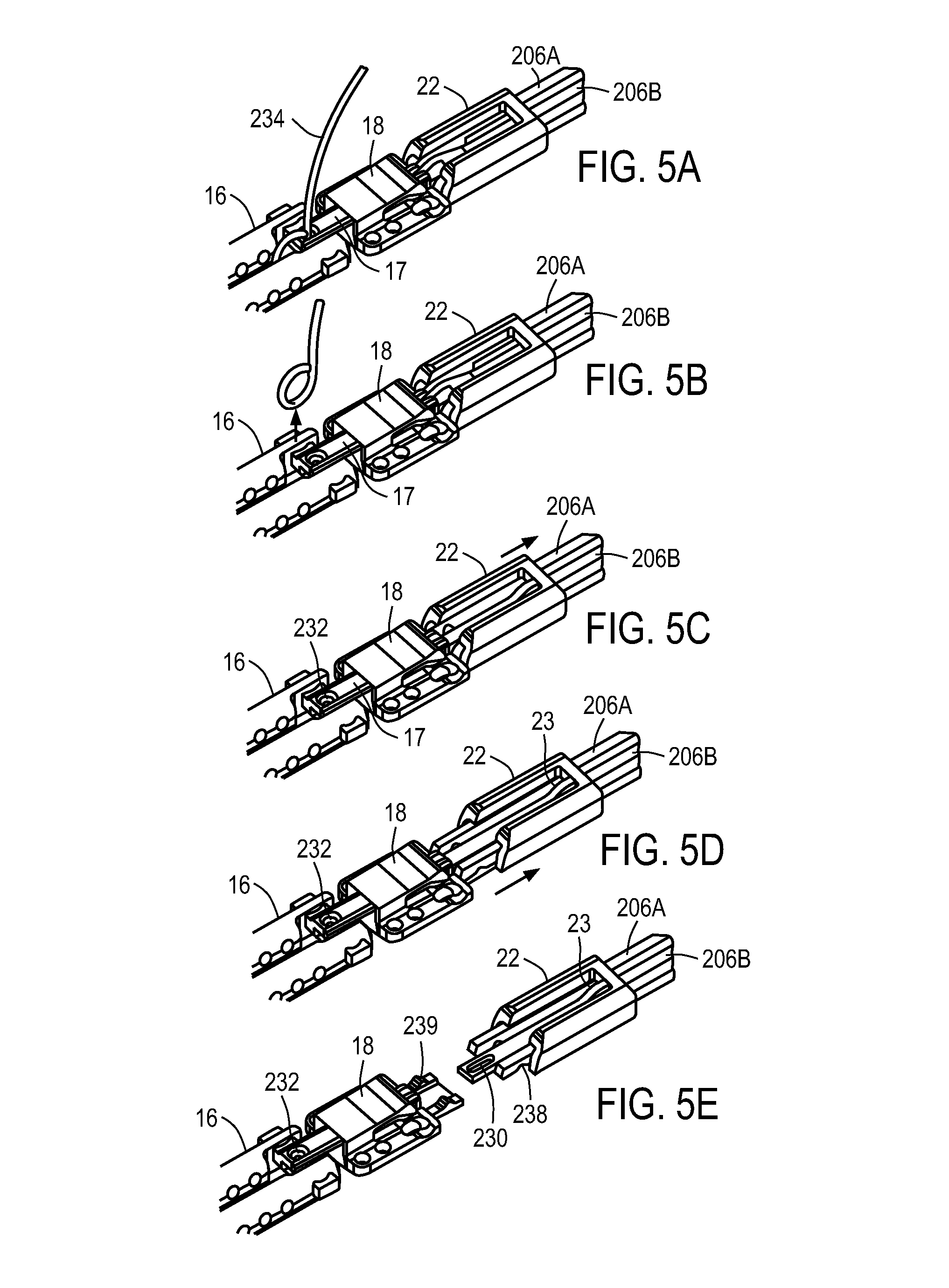
D00013

D00014
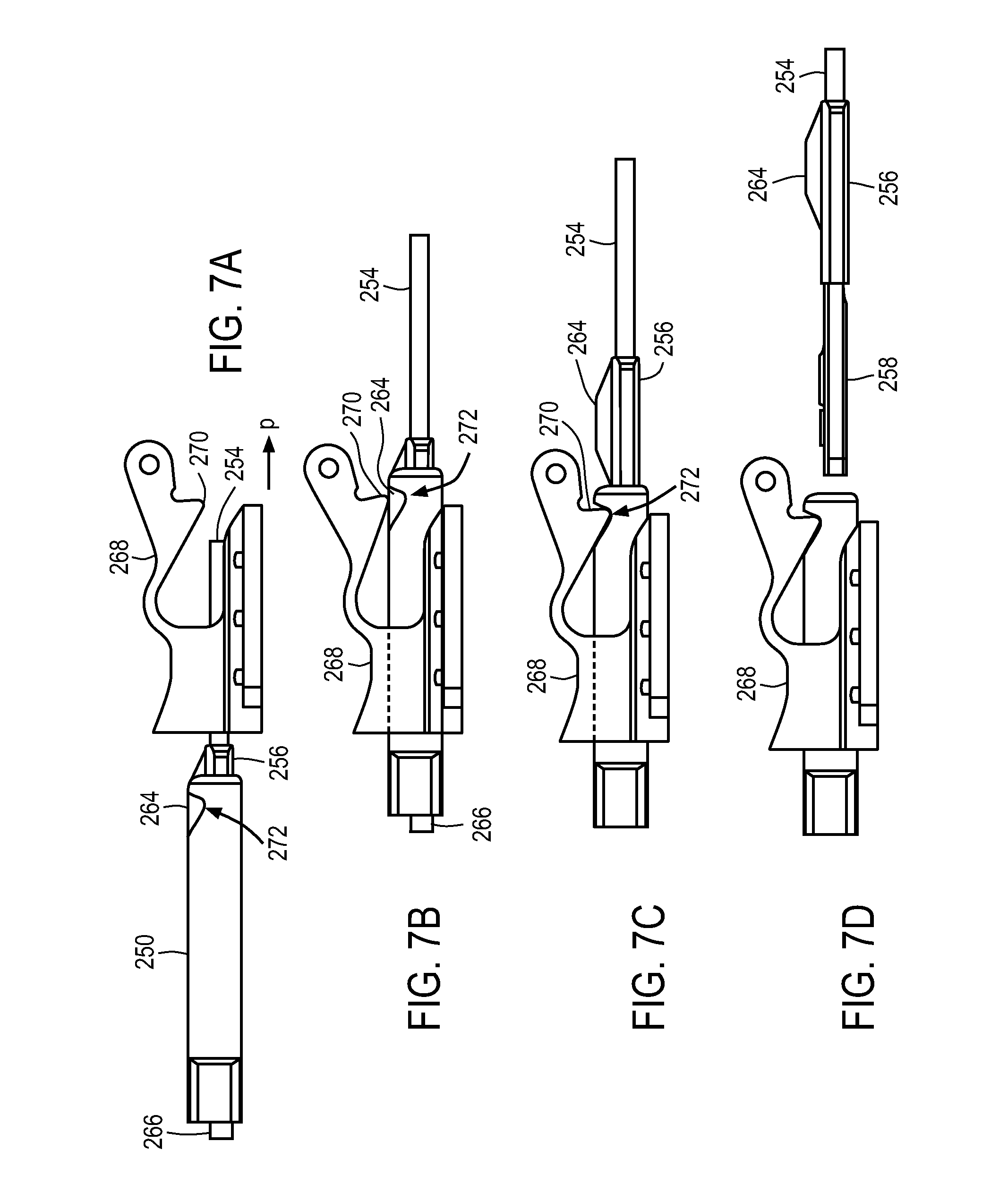
D00015

D00016

D00017

D00018
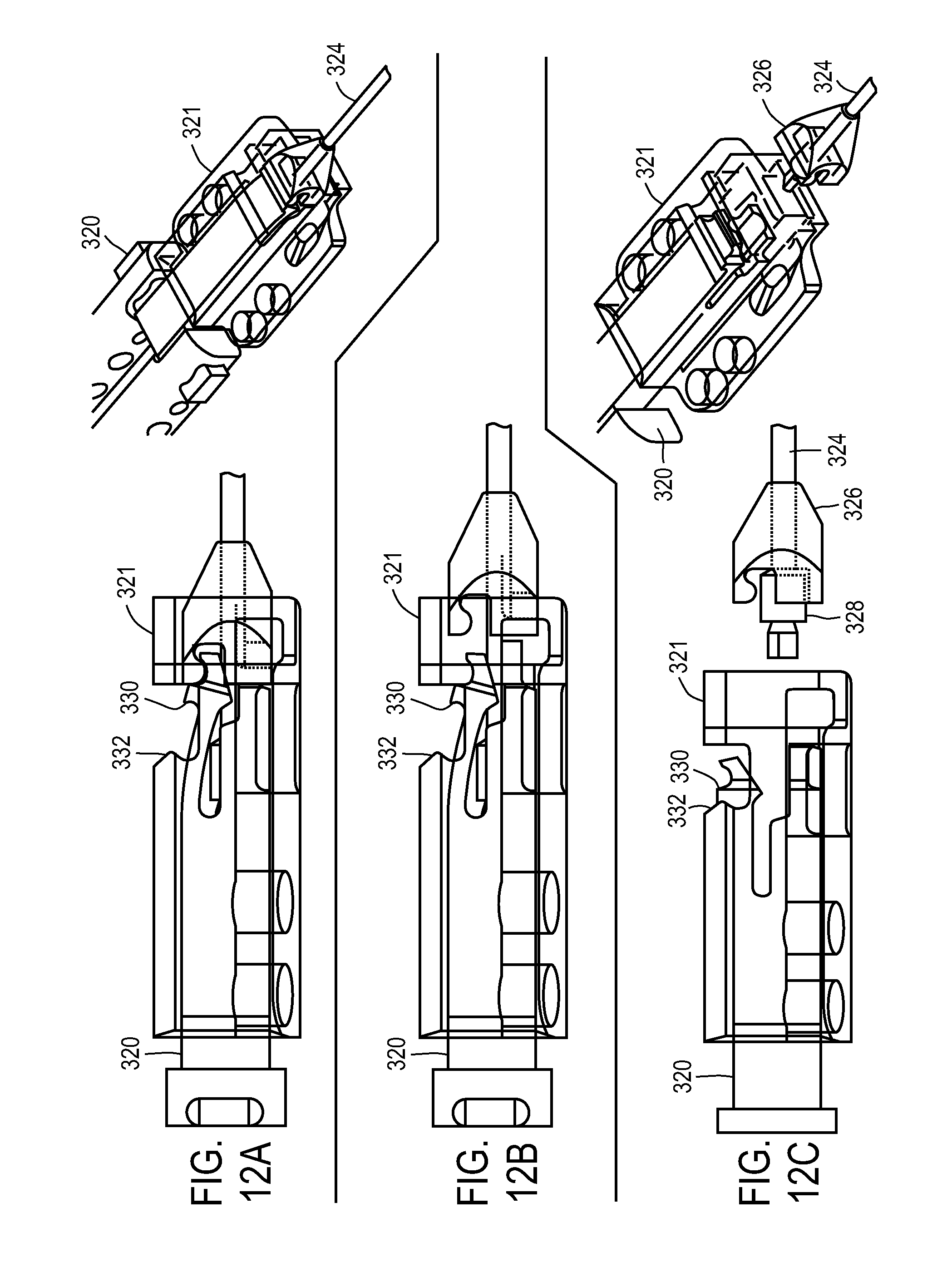
D00019
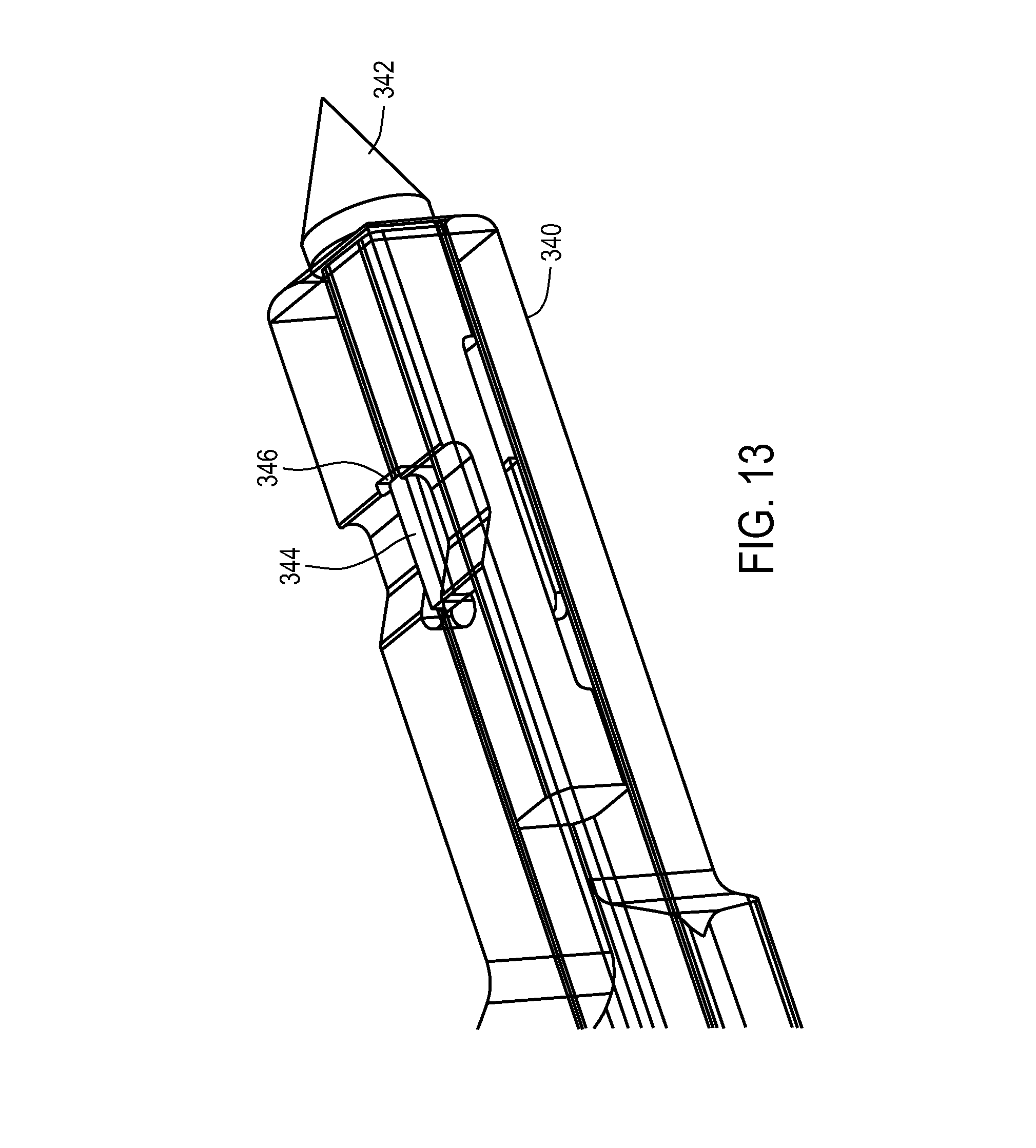
D00020
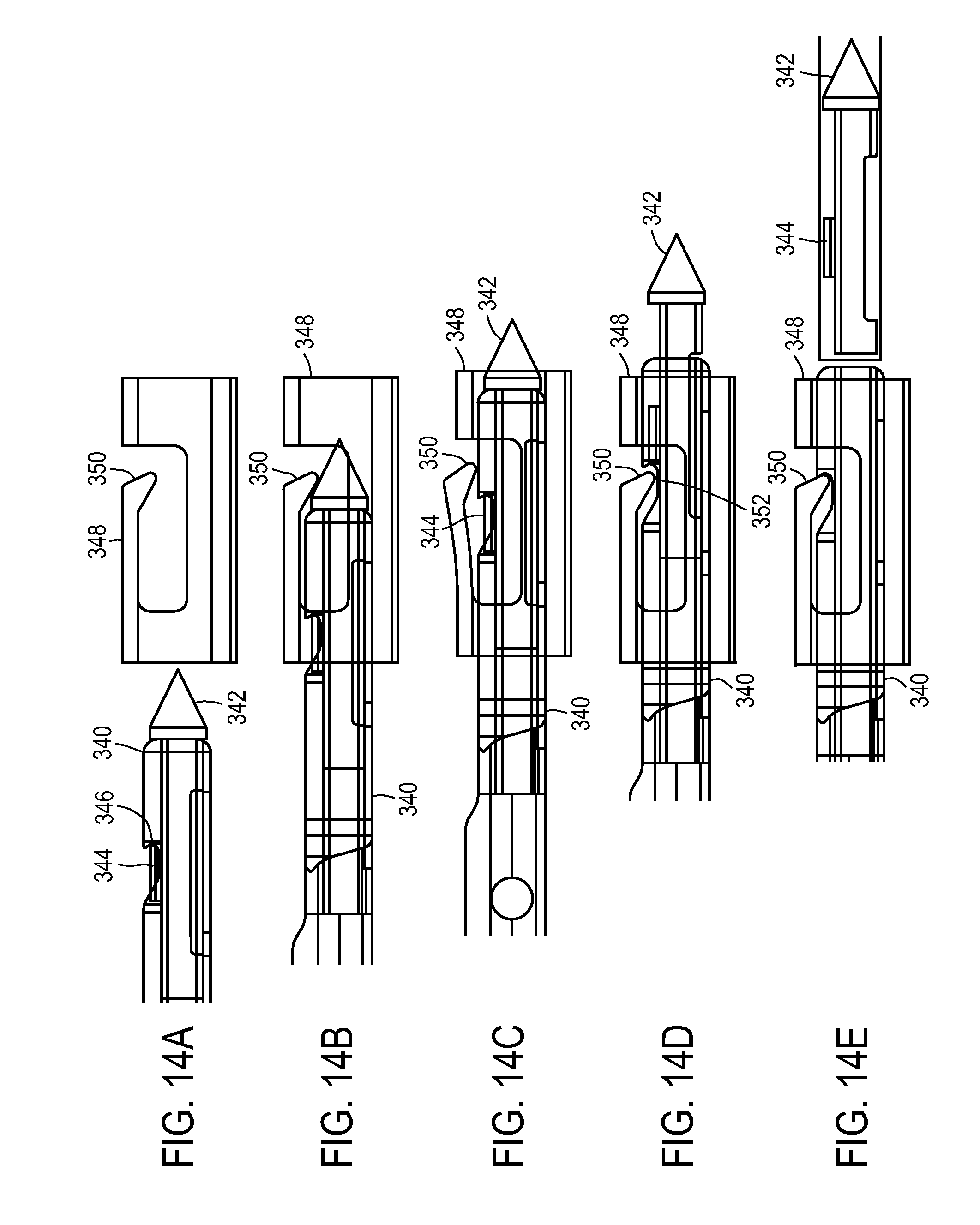
D00021

D00022
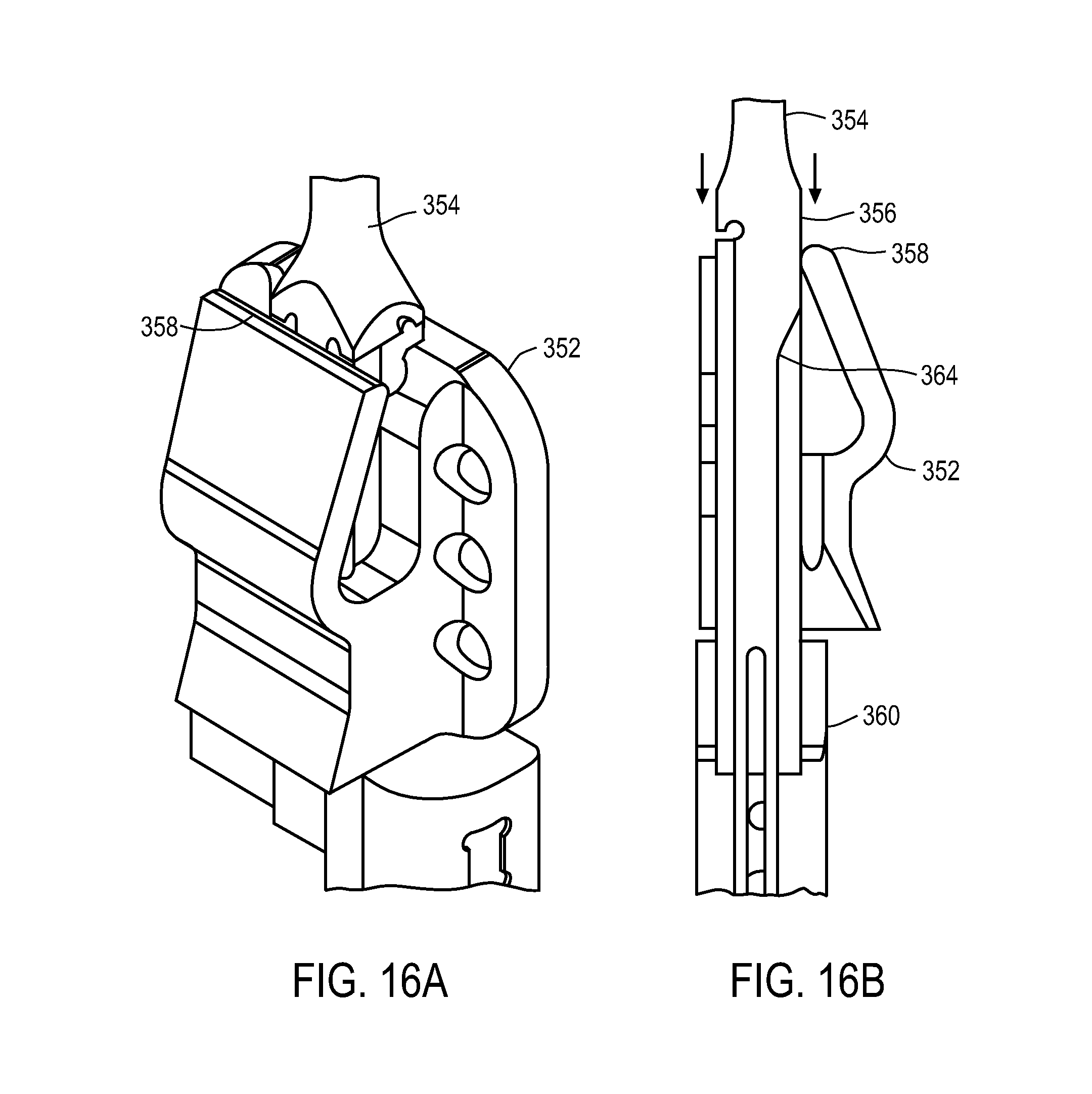
D00023
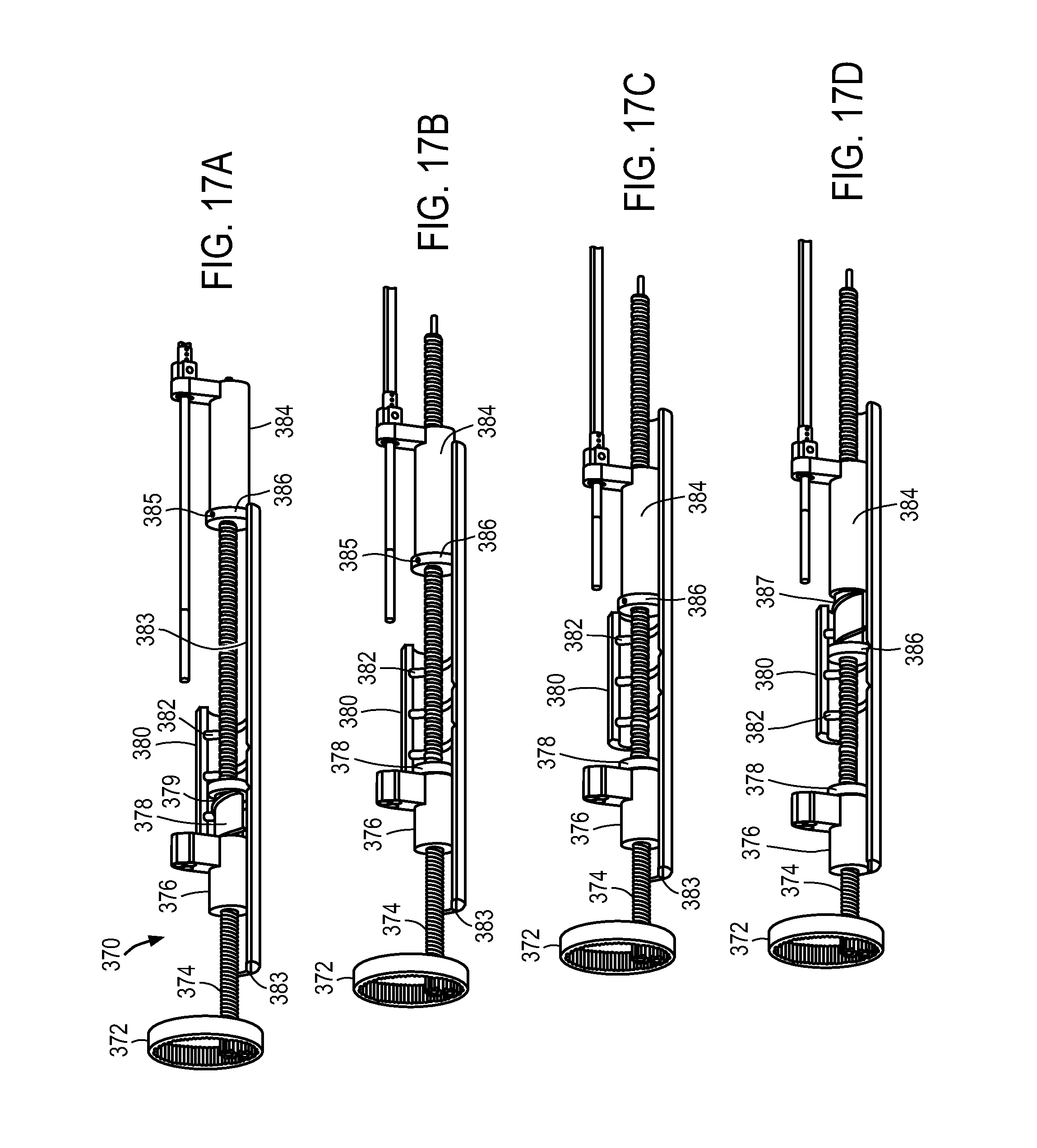
D00024

D00025
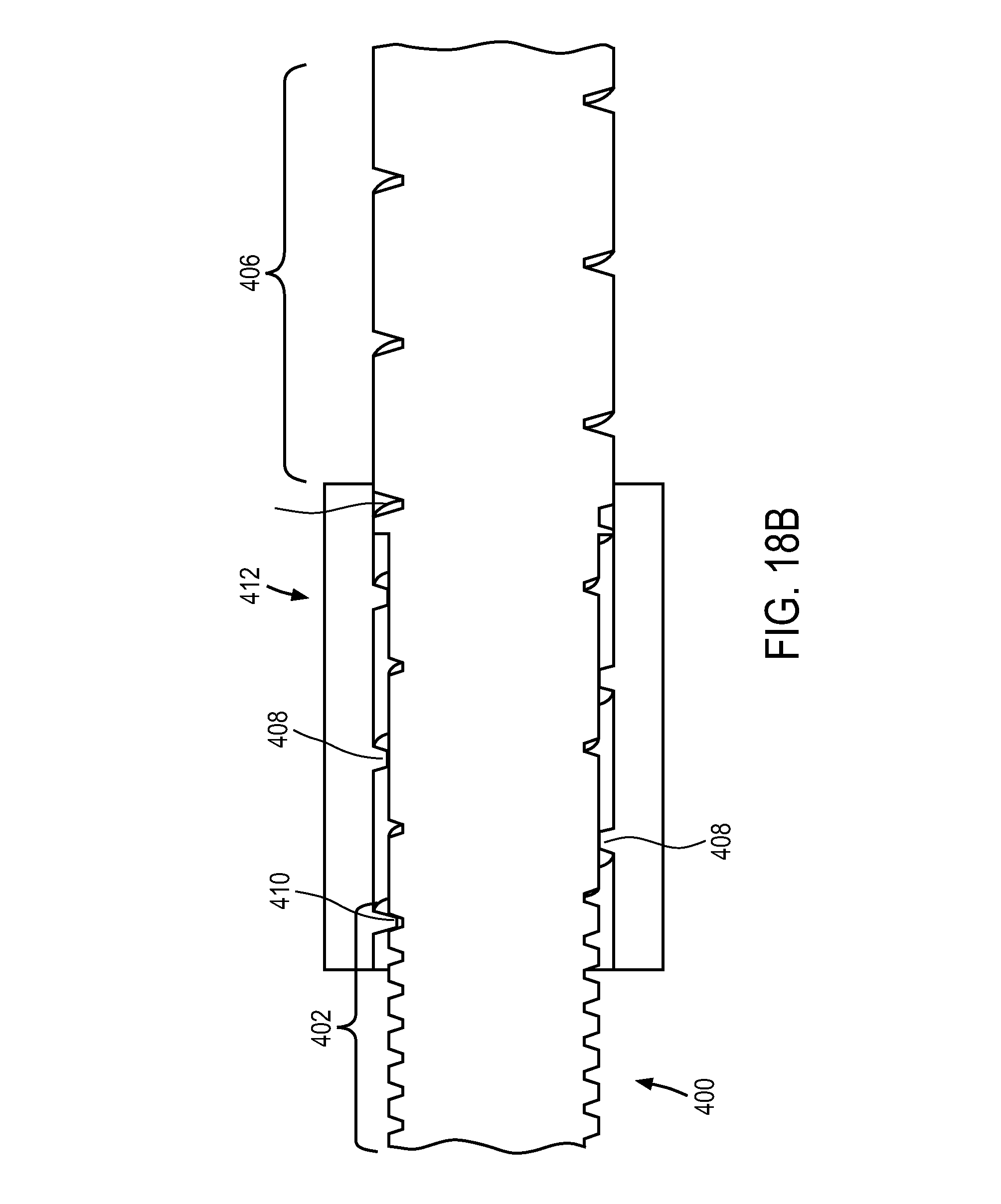
D00026
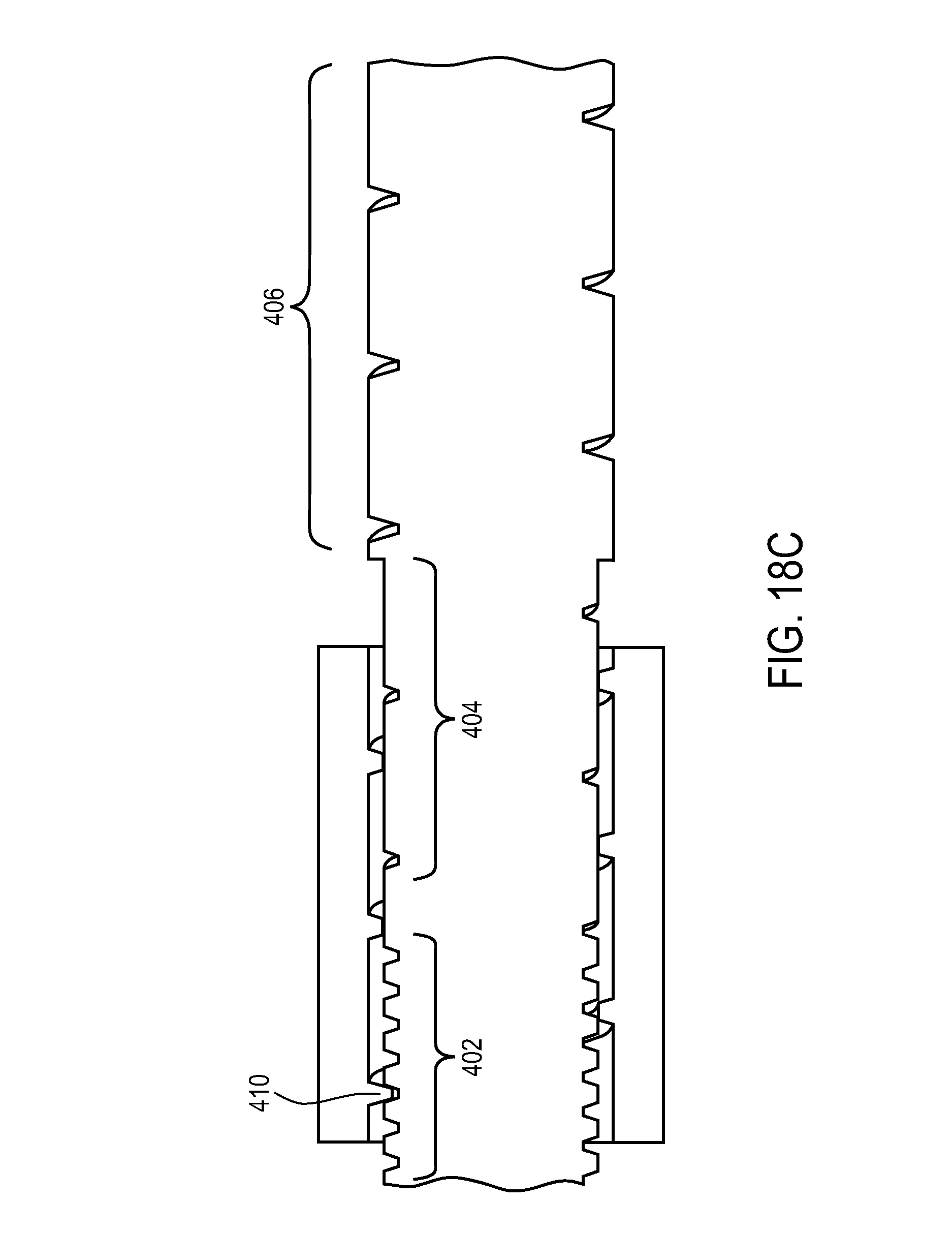
D00027
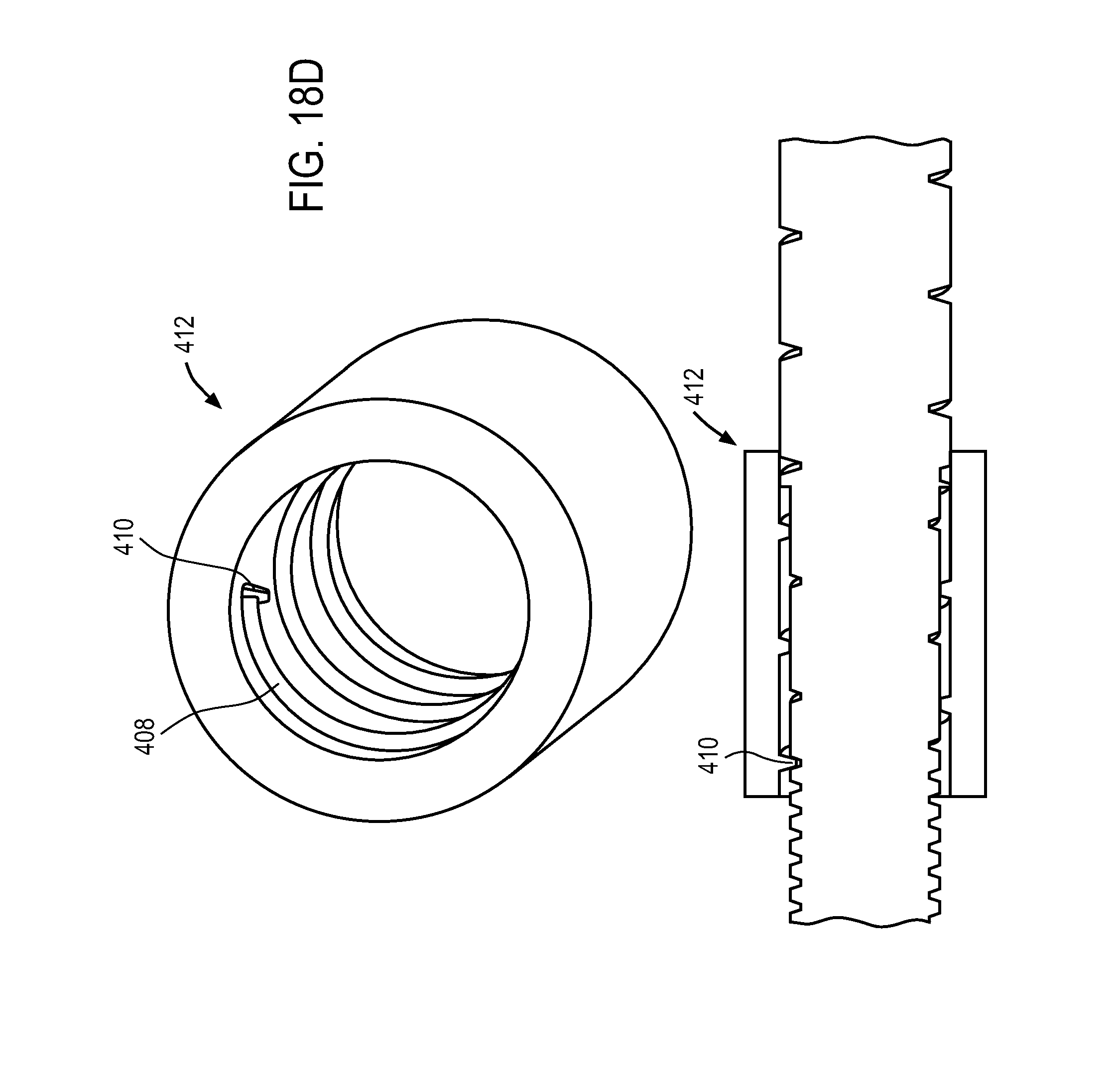
D00028
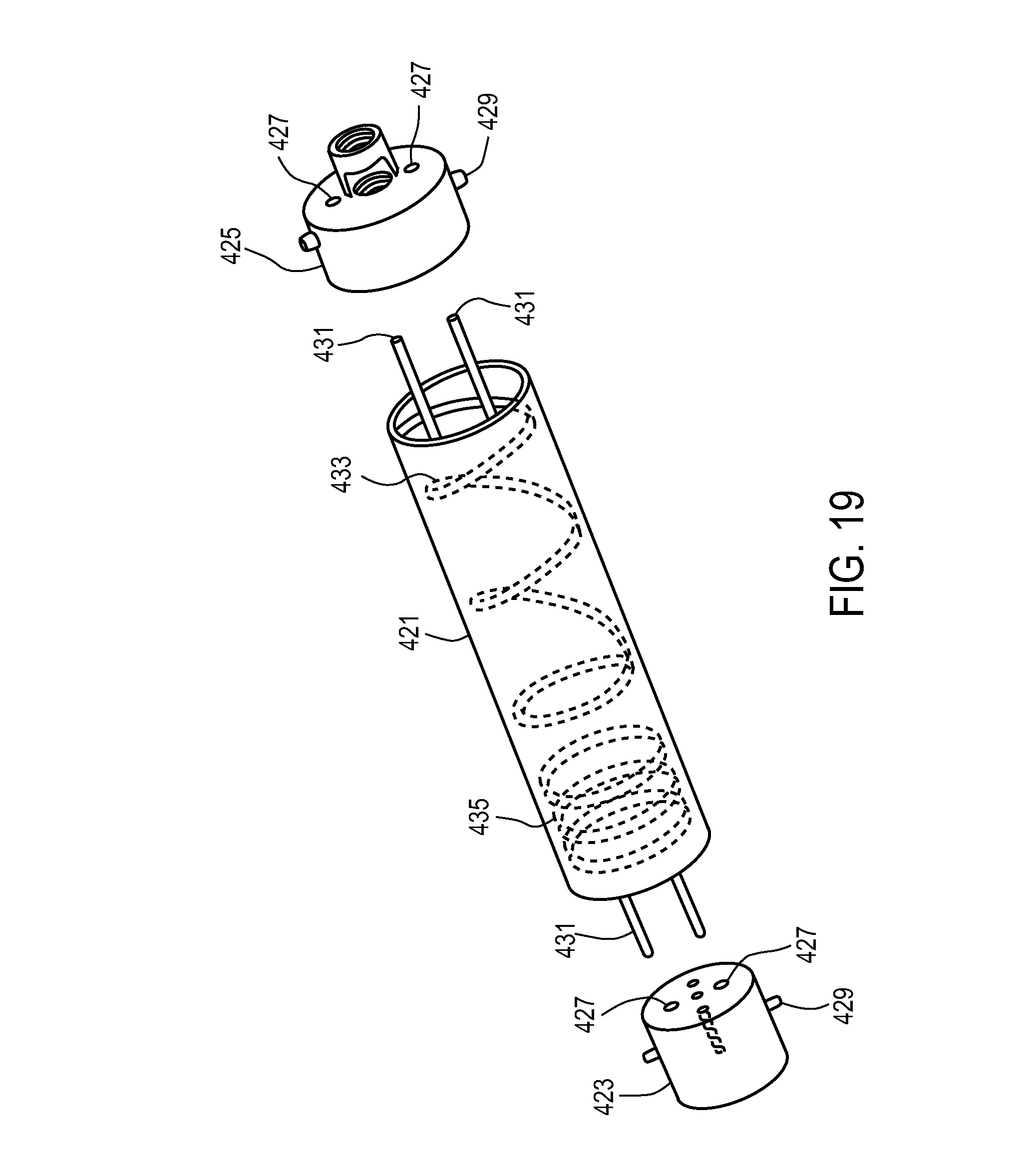
D00029
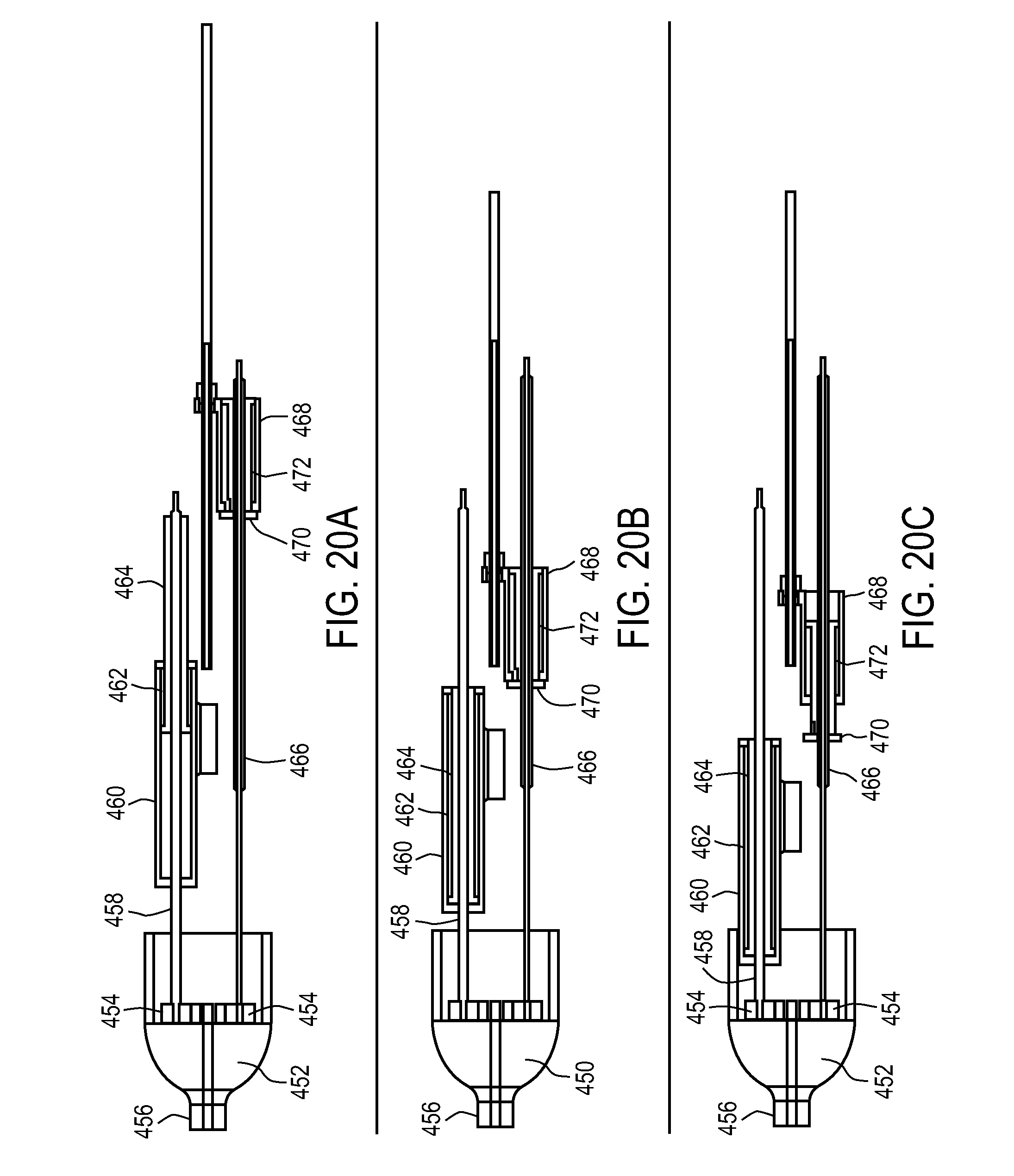
D00030
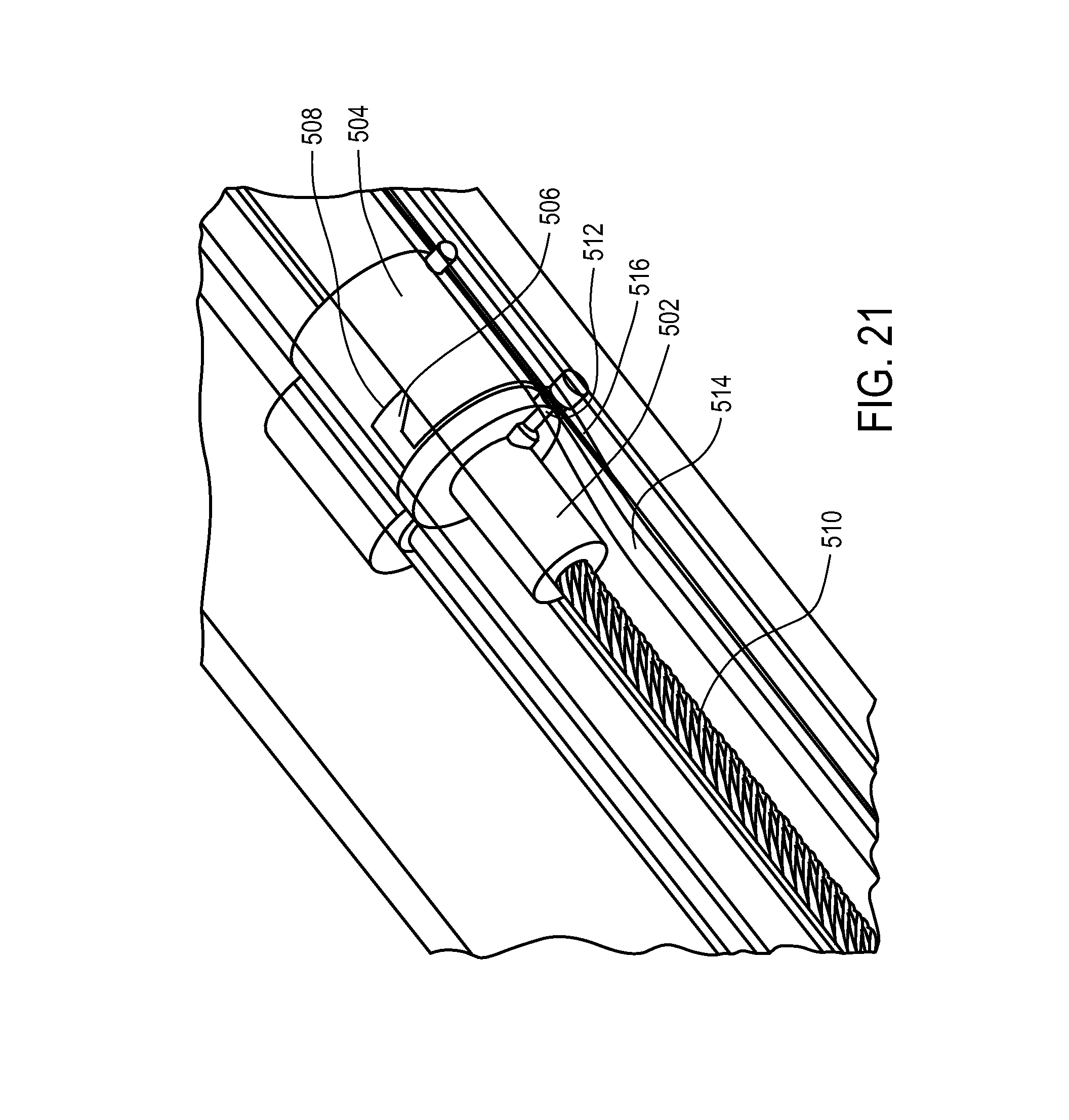
D00031
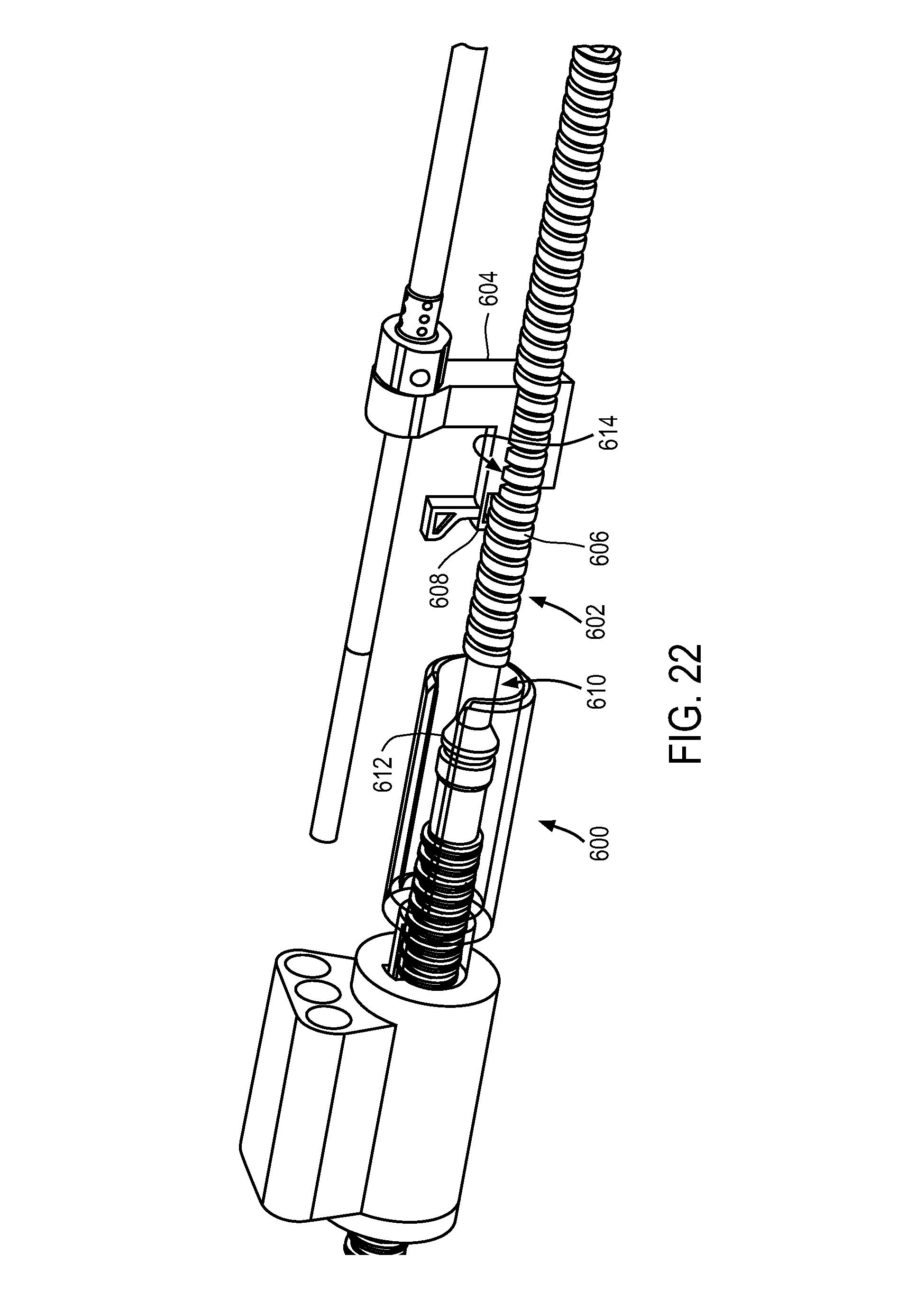
D00032

D00033

D00034
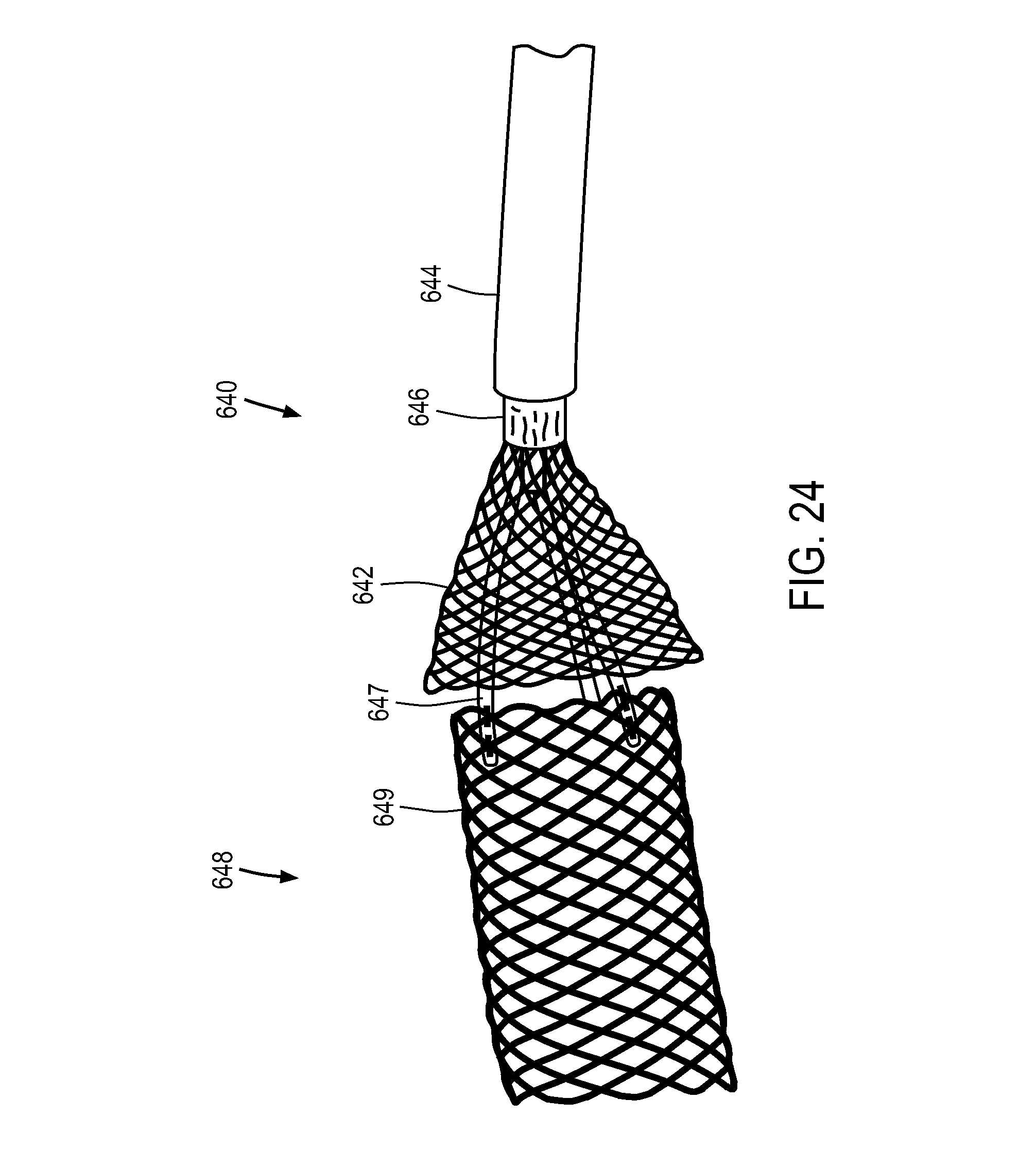
D00035

D00036

D00037
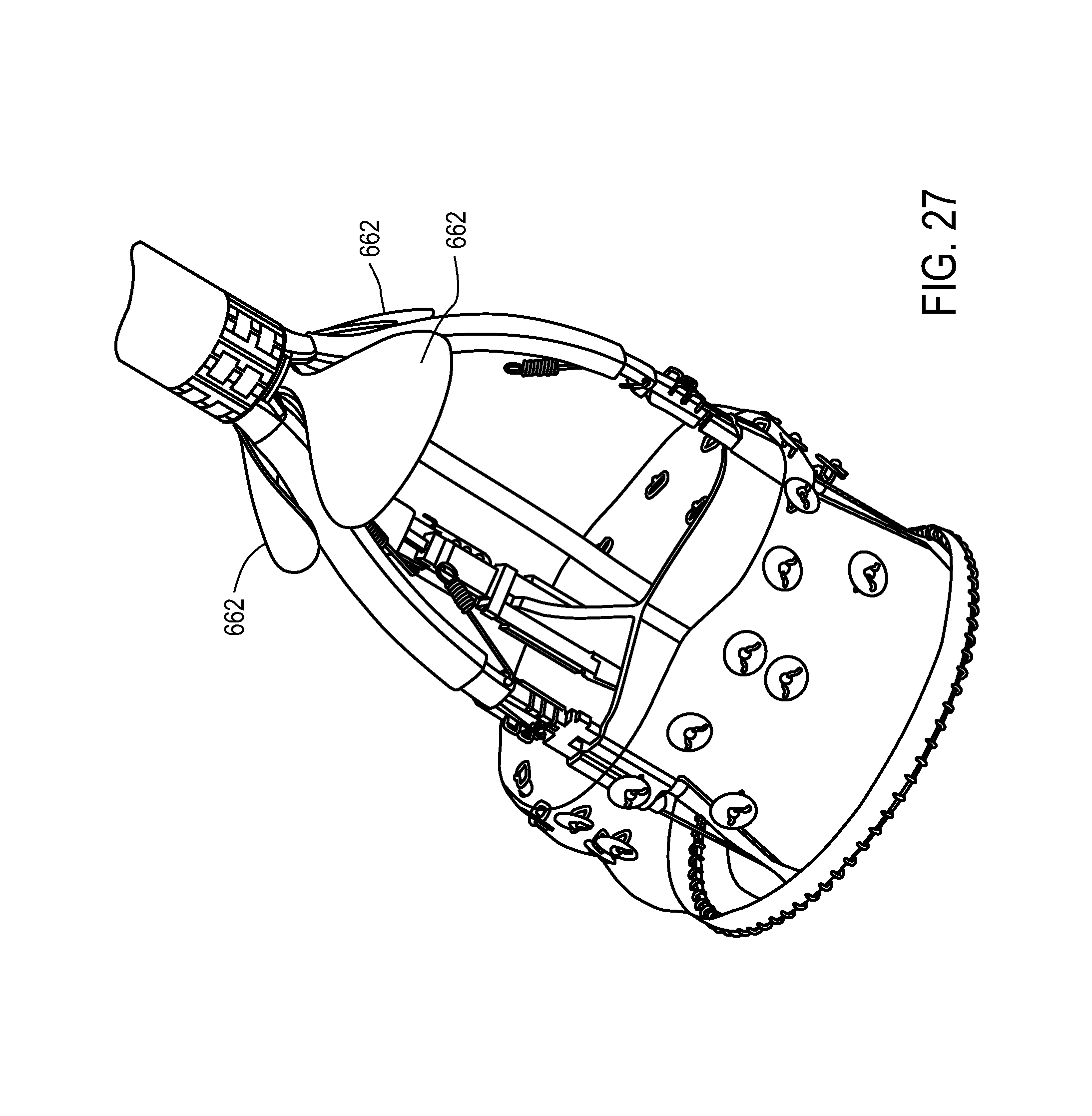
D00038

D00039
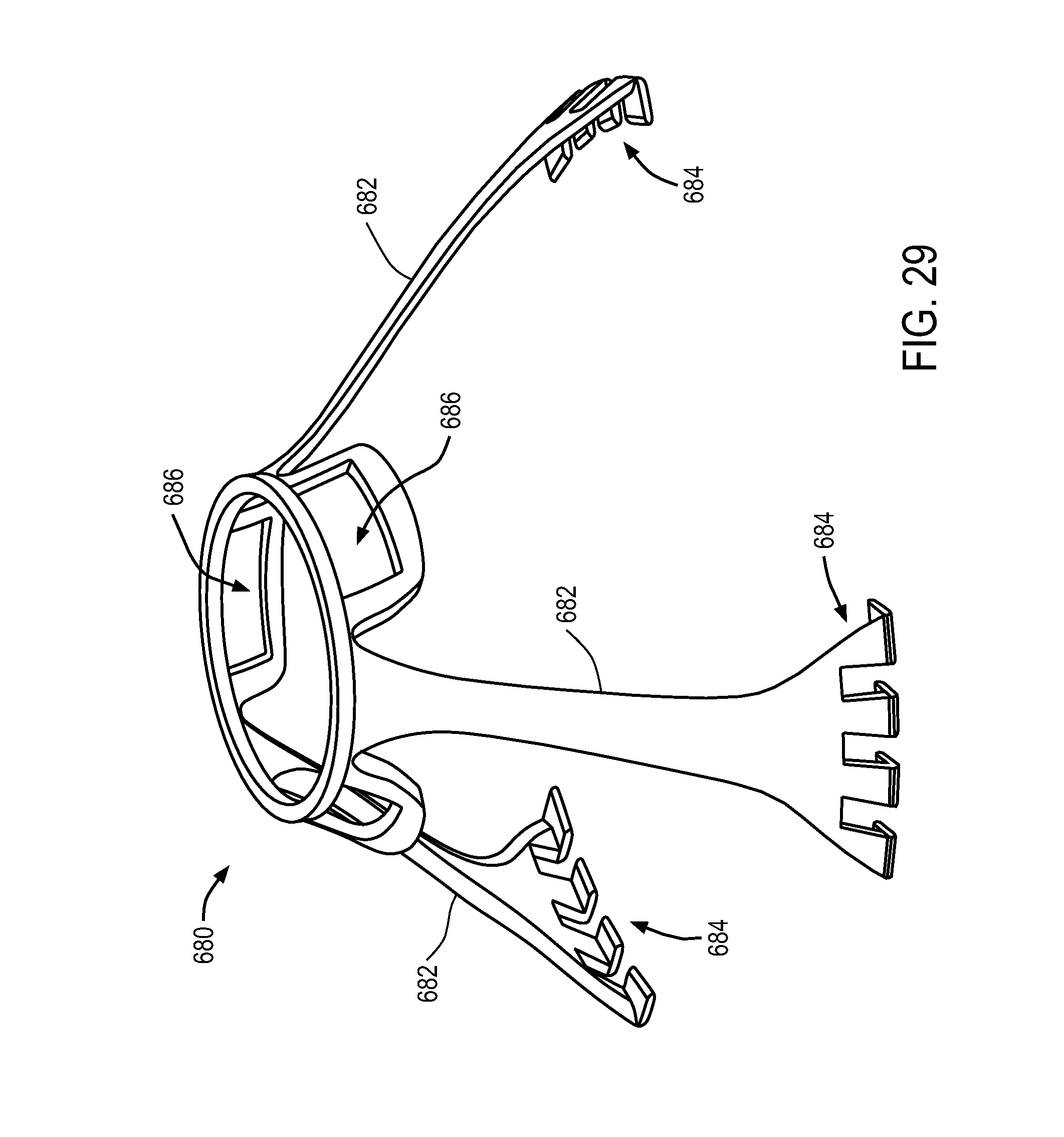
D00040

D00041
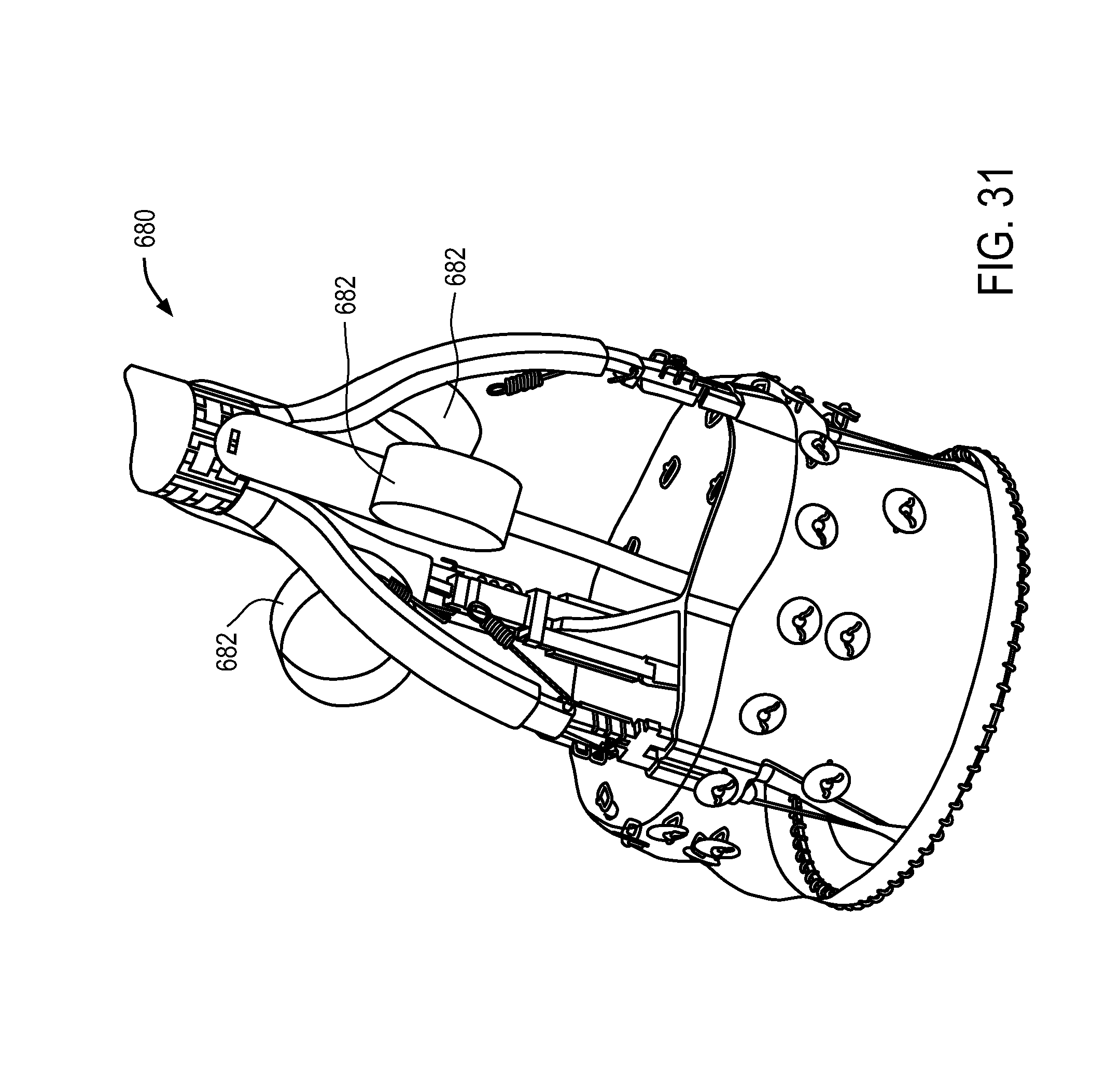
D00042
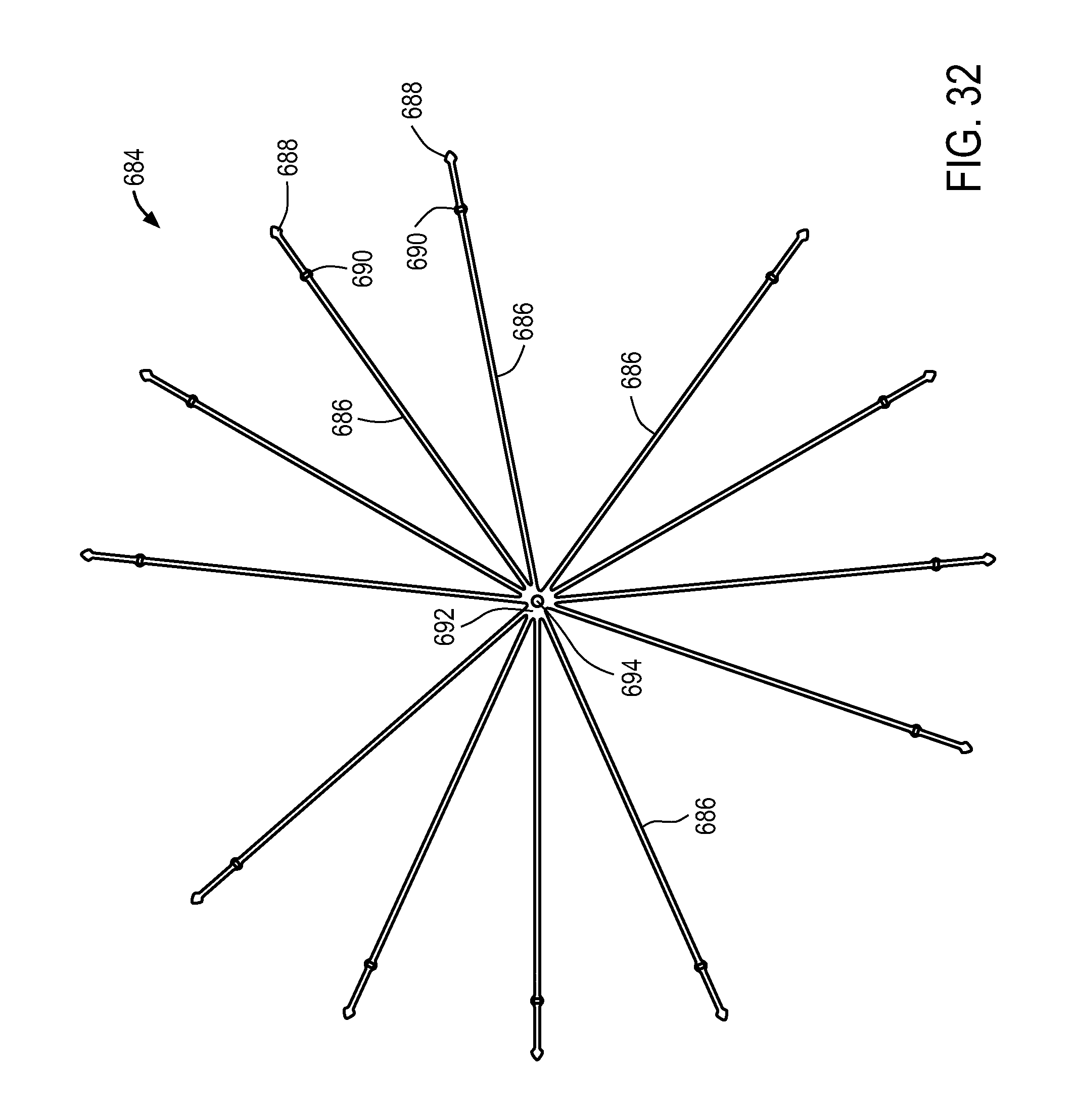
D00043
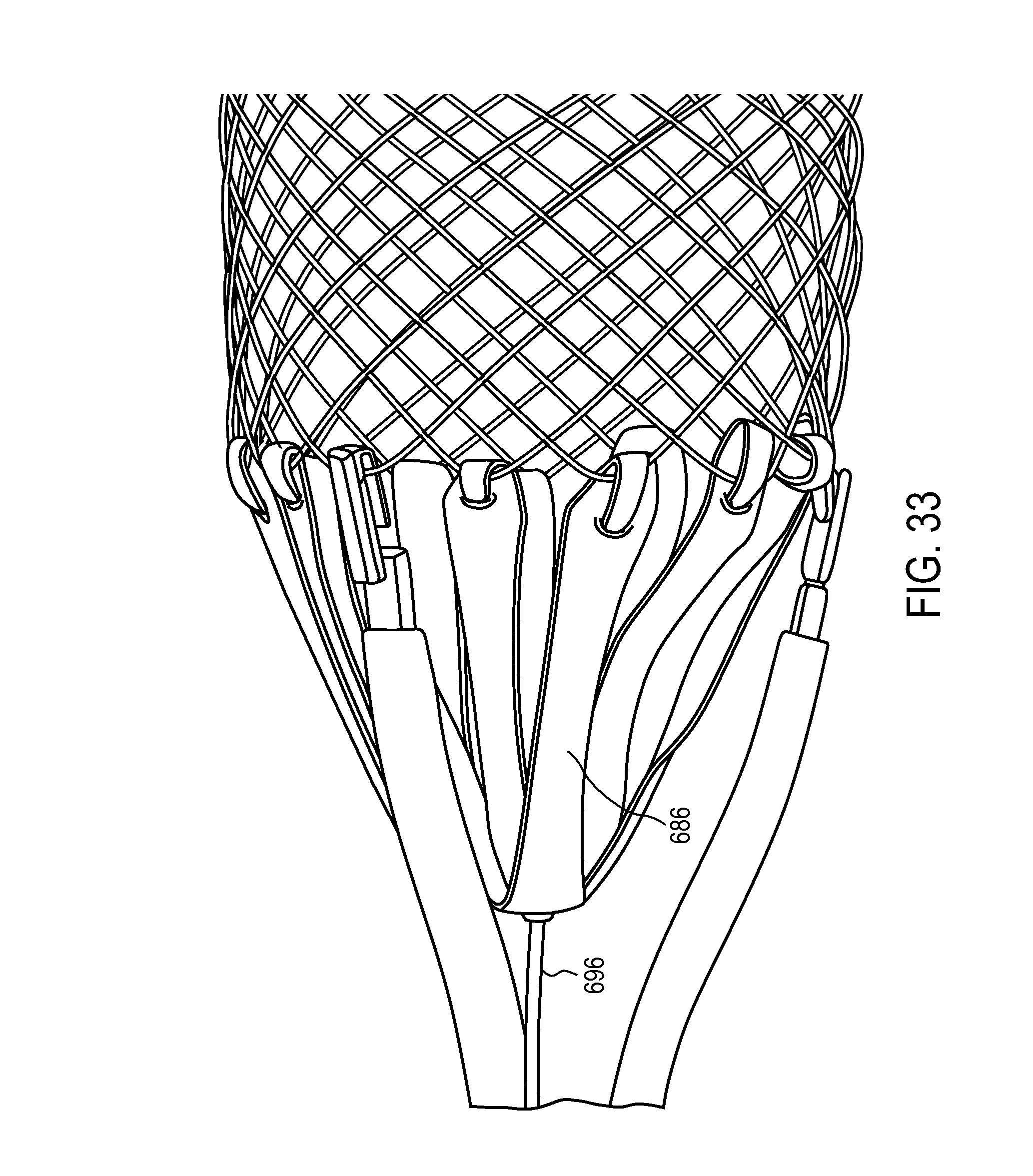
D00044
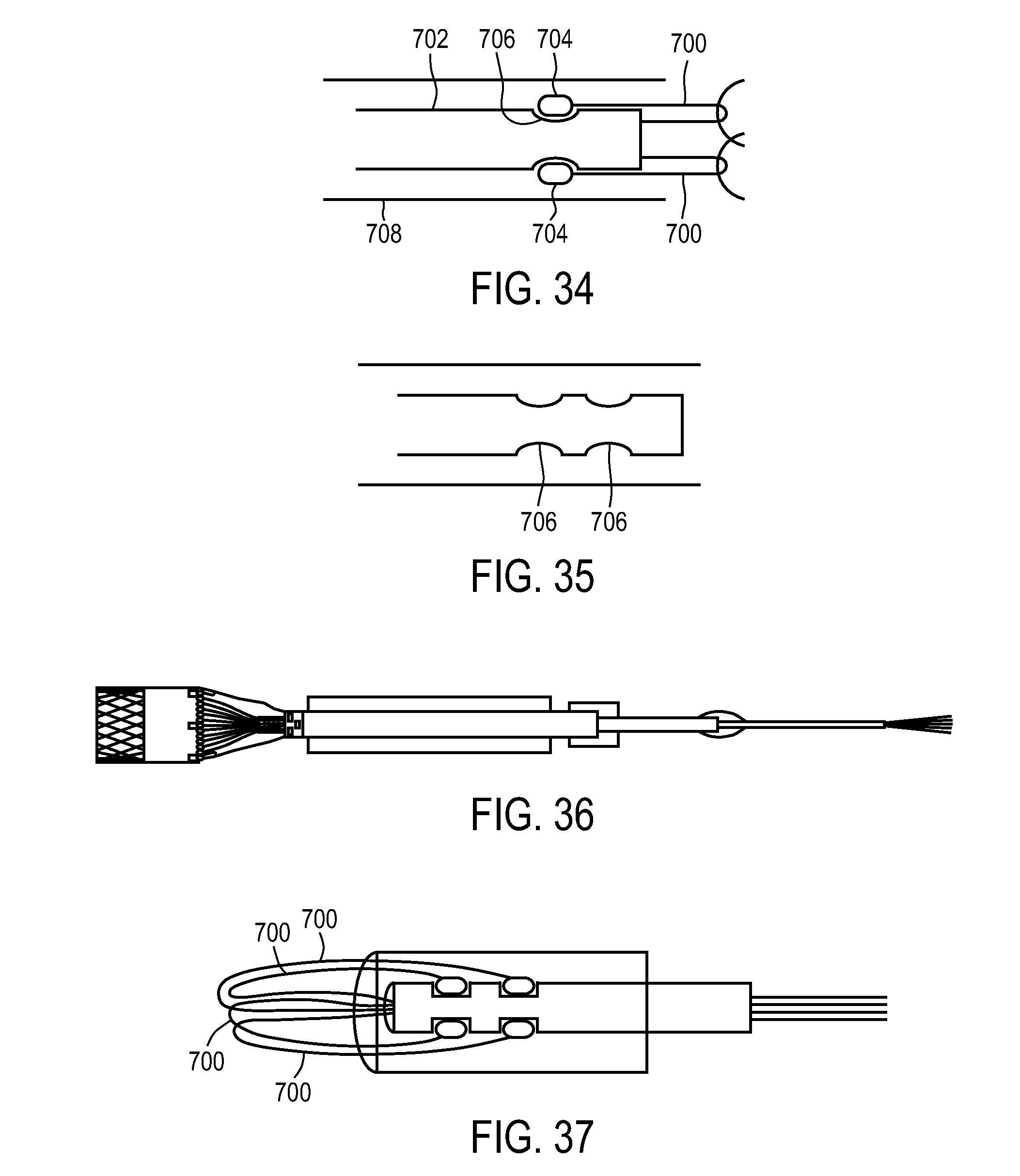
D00045

XML
uspto.report is an independent third-party trademark research tool that is not affiliated, endorsed, or sponsored by the United States Patent and Trademark Office (USPTO) or any other governmental organization. The information provided by uspto.report is based on publicly available data at the time of writing and is intended for informational purposes only.
While we strive to provide accurate and up-to-date information, we do not guarantee the accuracy, completeness, reliability, or suitability of the information displayed on this site. The use of this site is at your own risk. Any reliance you place on such information is therefore strictly at your own risk.
All official trademark data, including owner information, should be verified by visiting the official USPTO website at www.uspto.gov. This site is not intended to replace professional legal advice and should not be used as a substitute for consulting with a legal professional who is knowledgeable about trademark law.